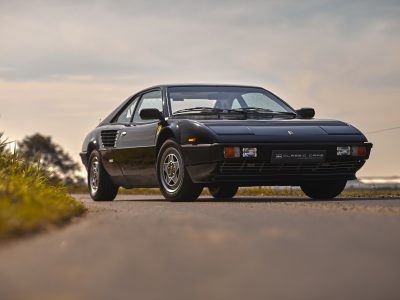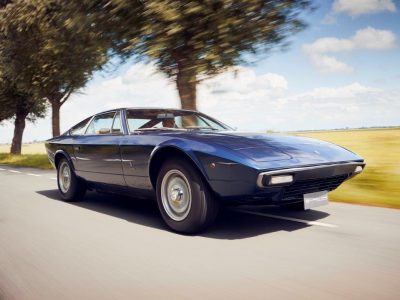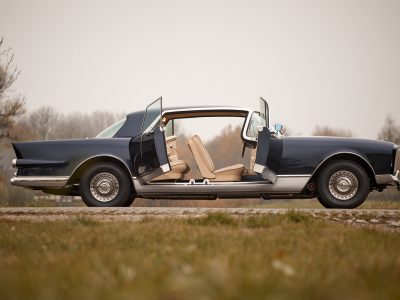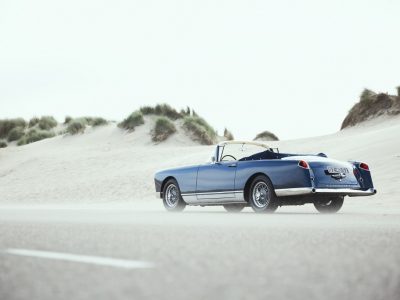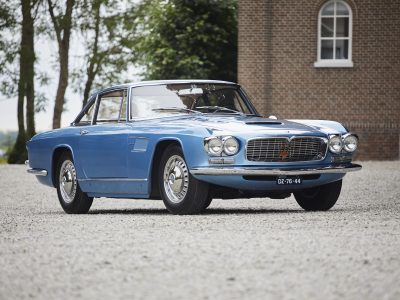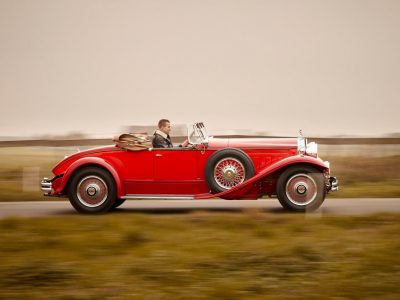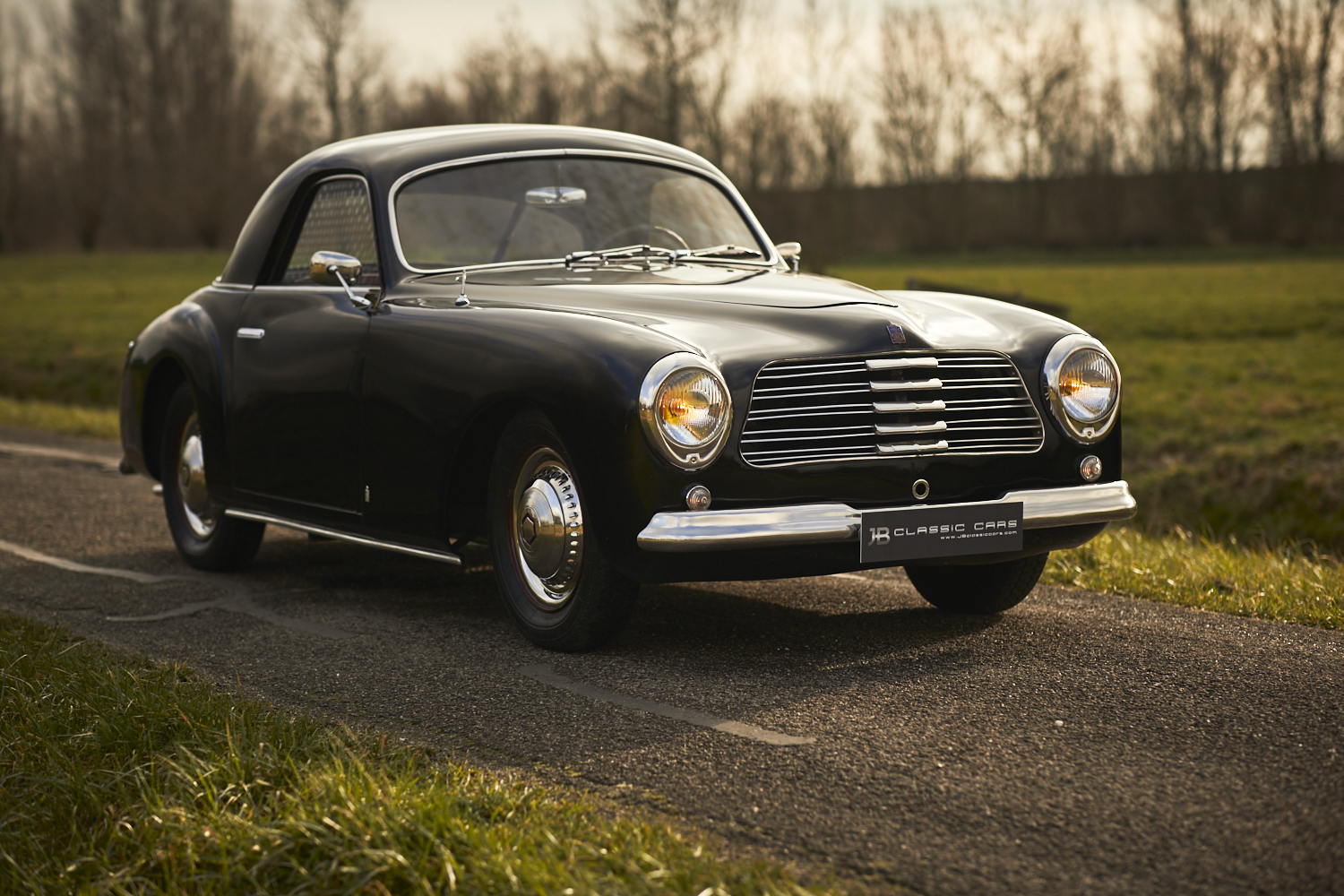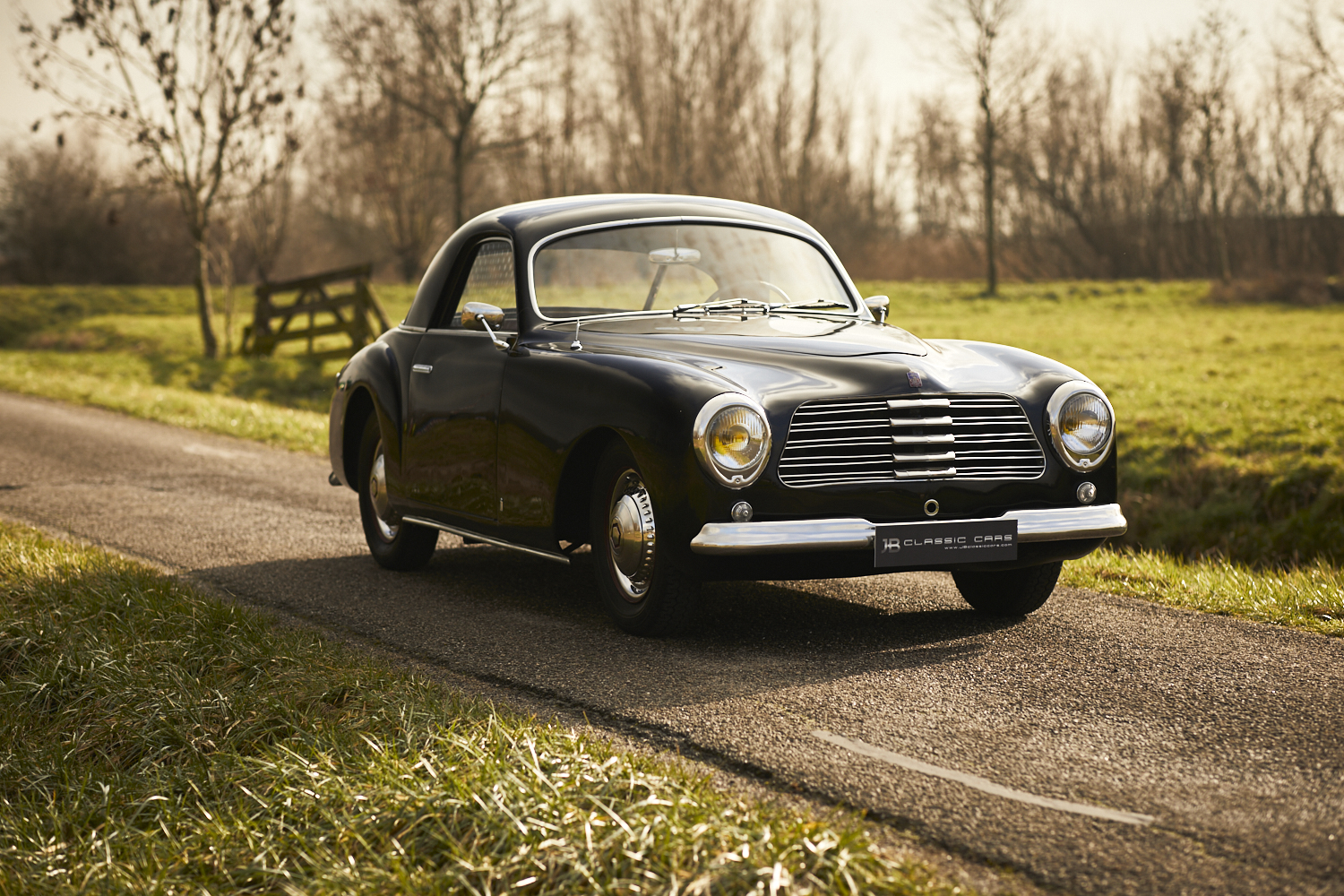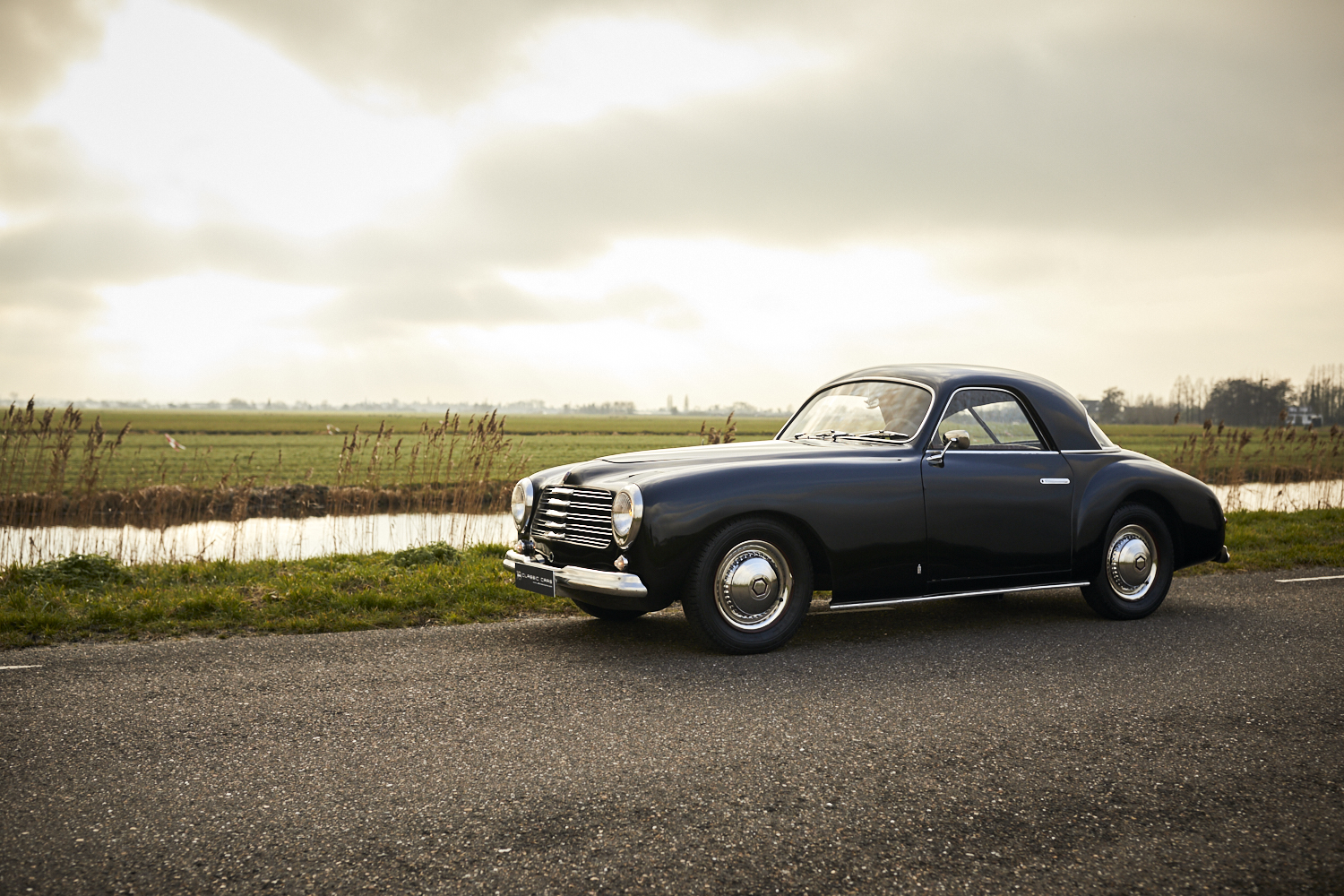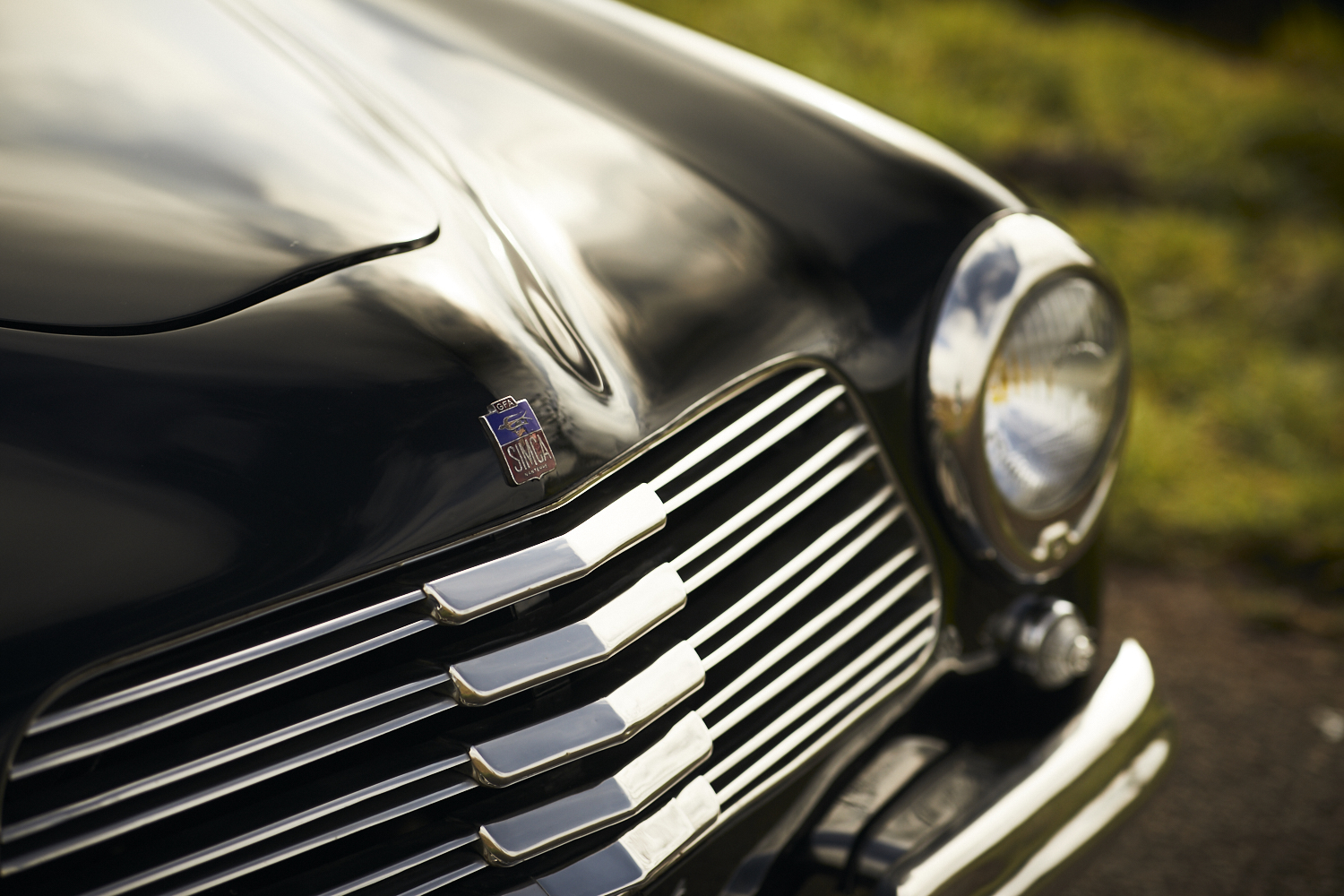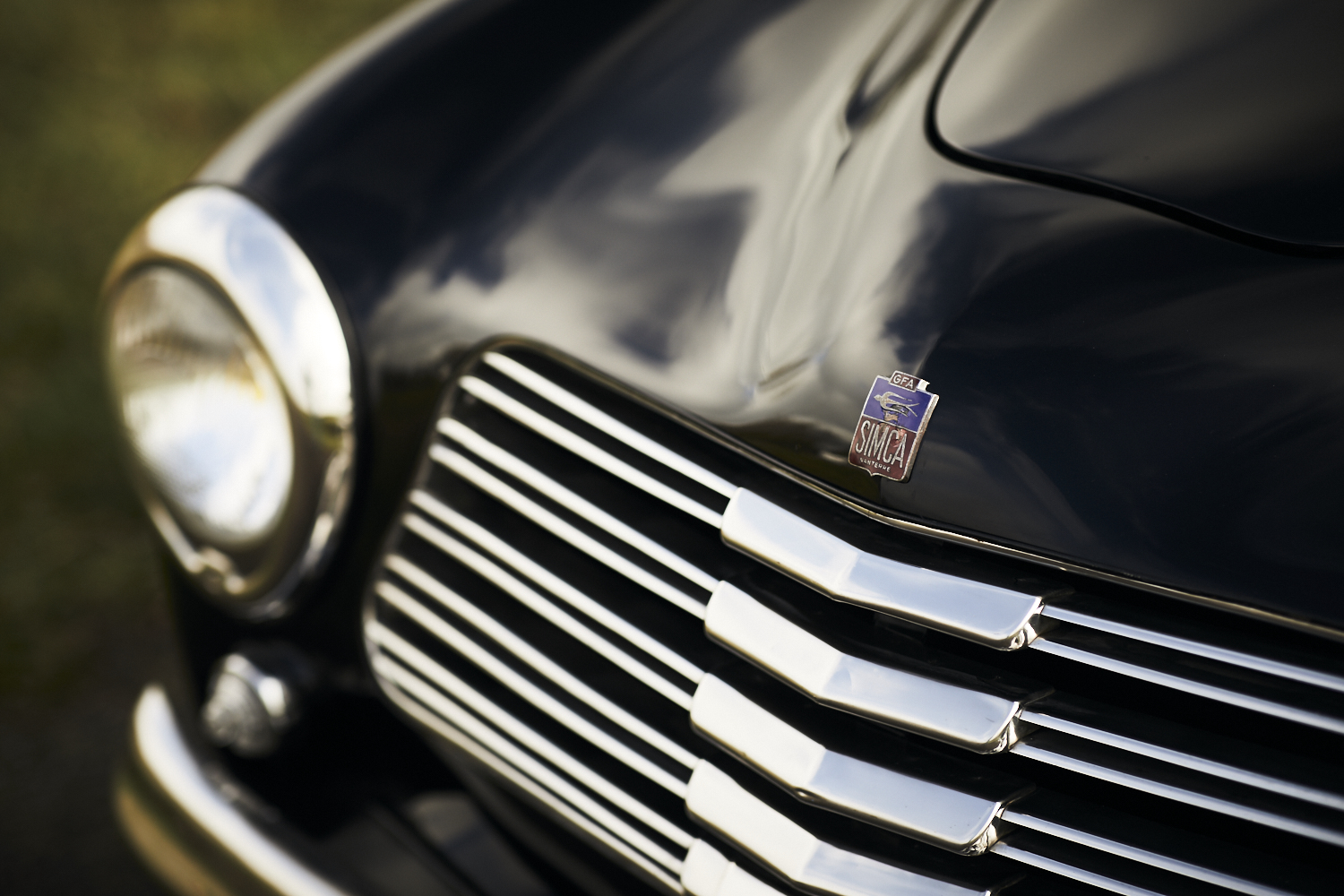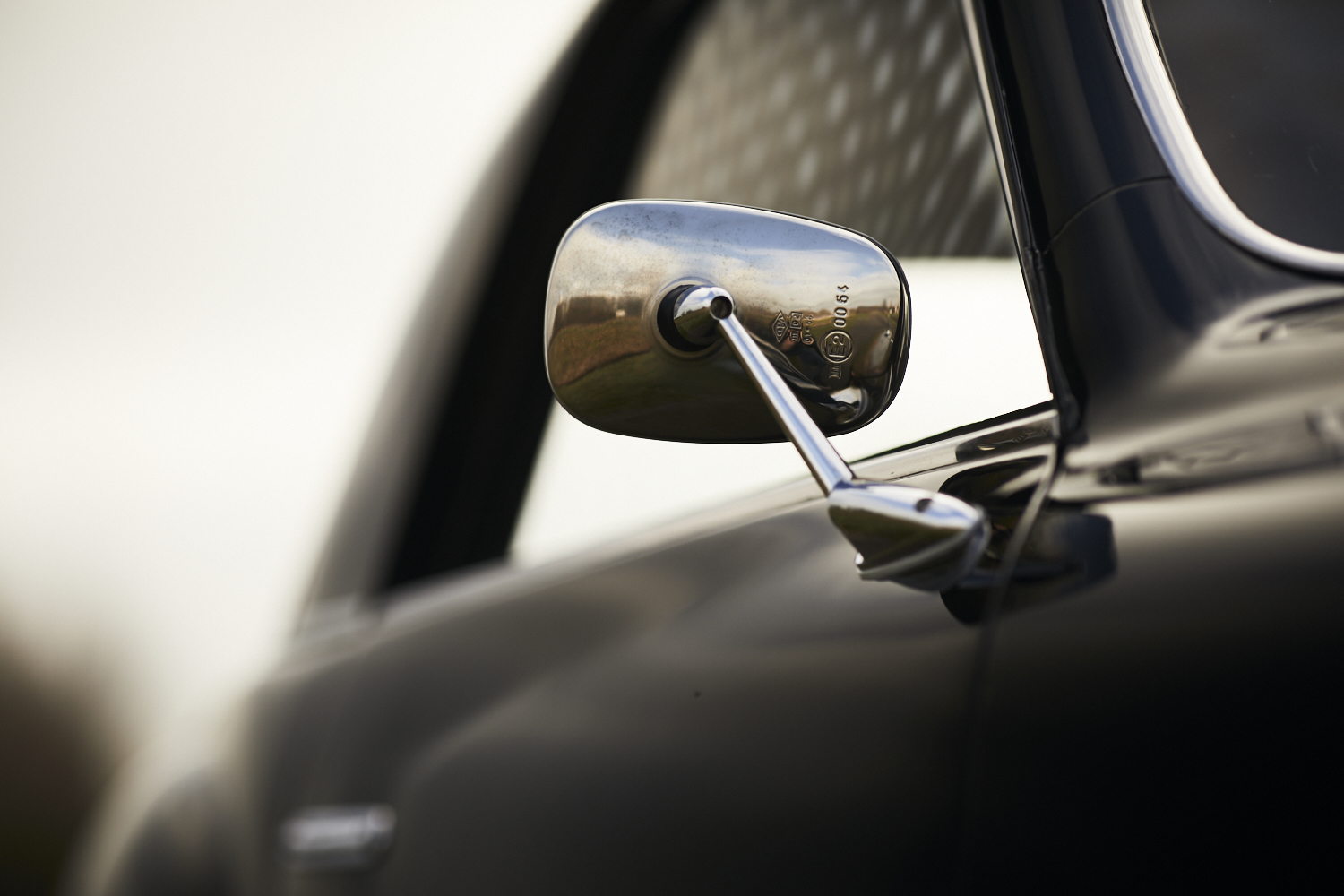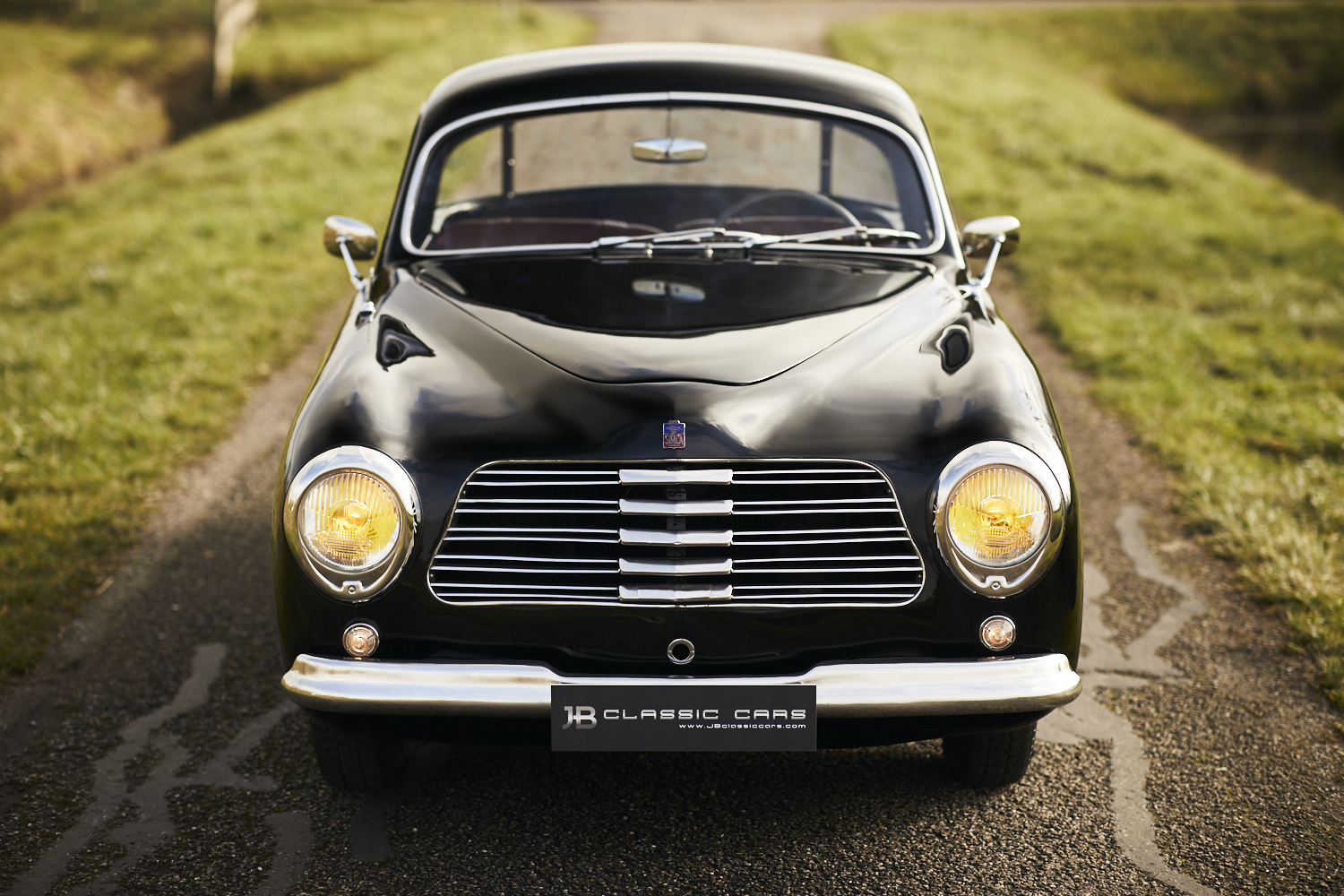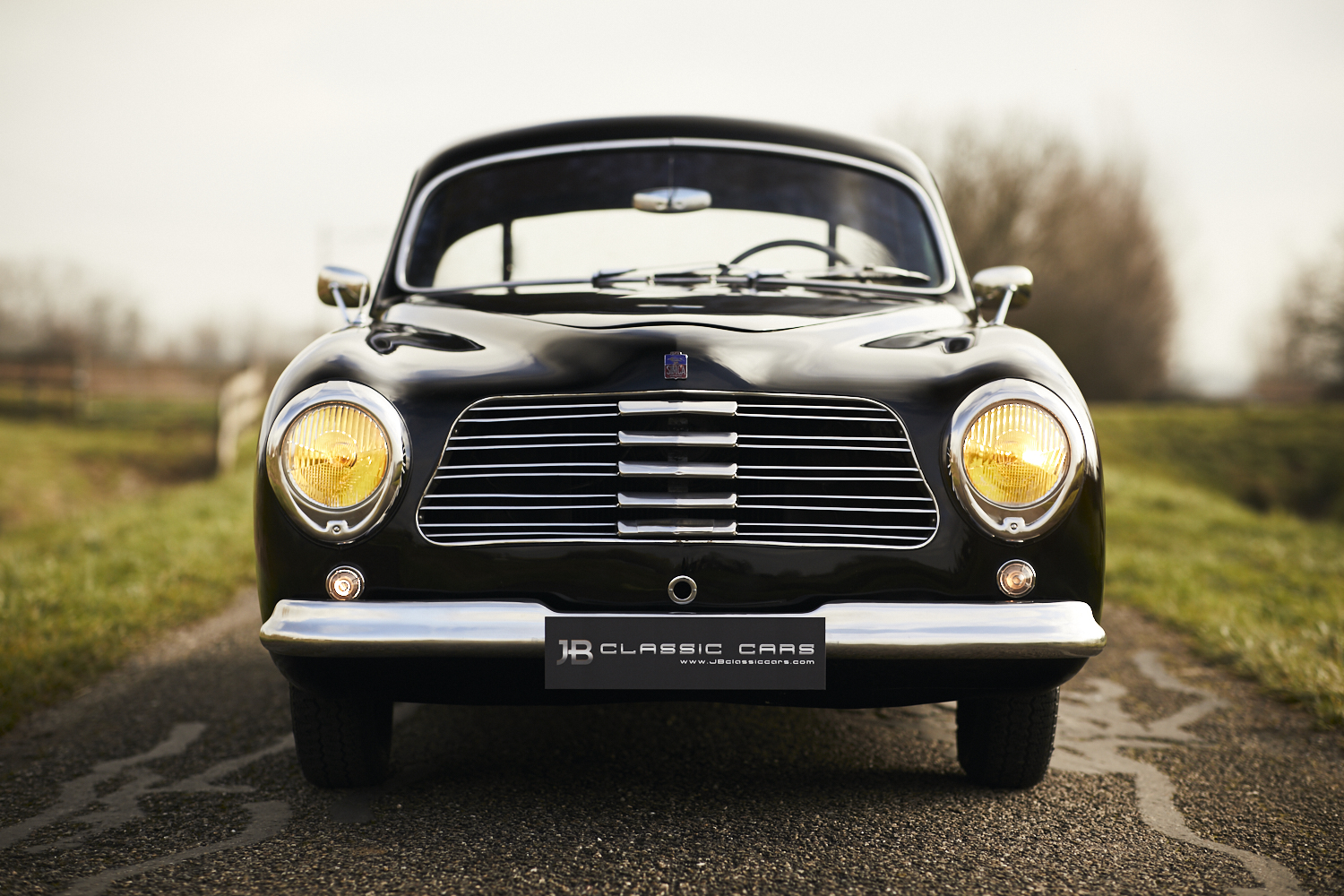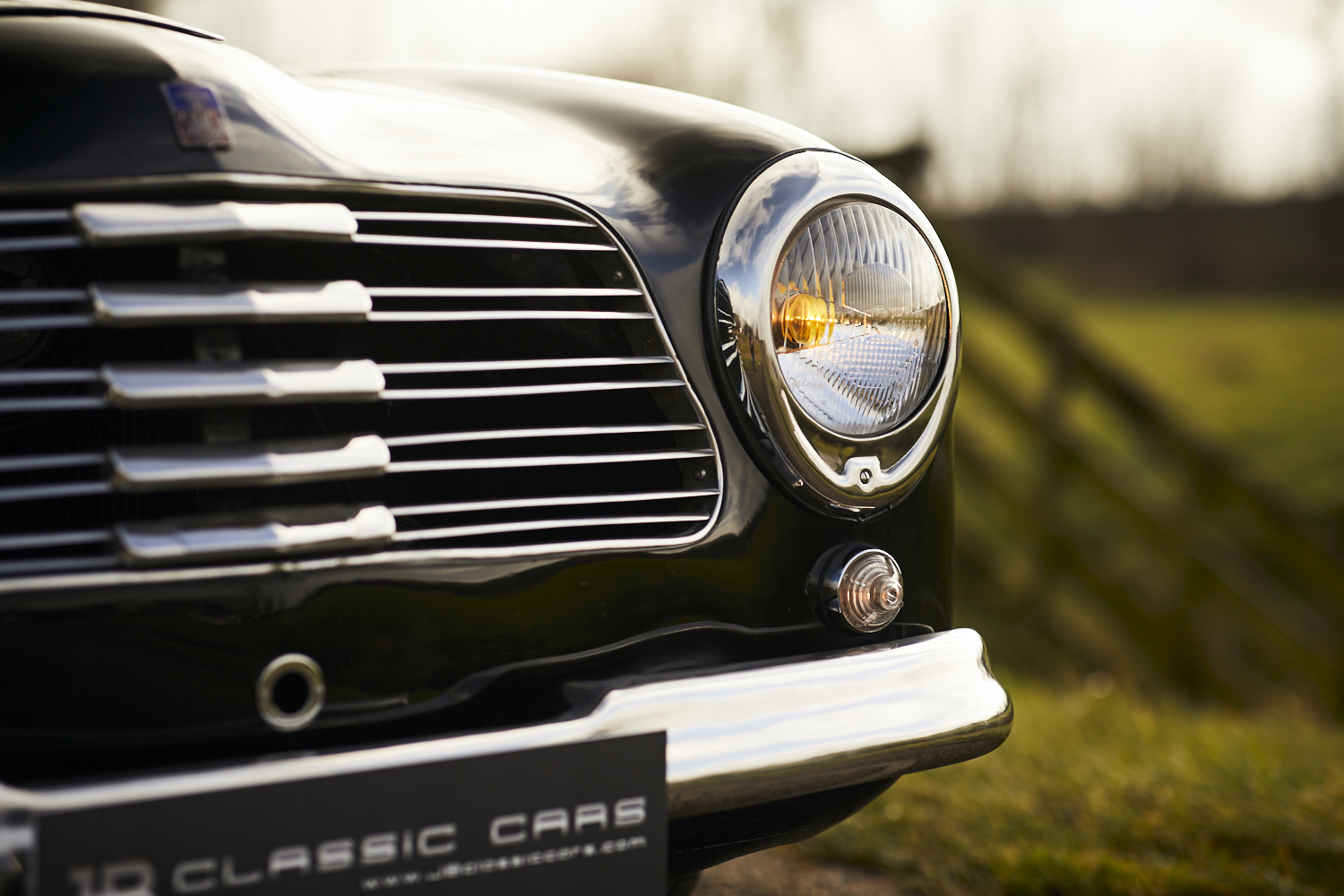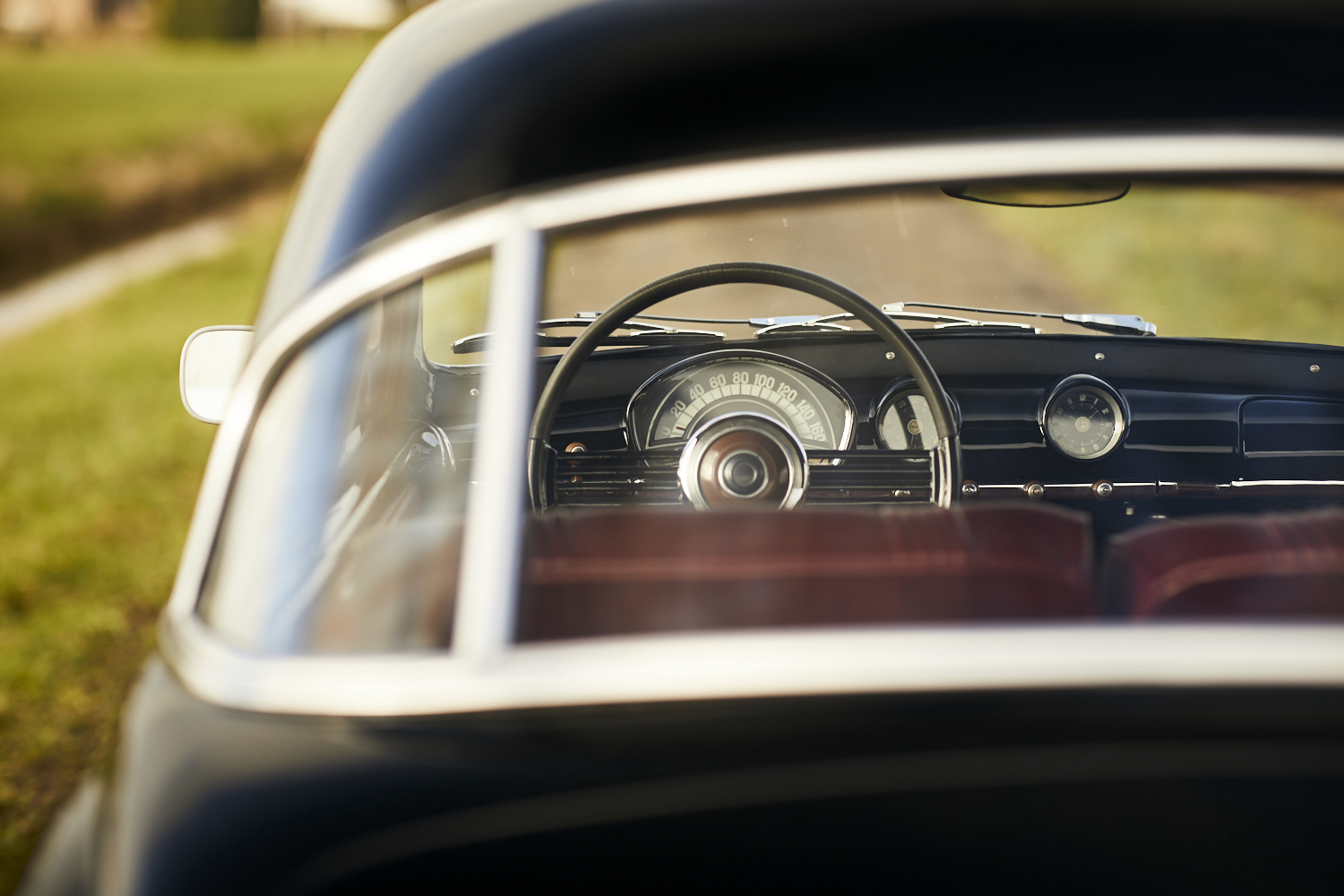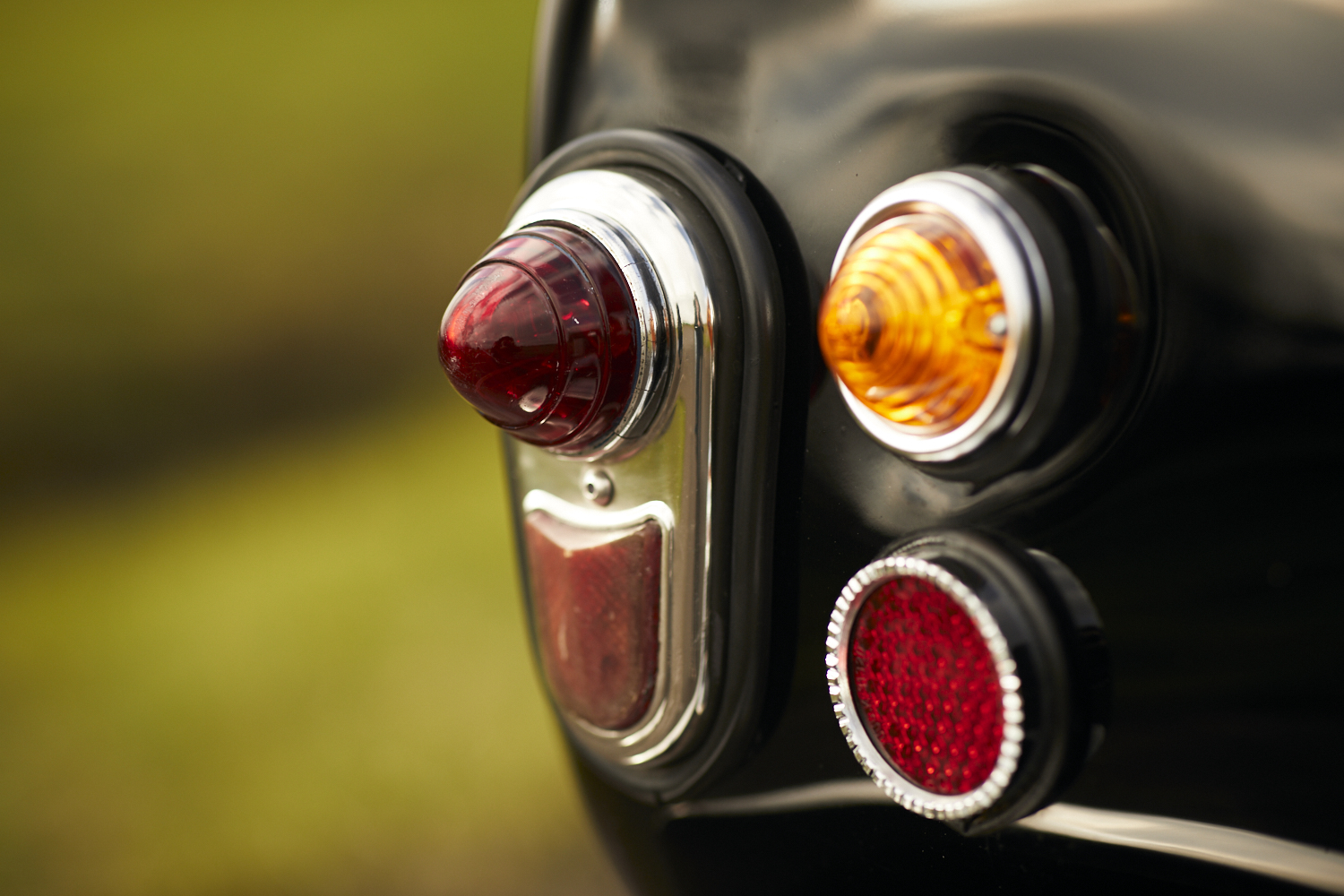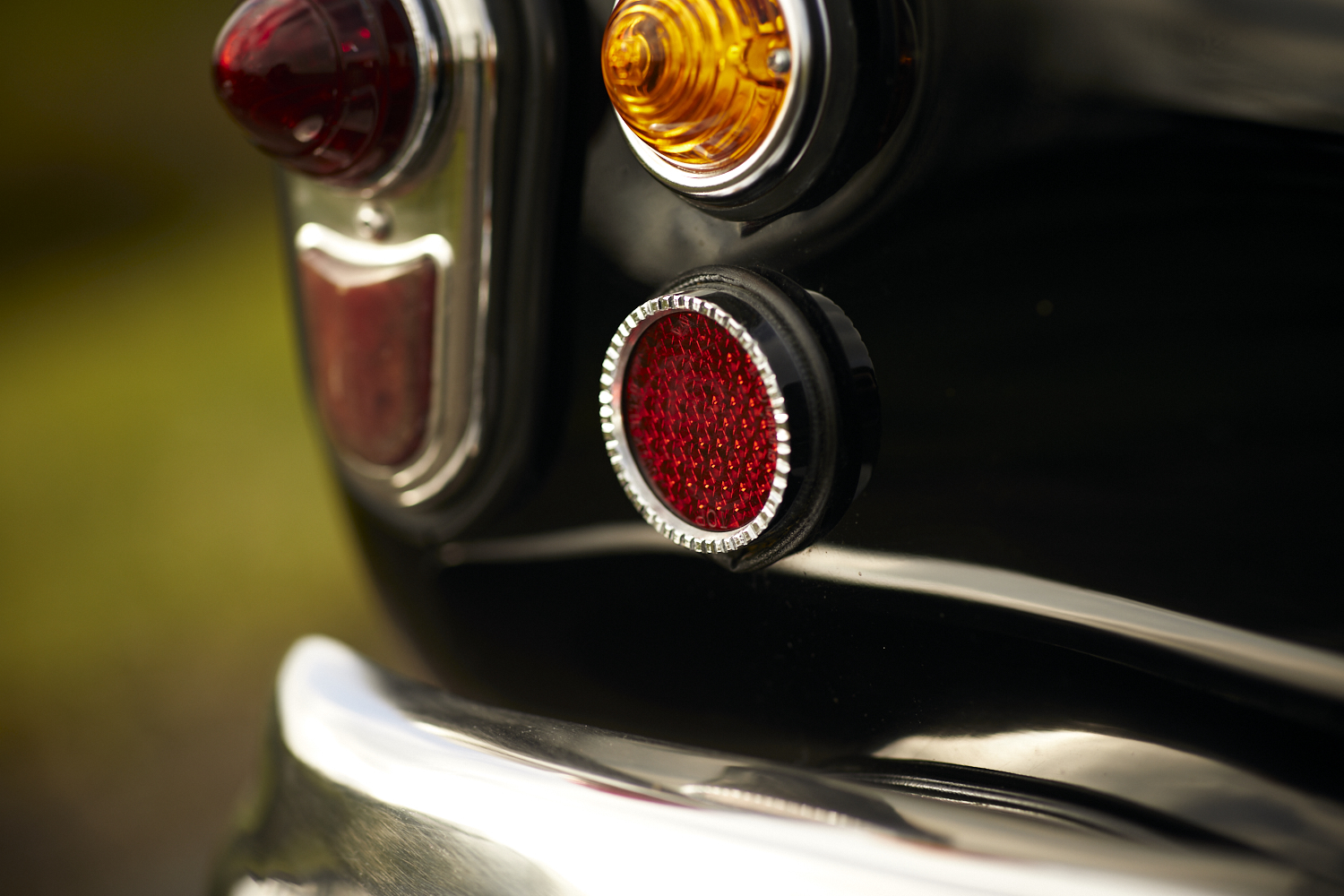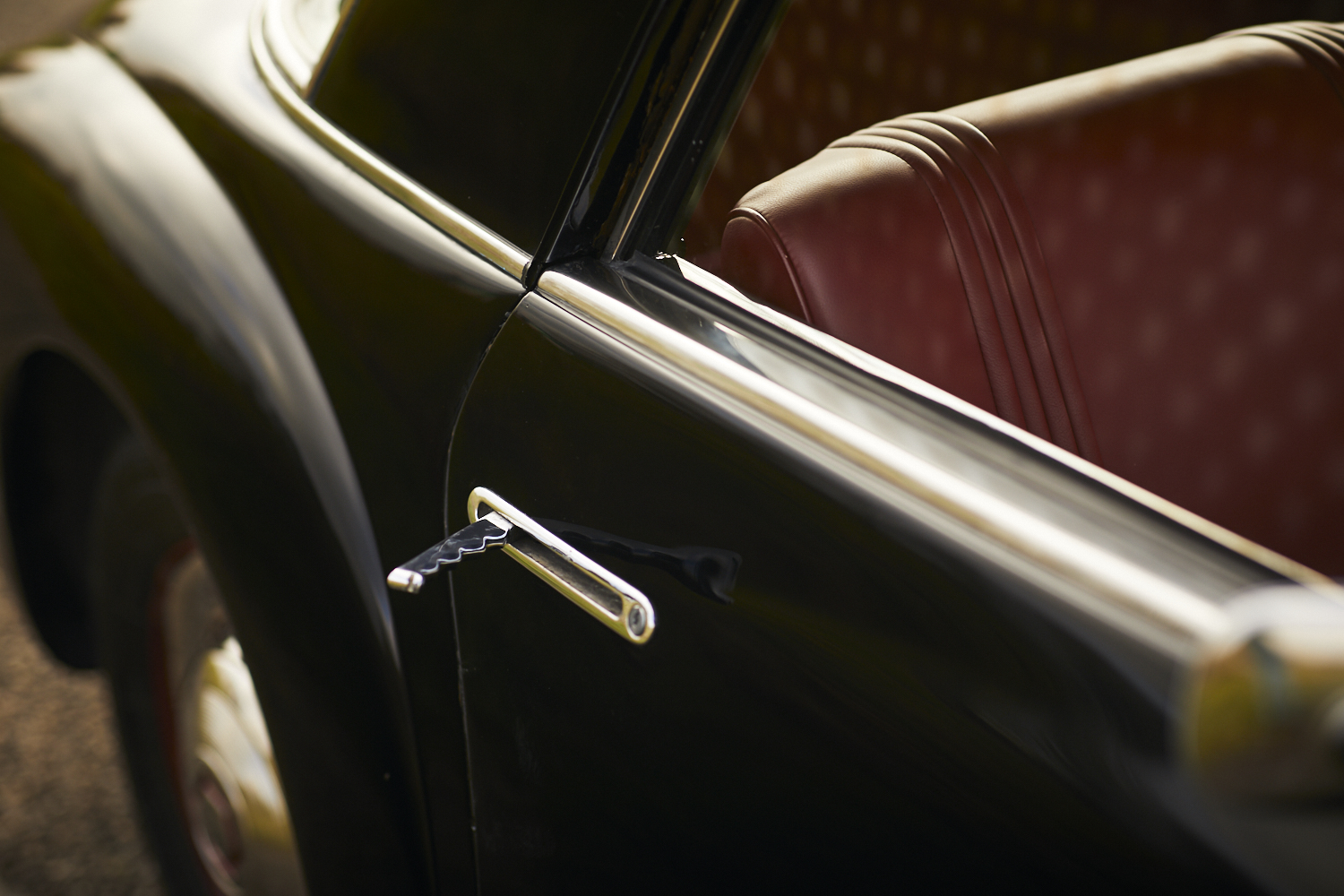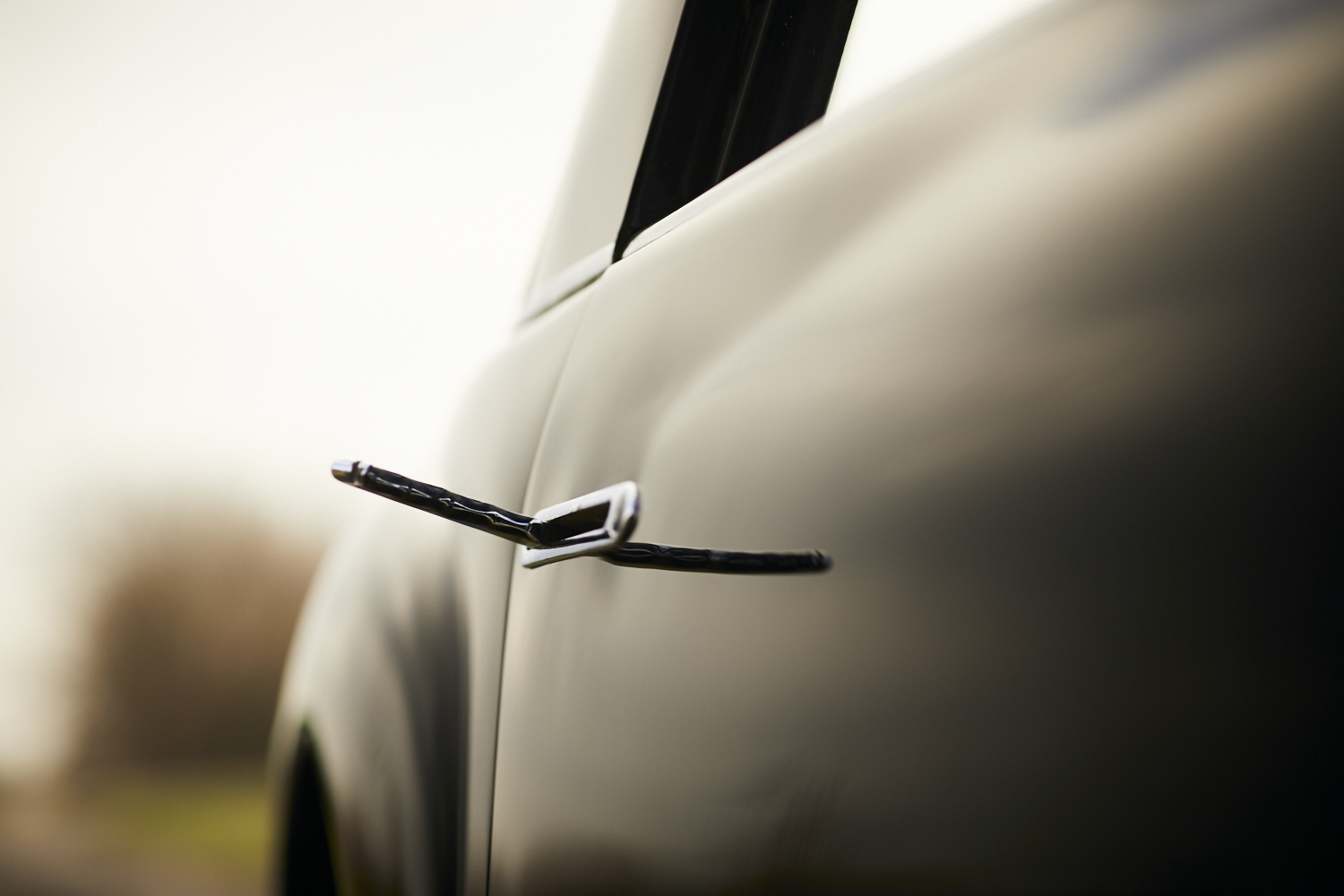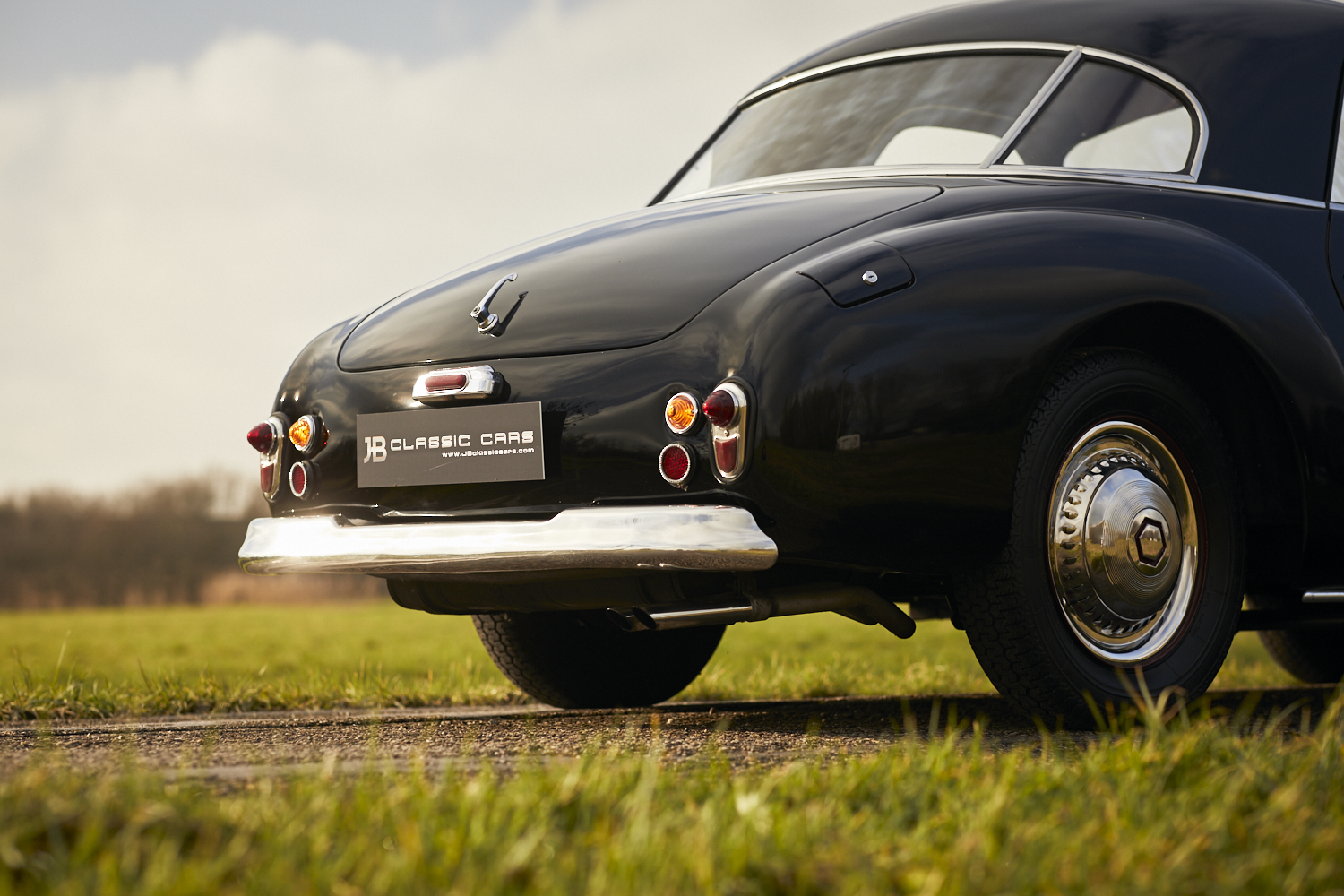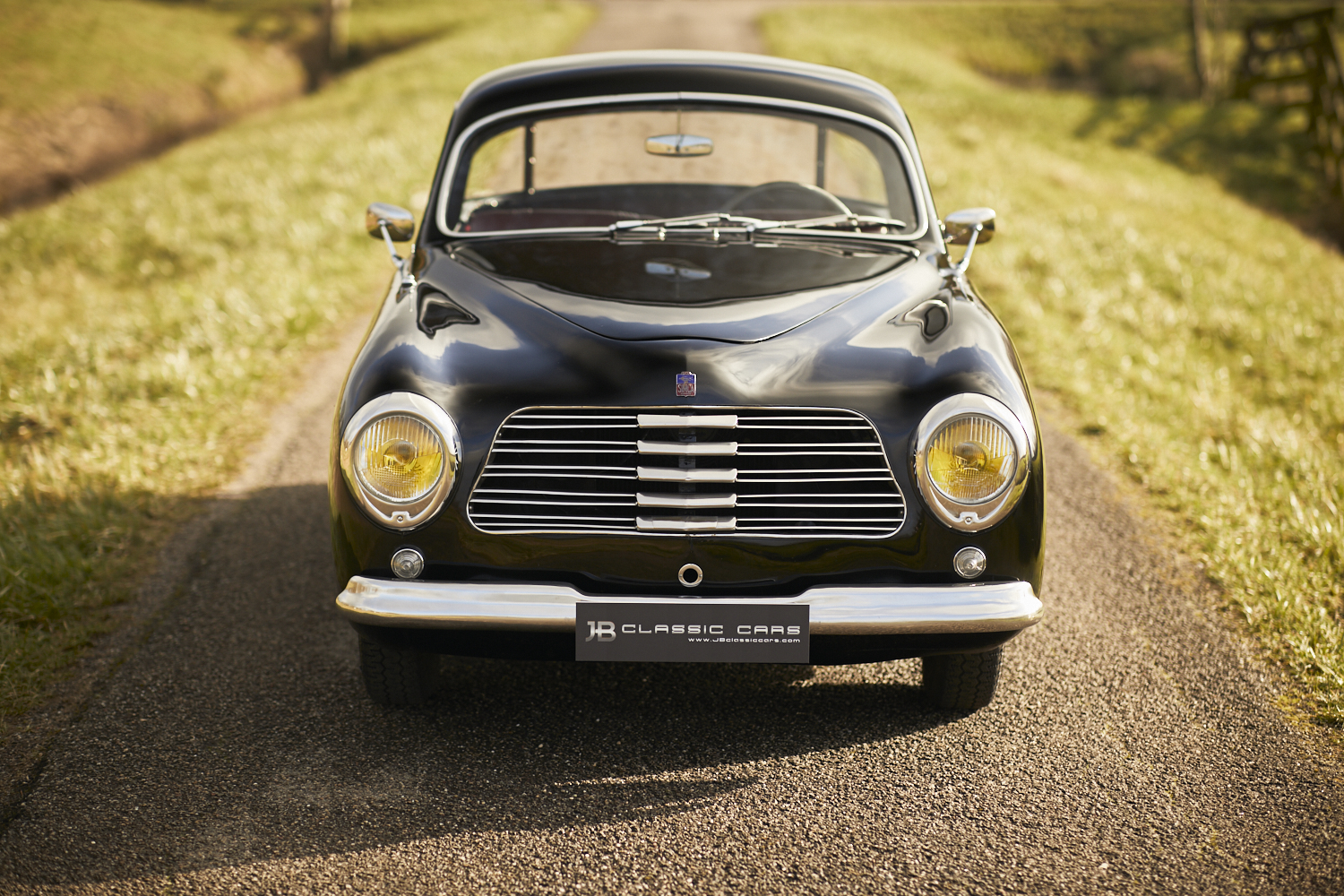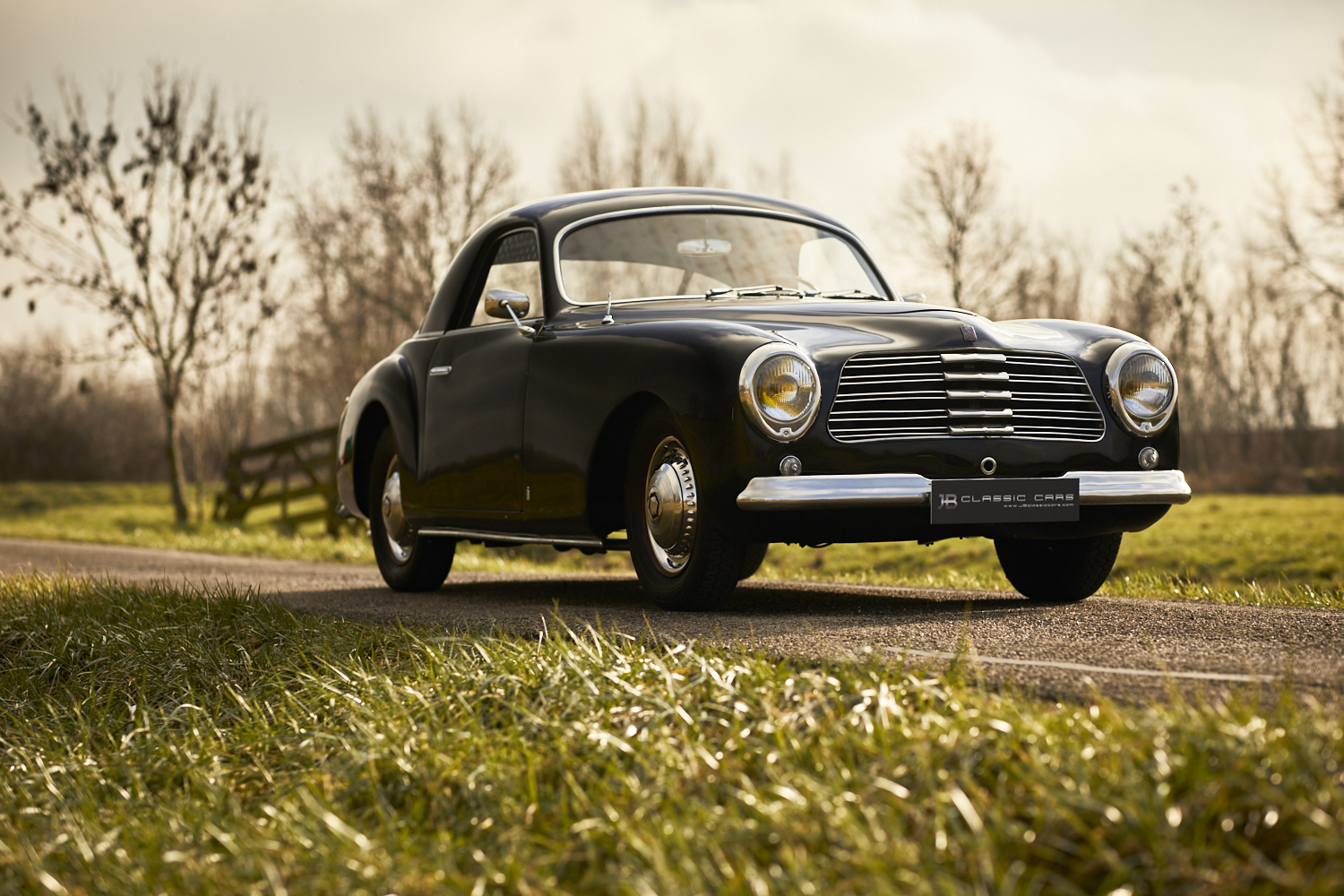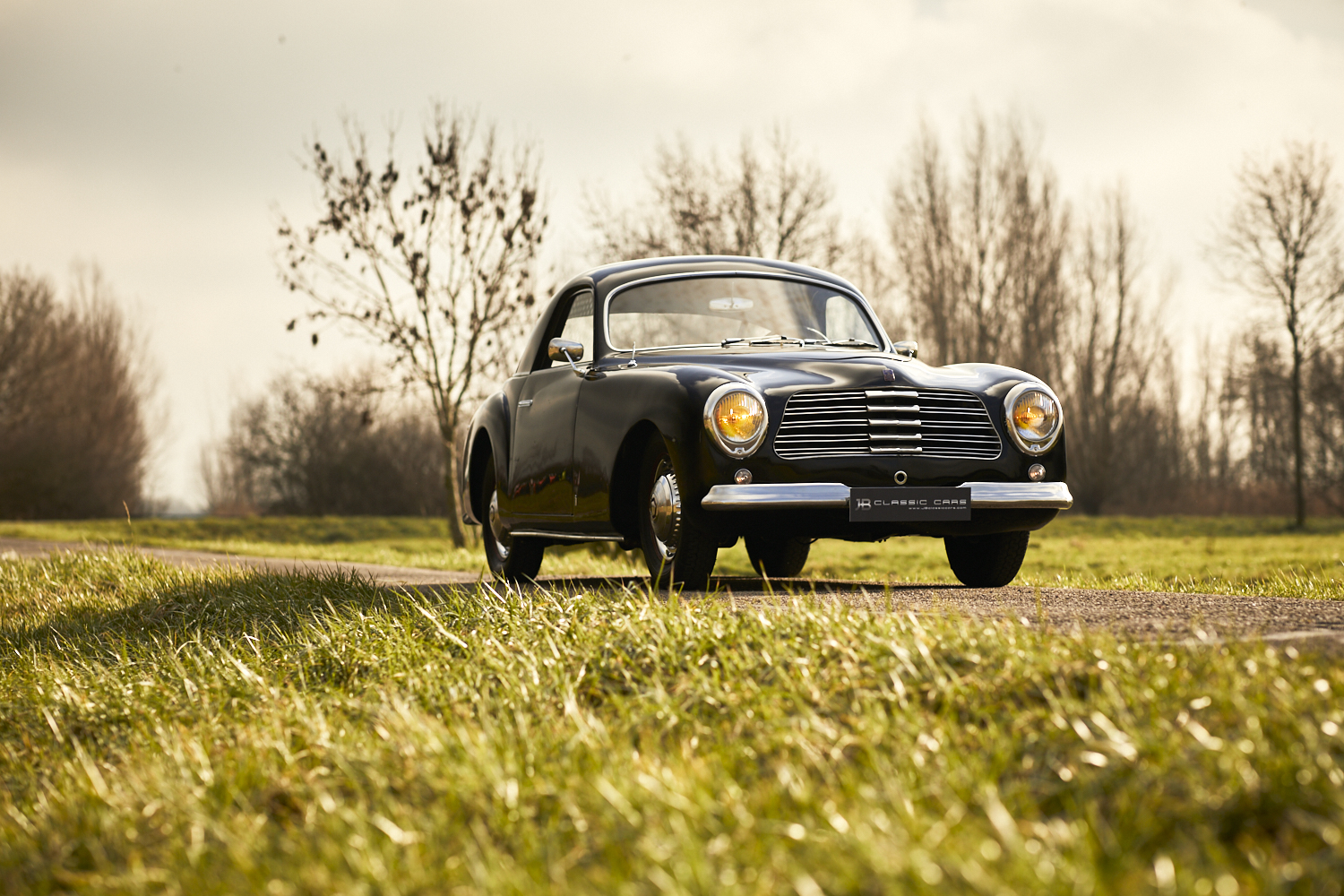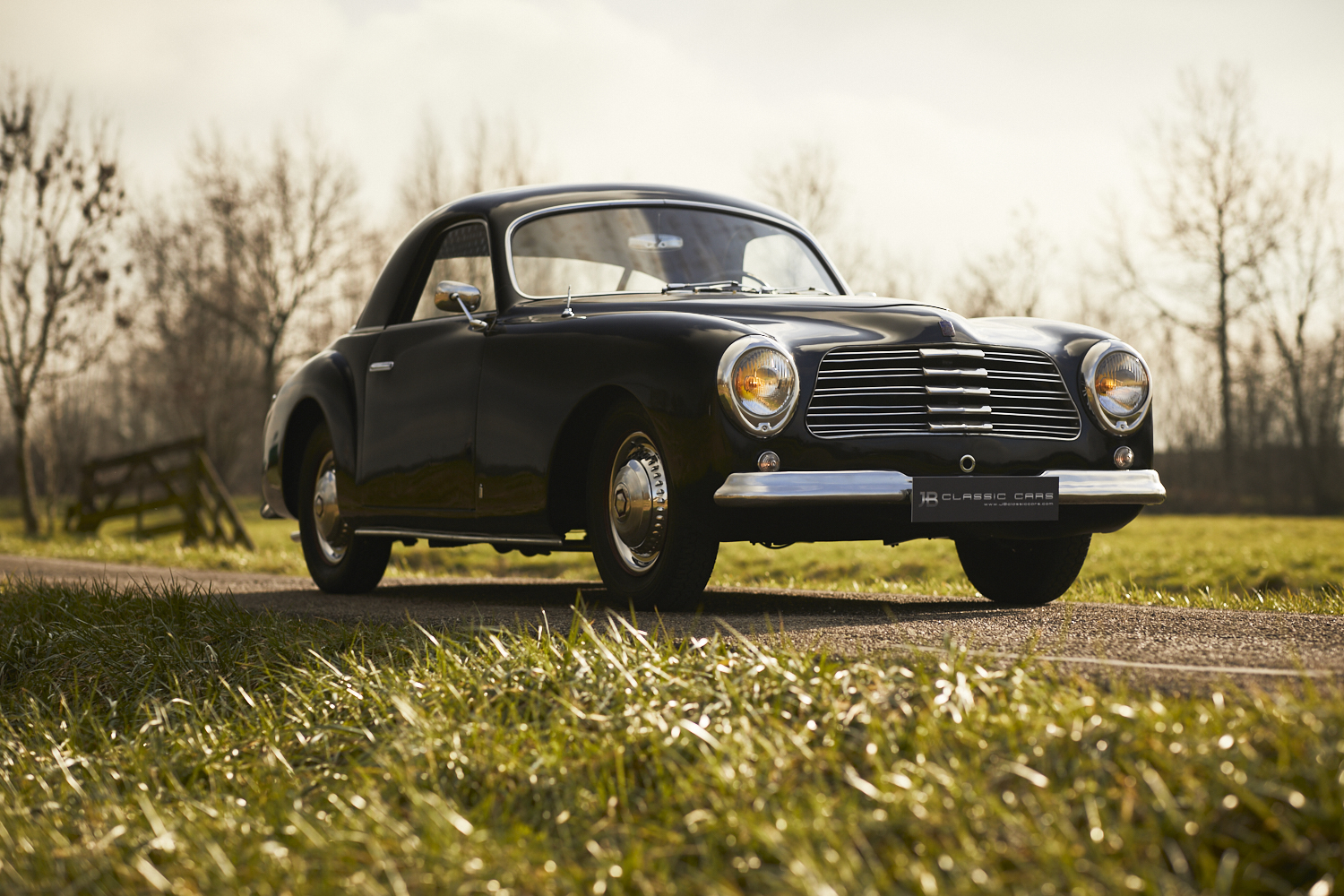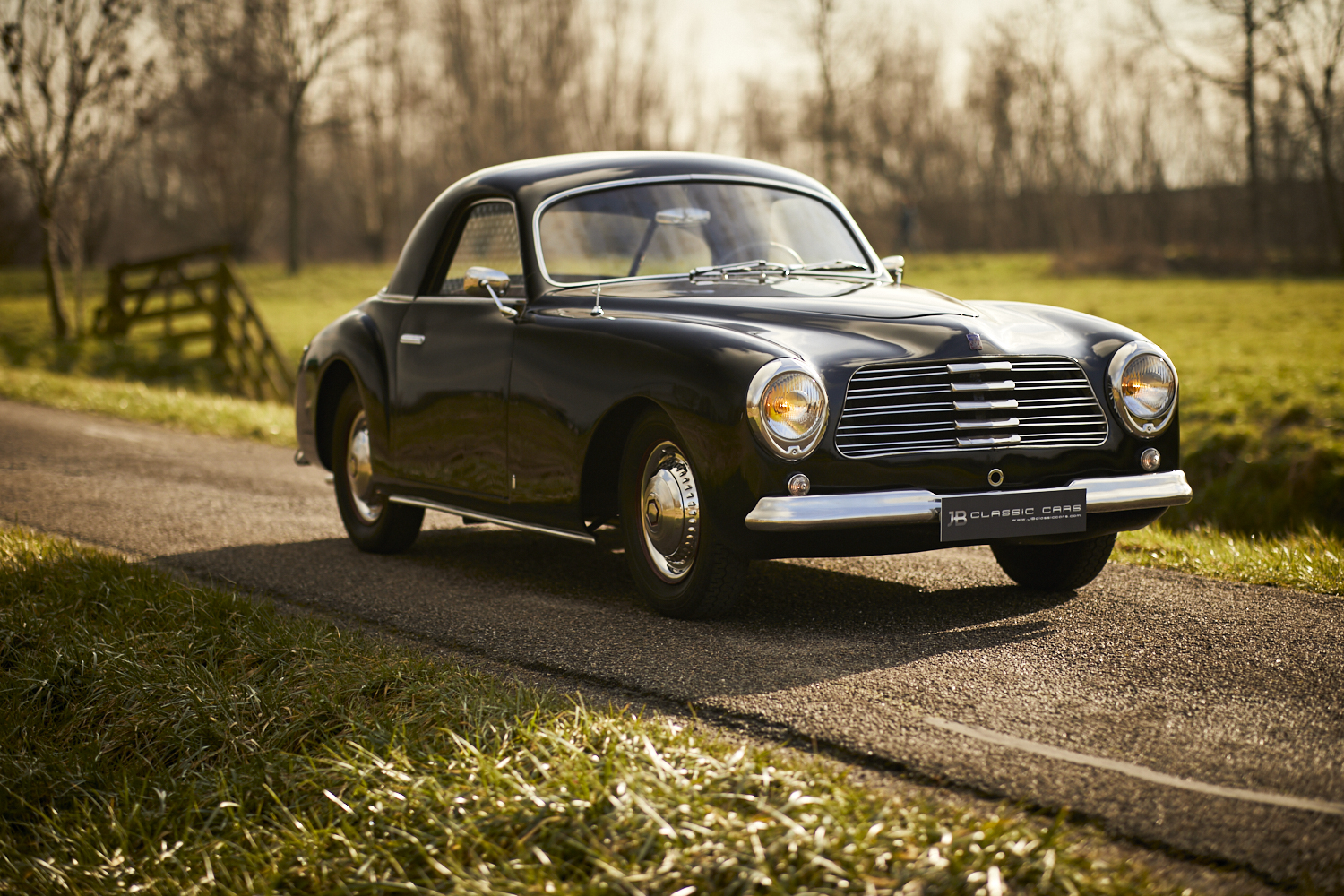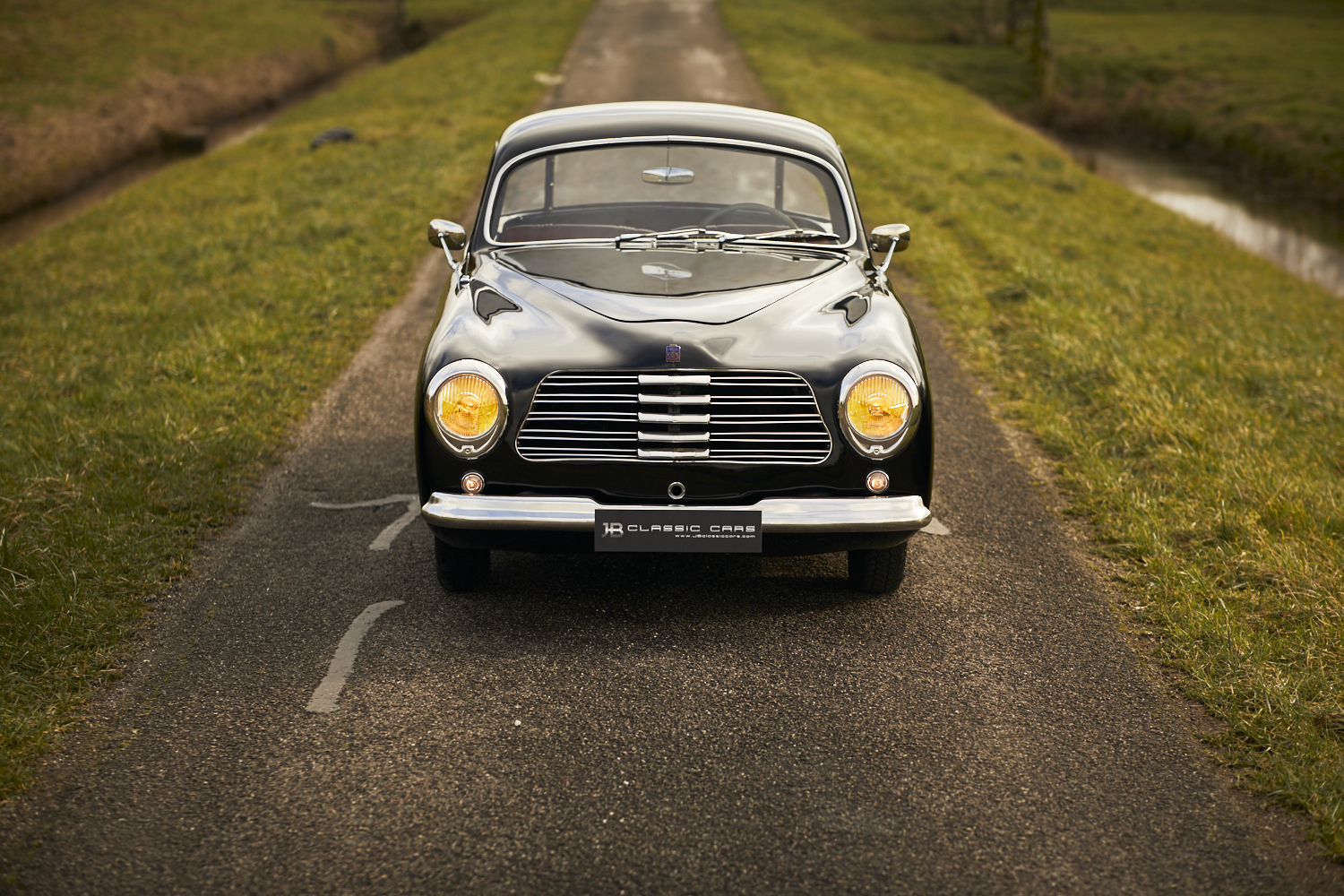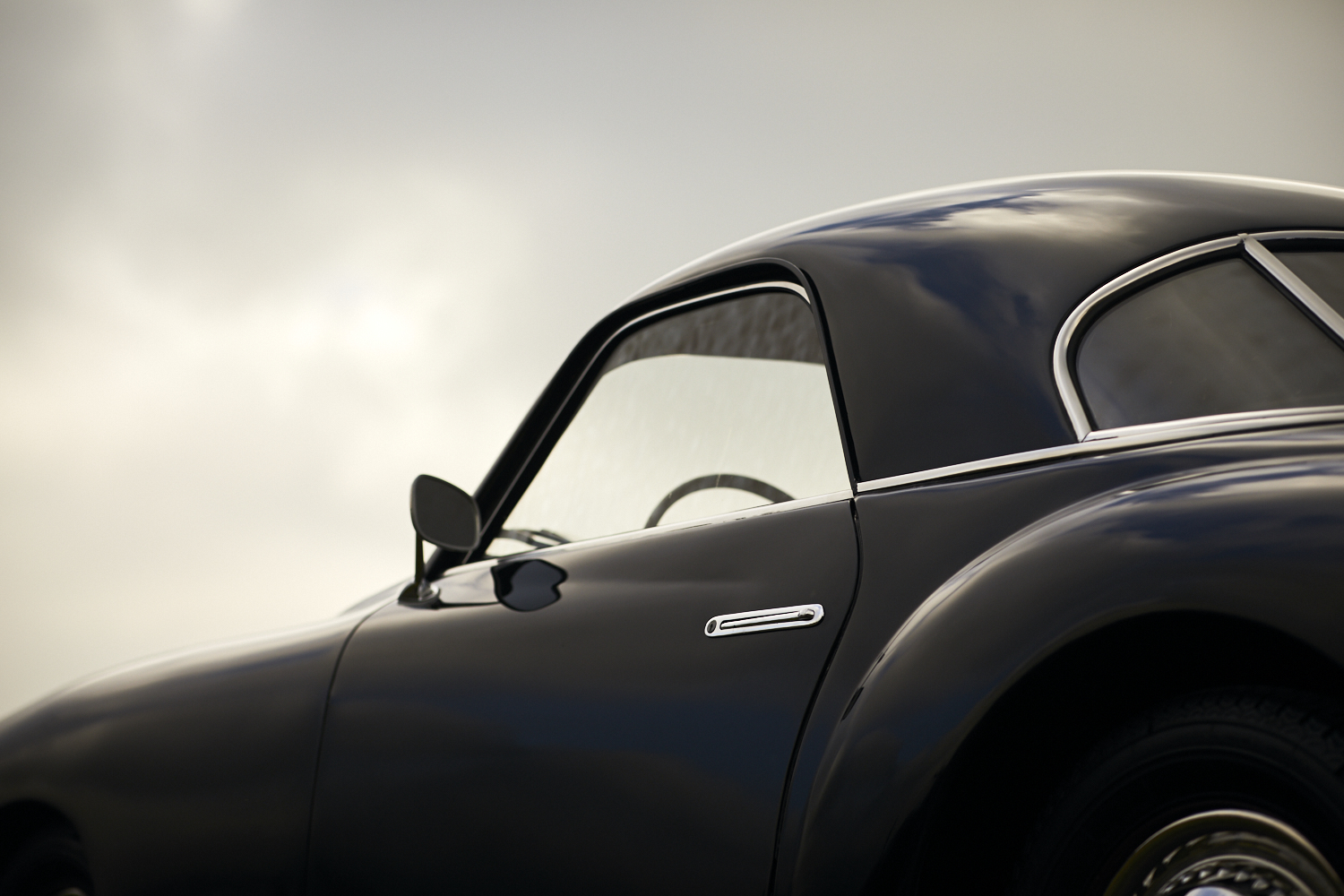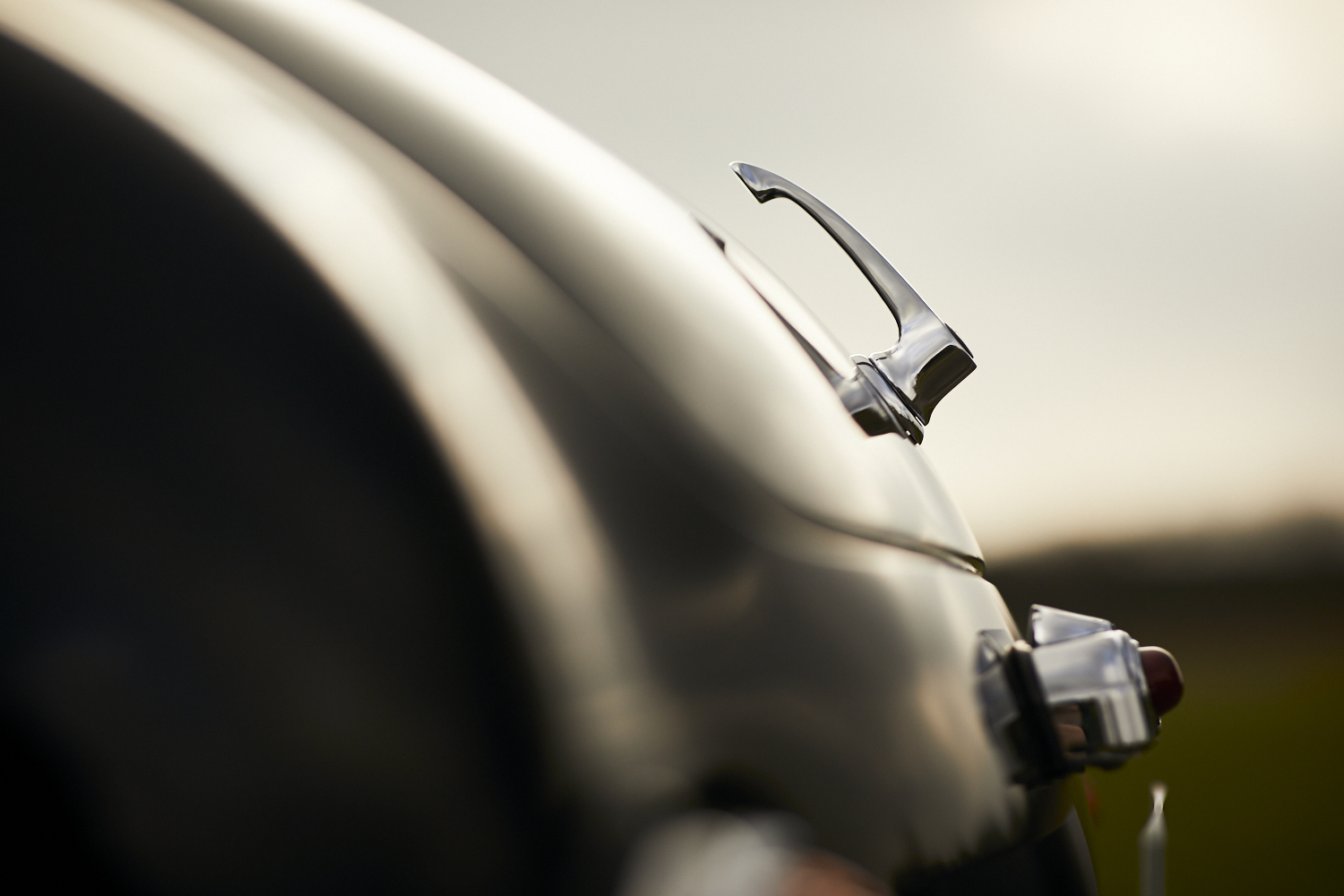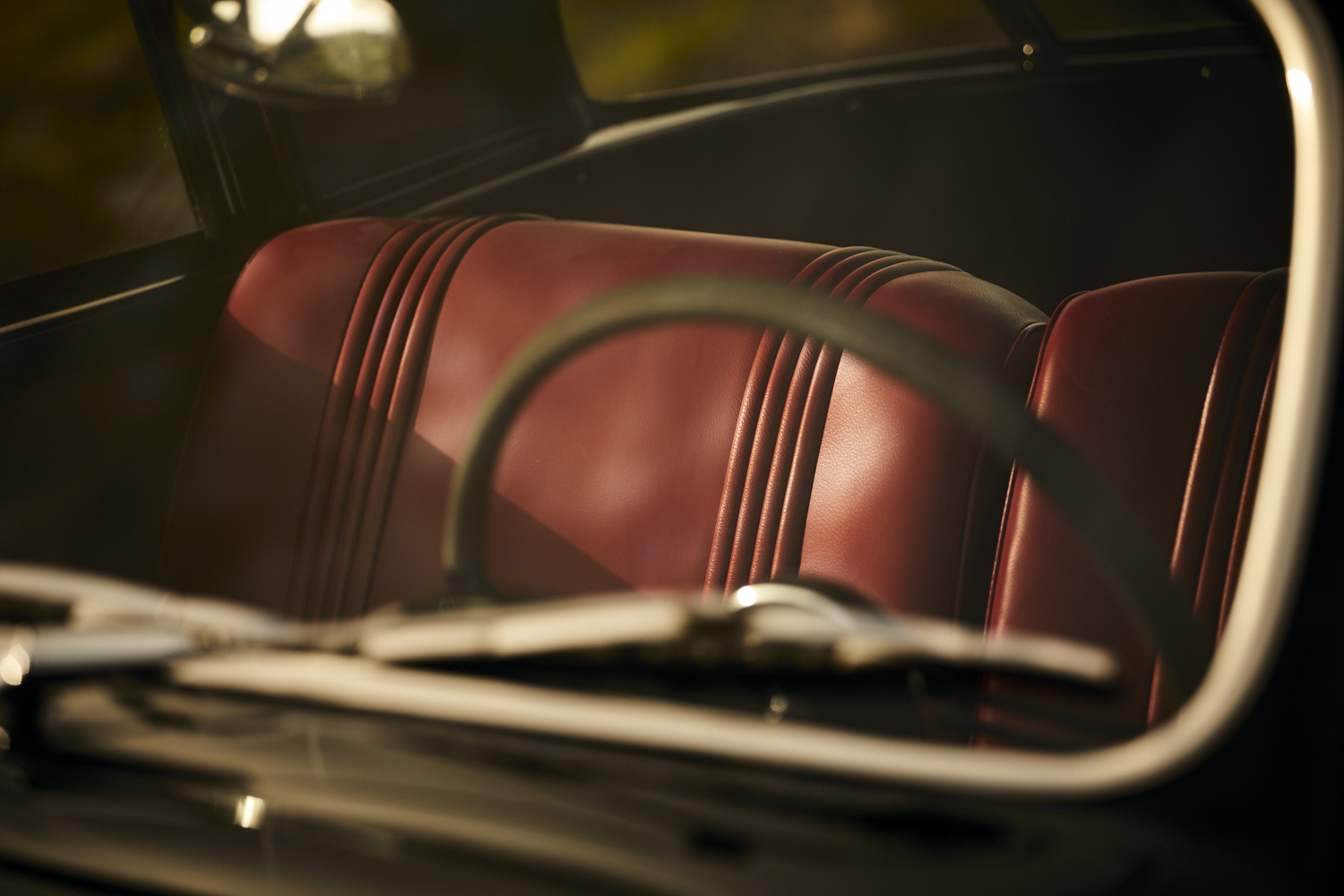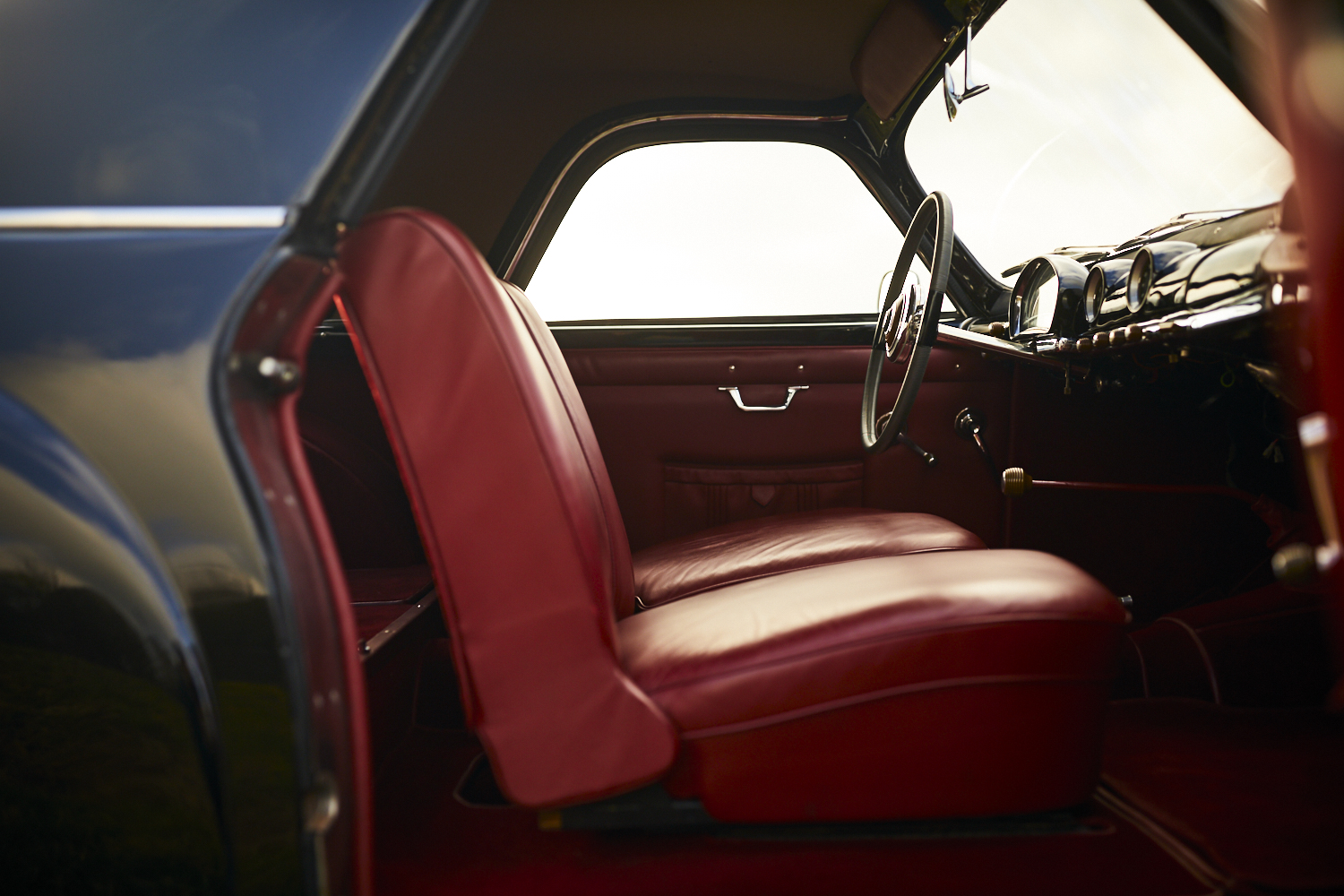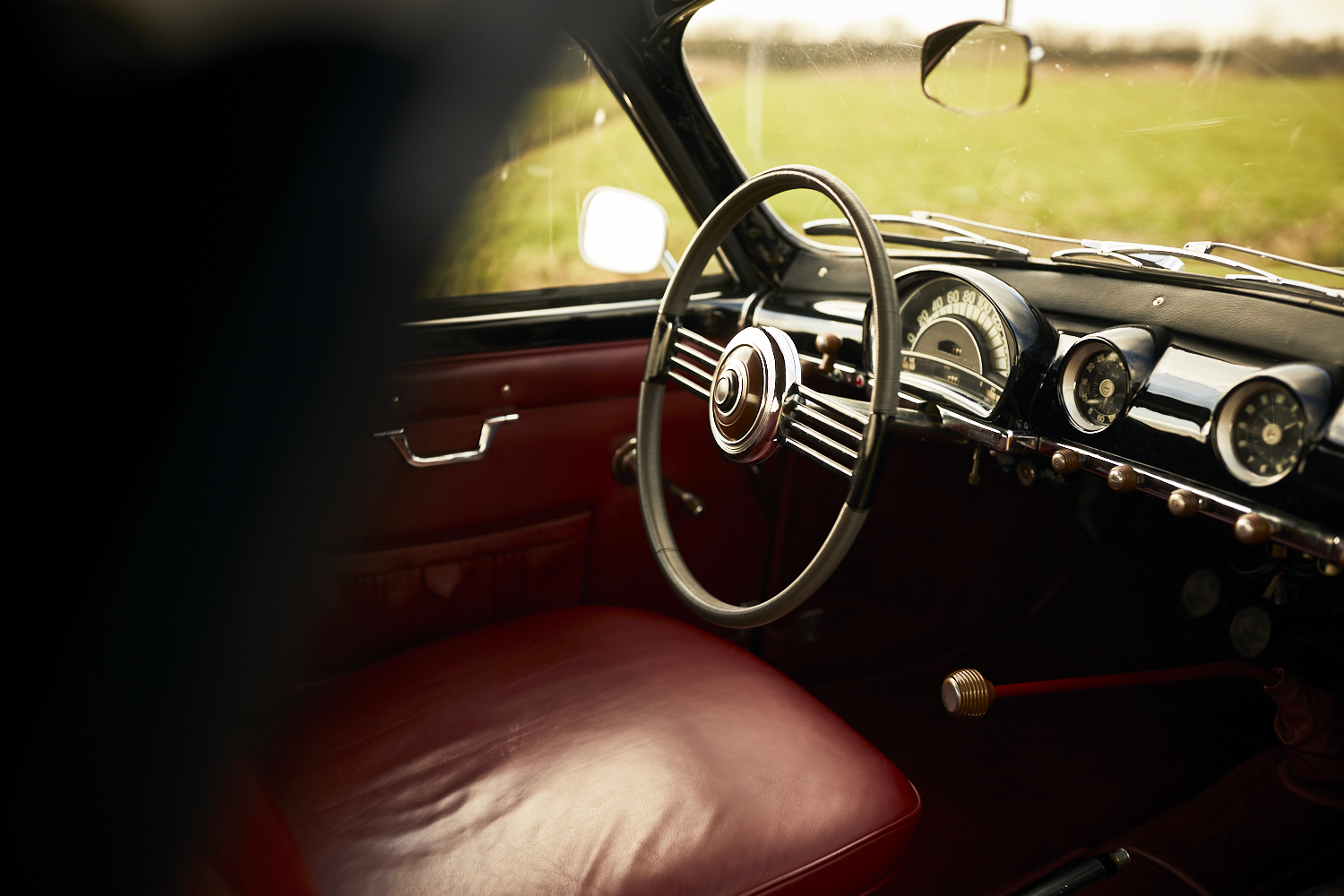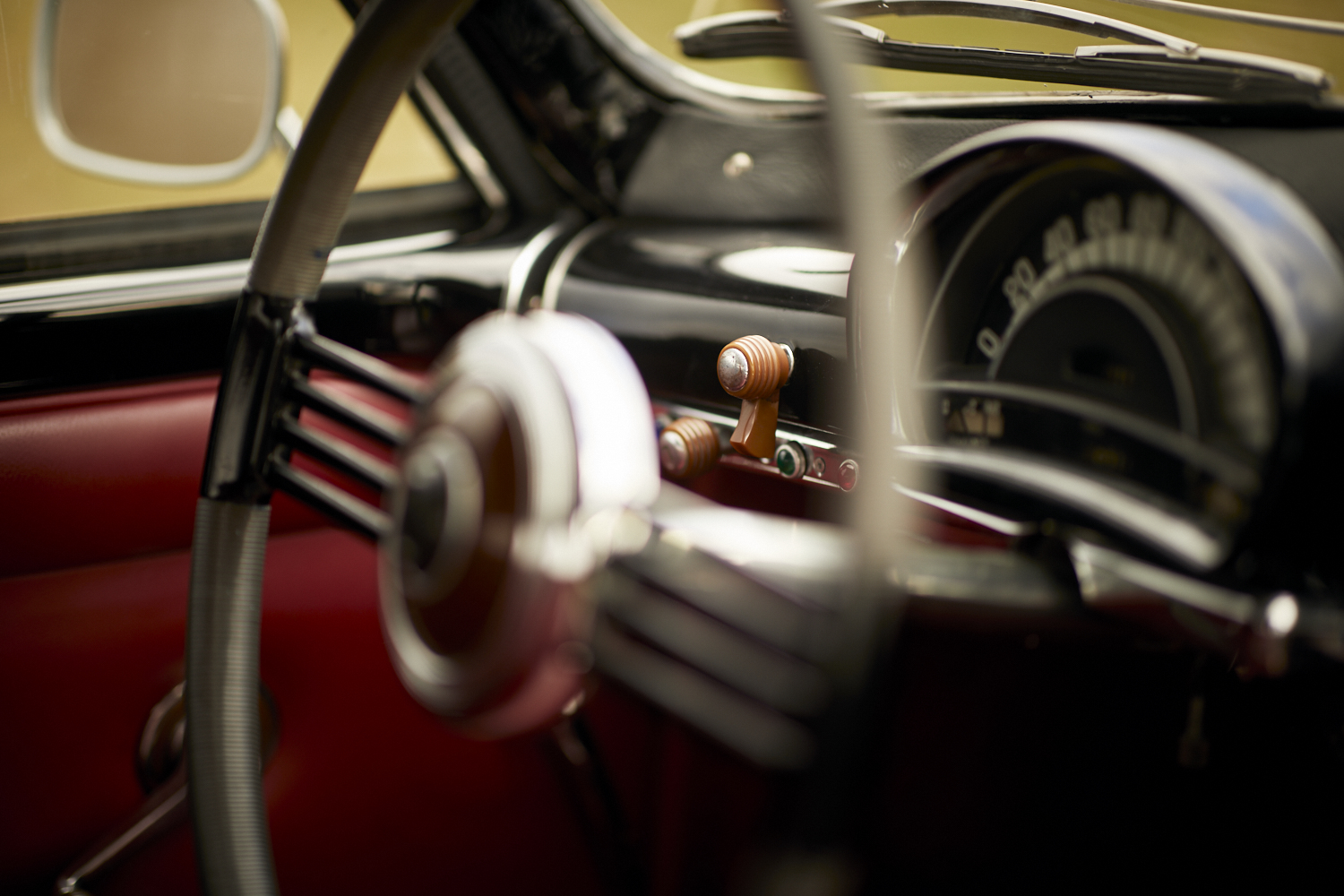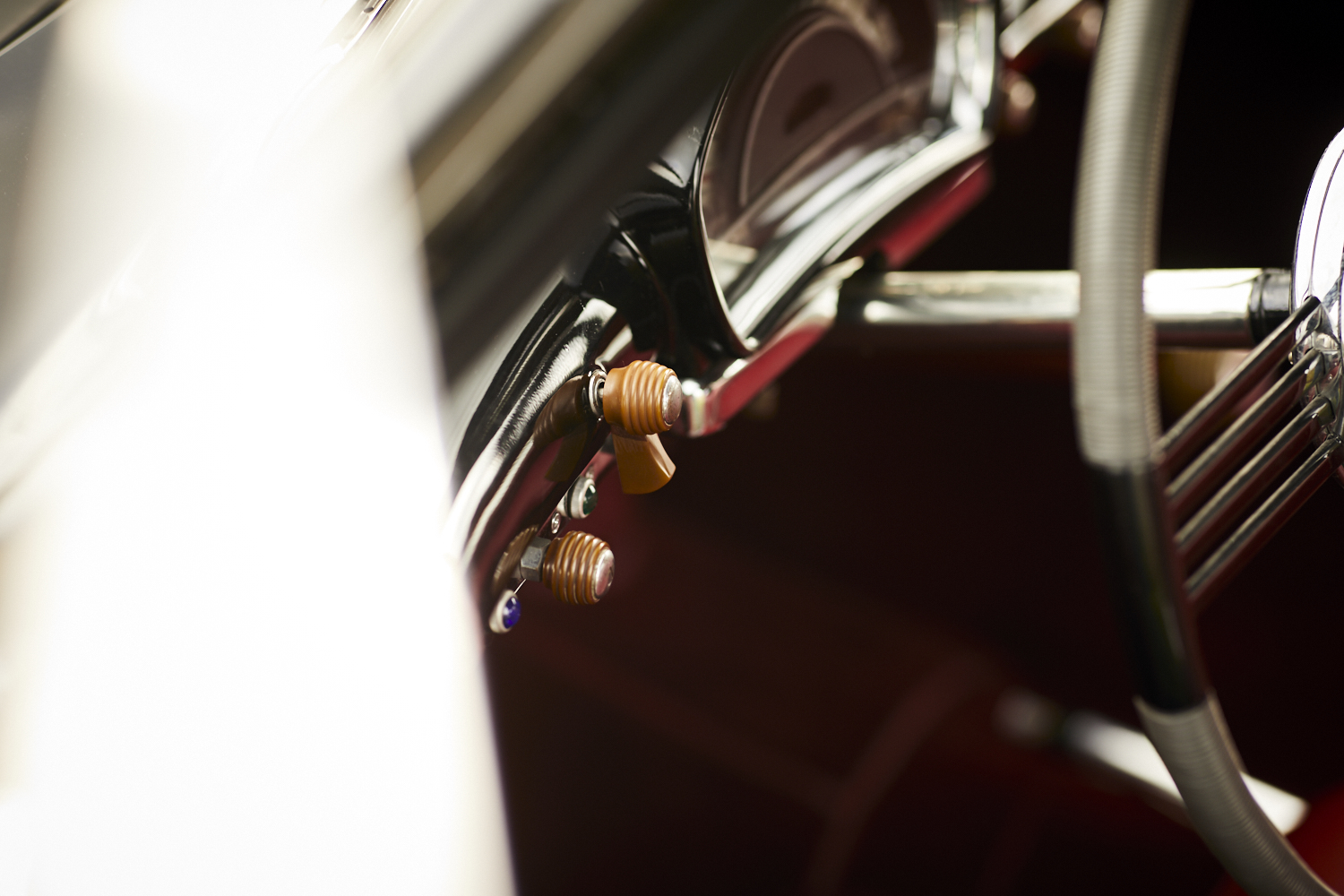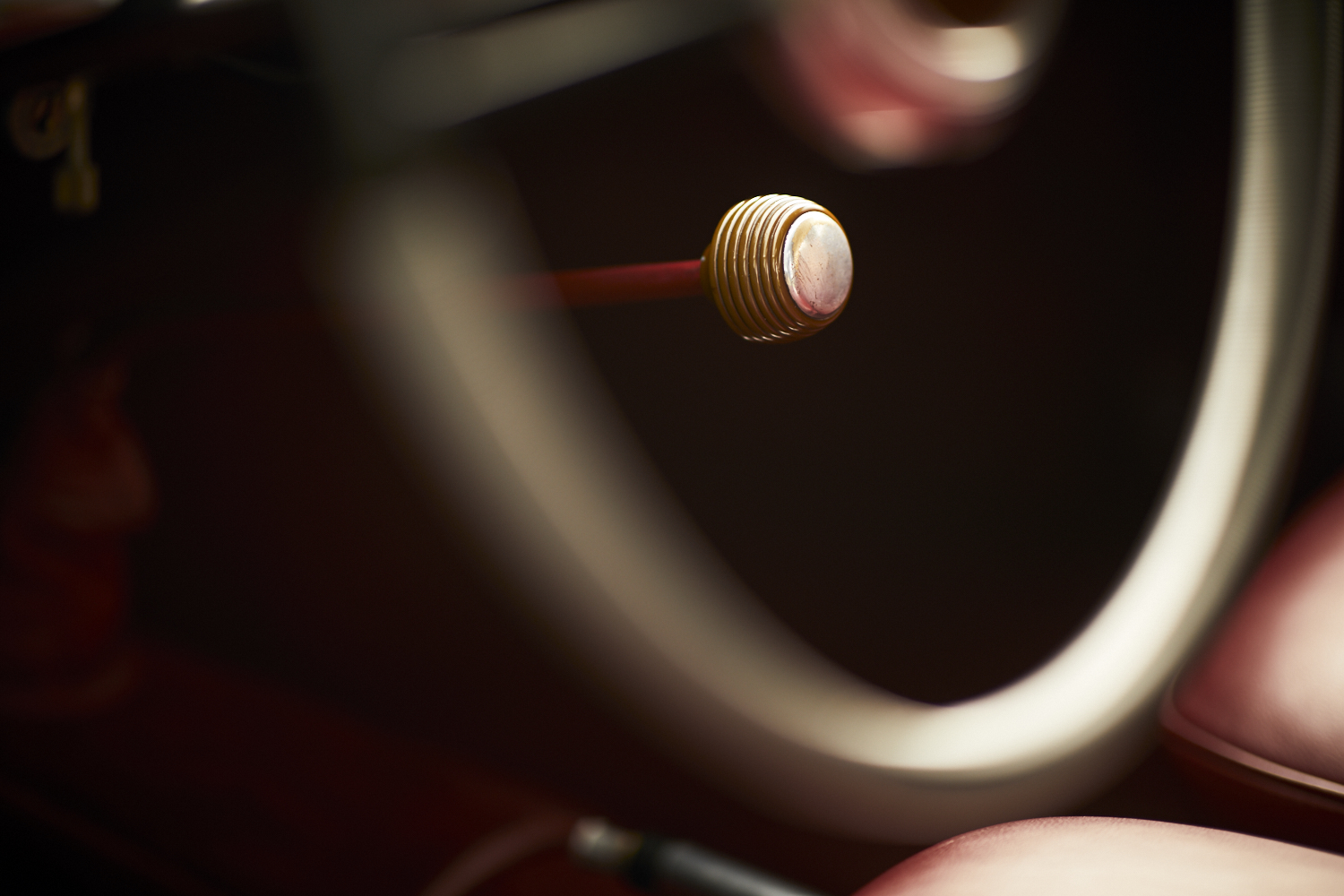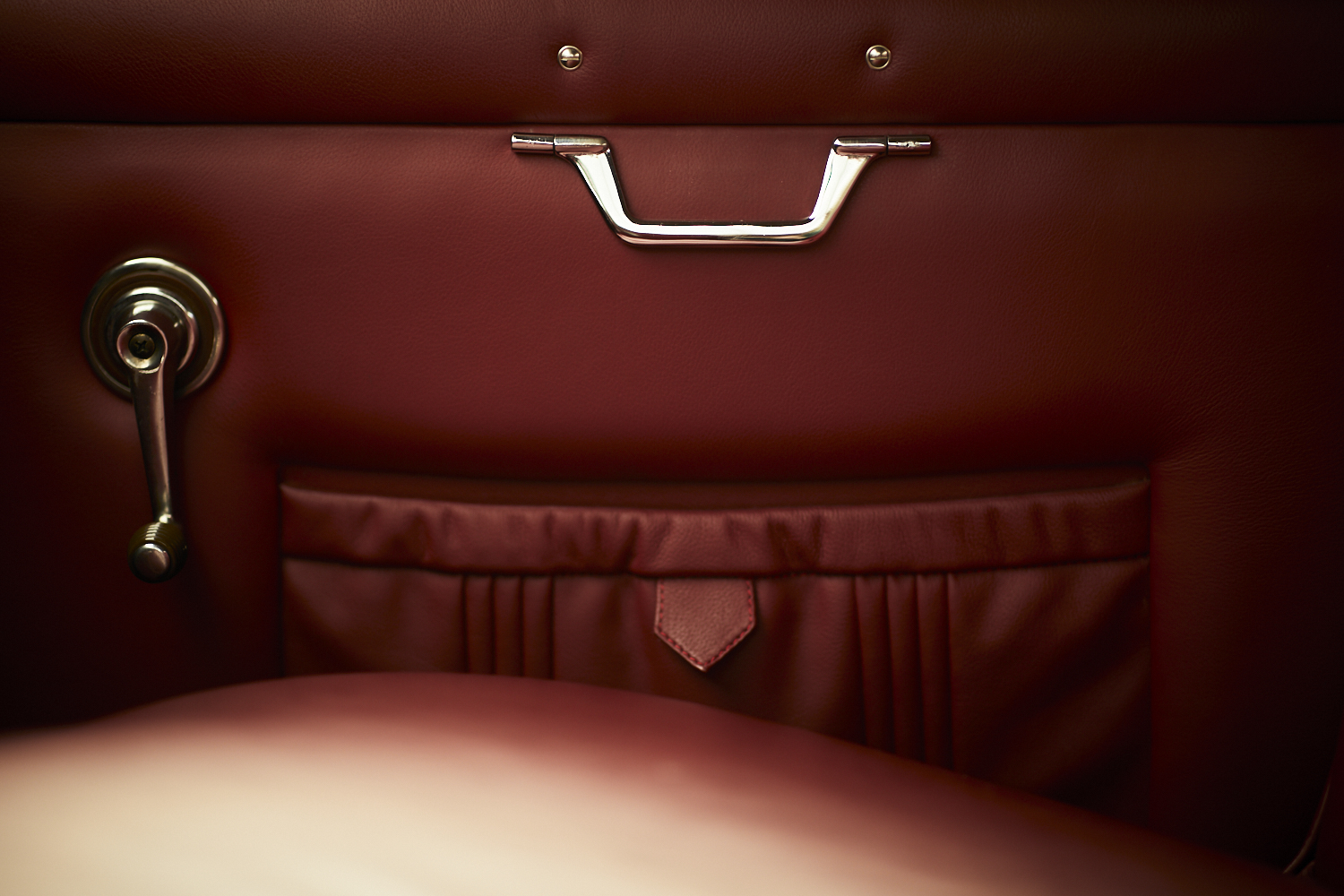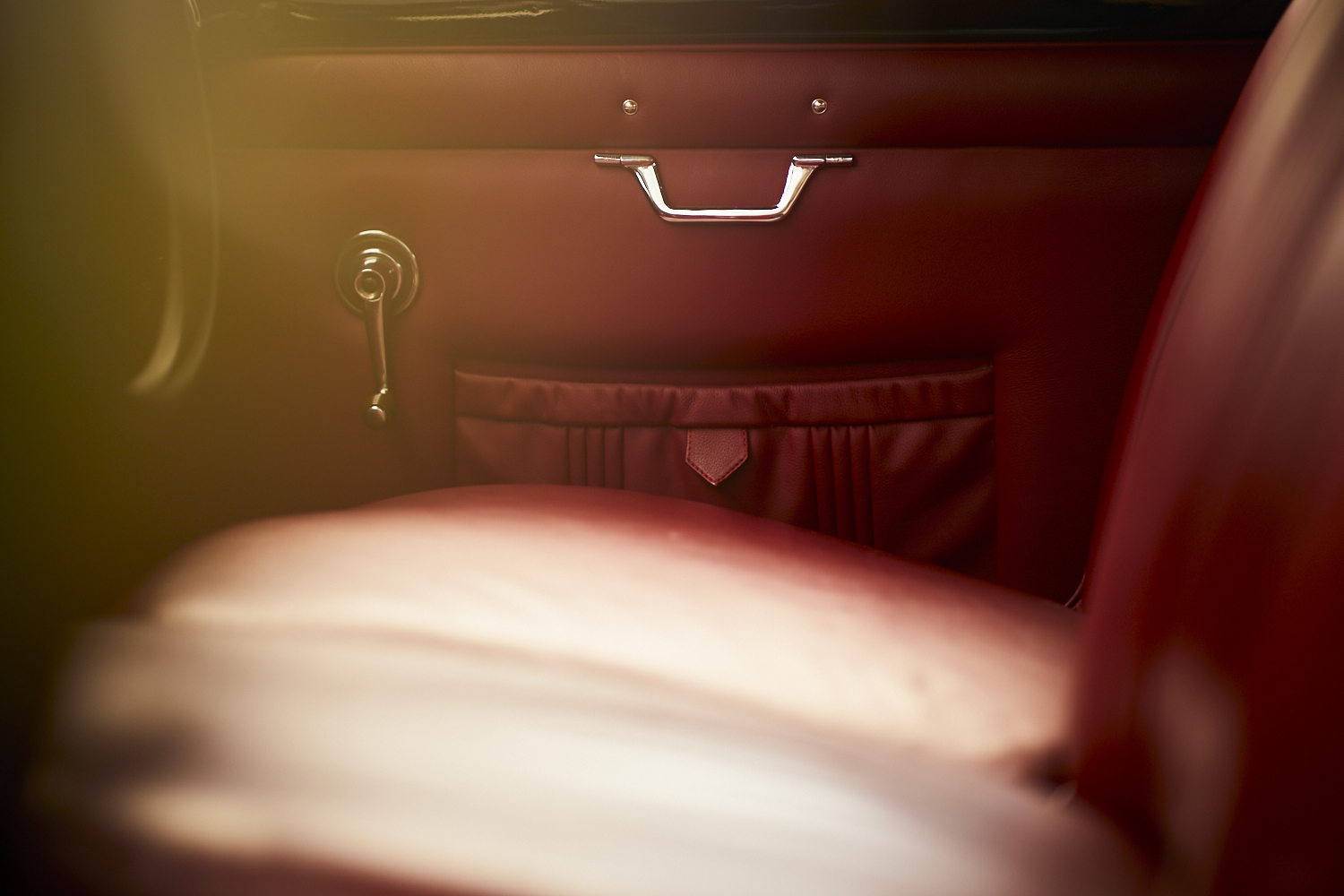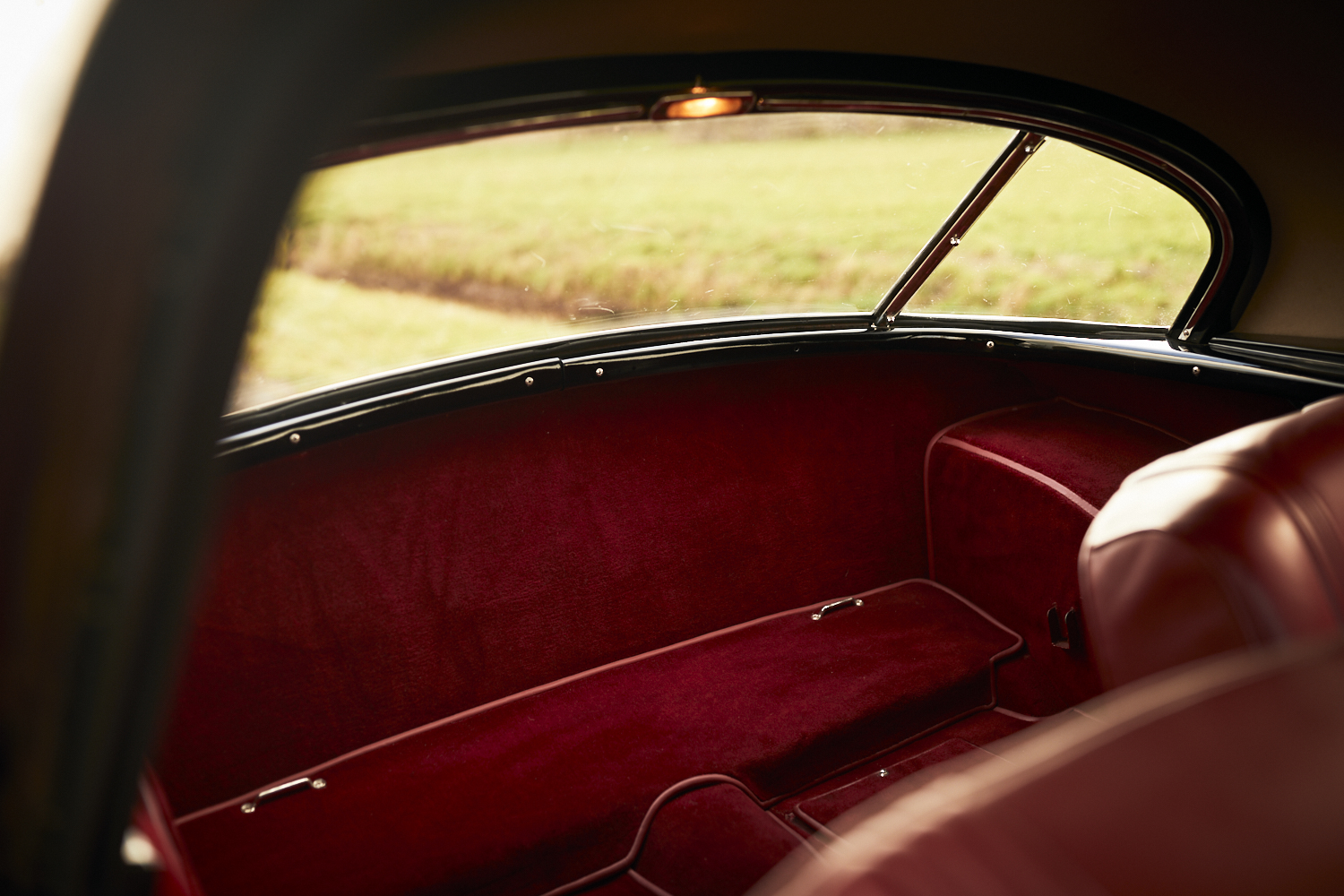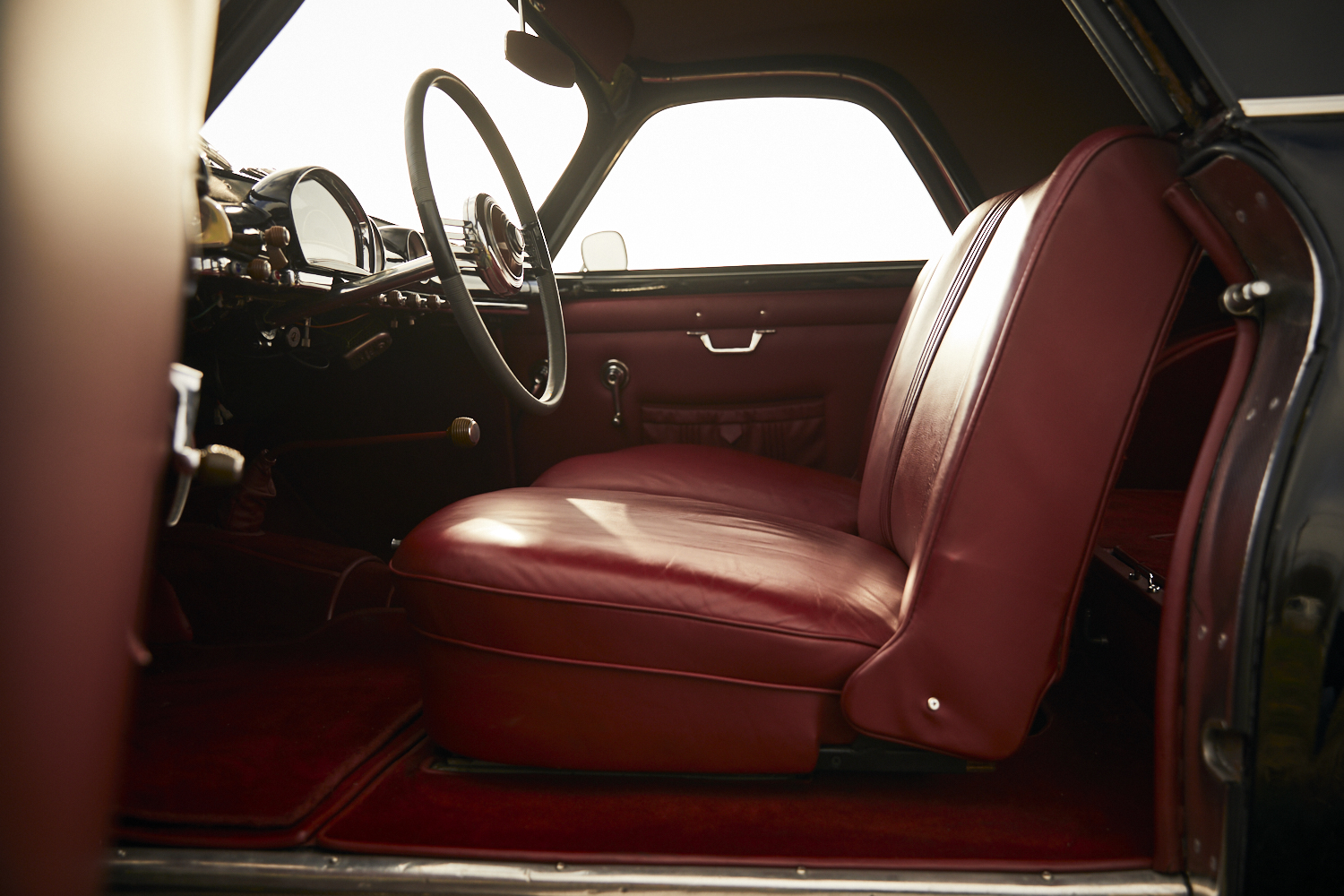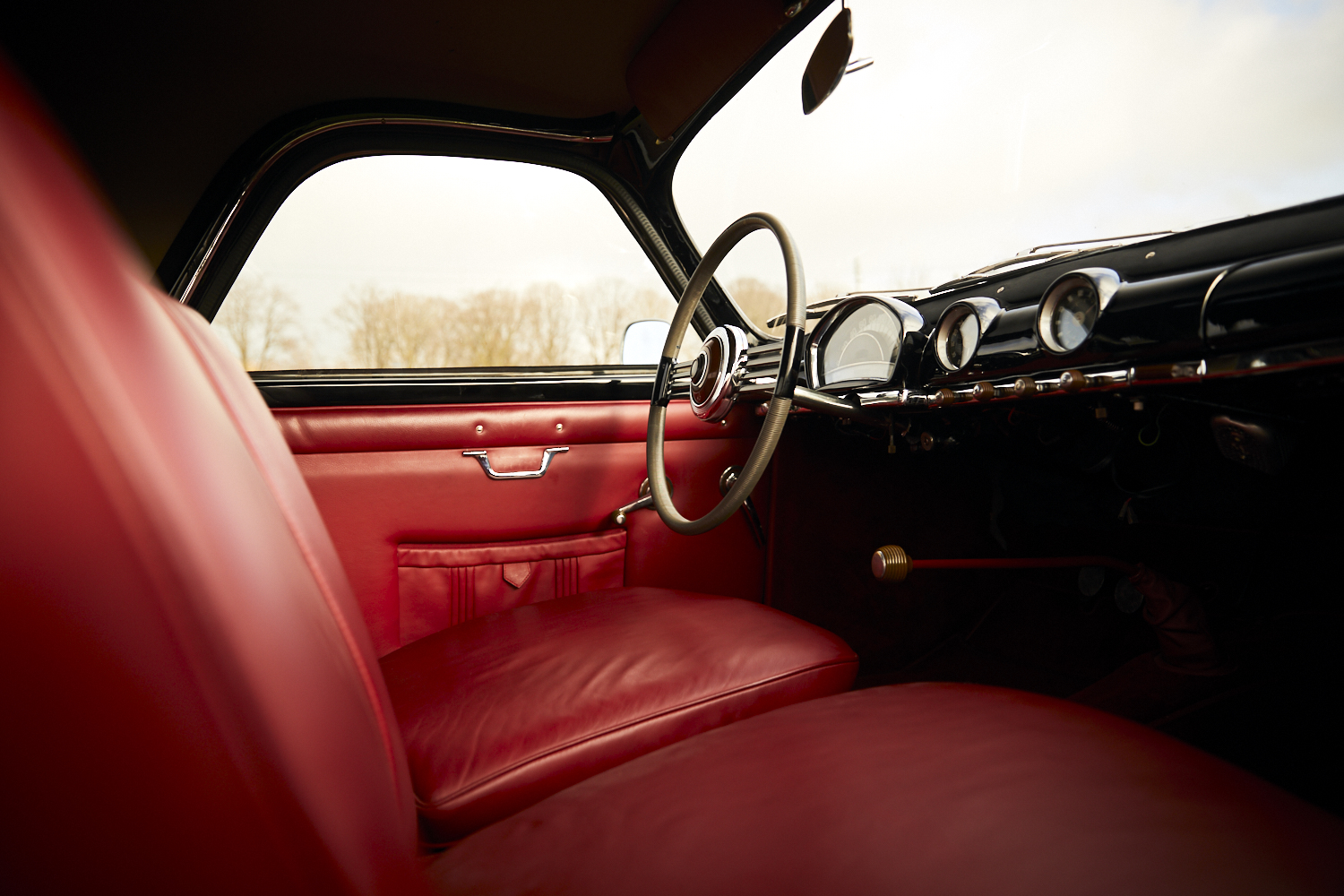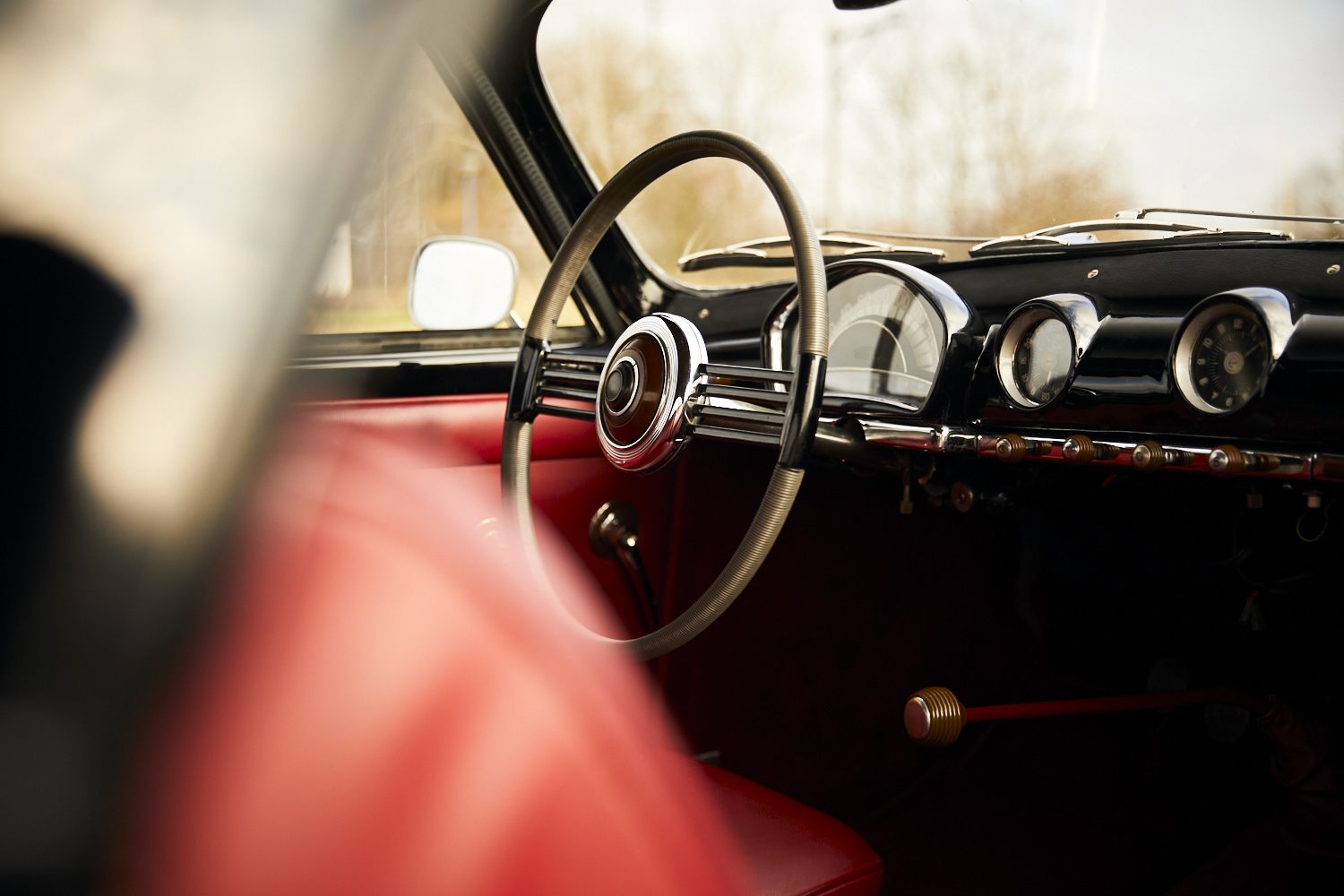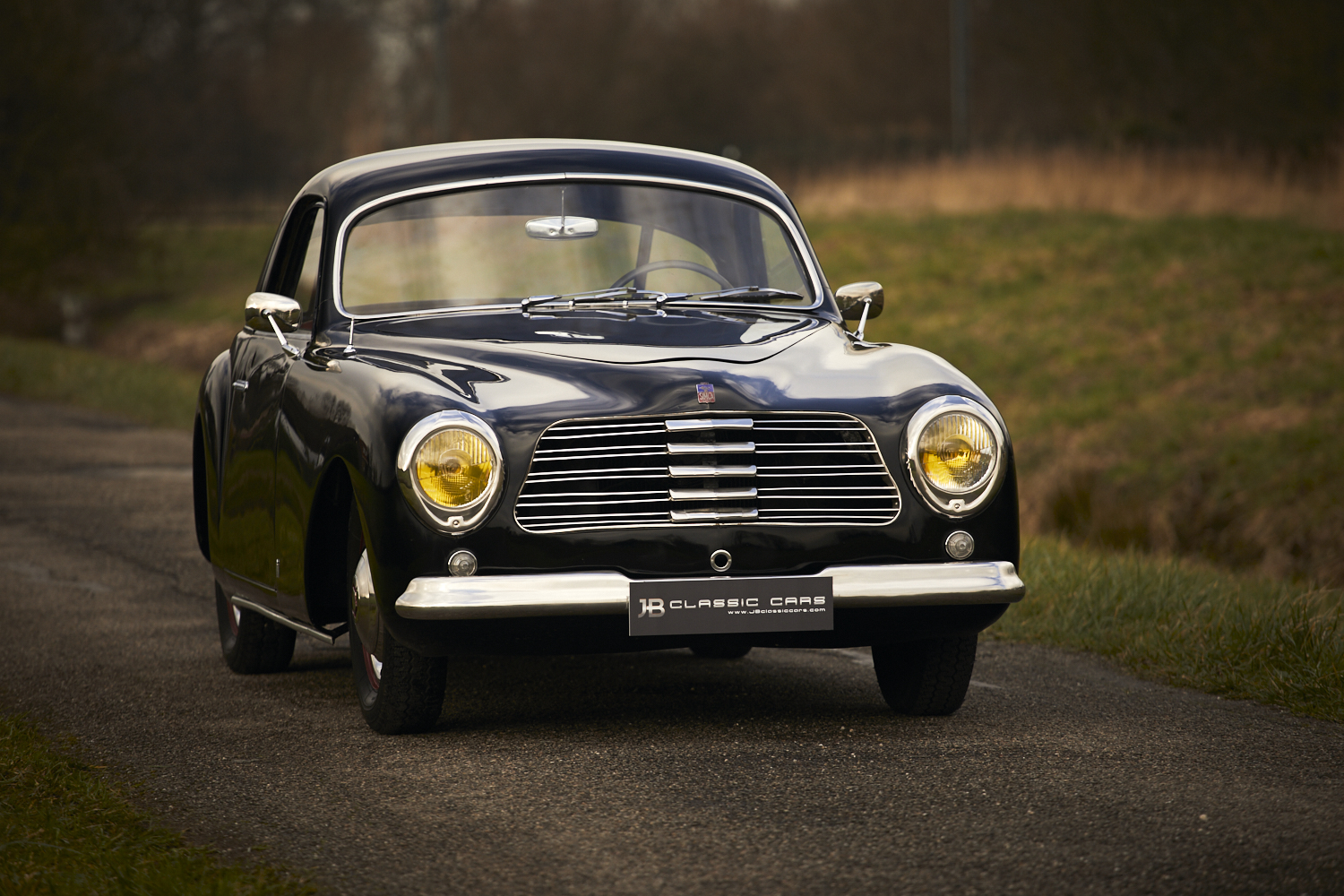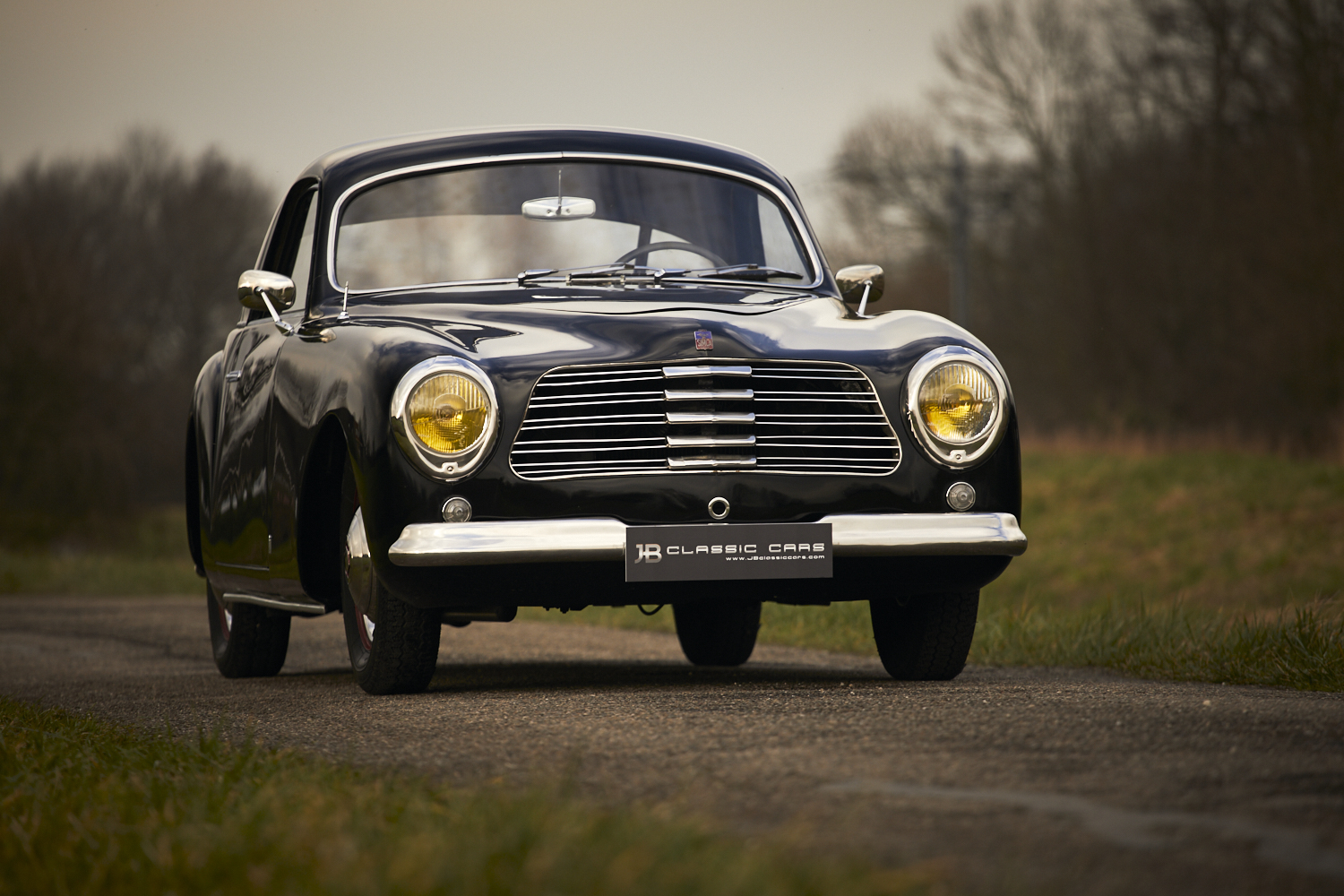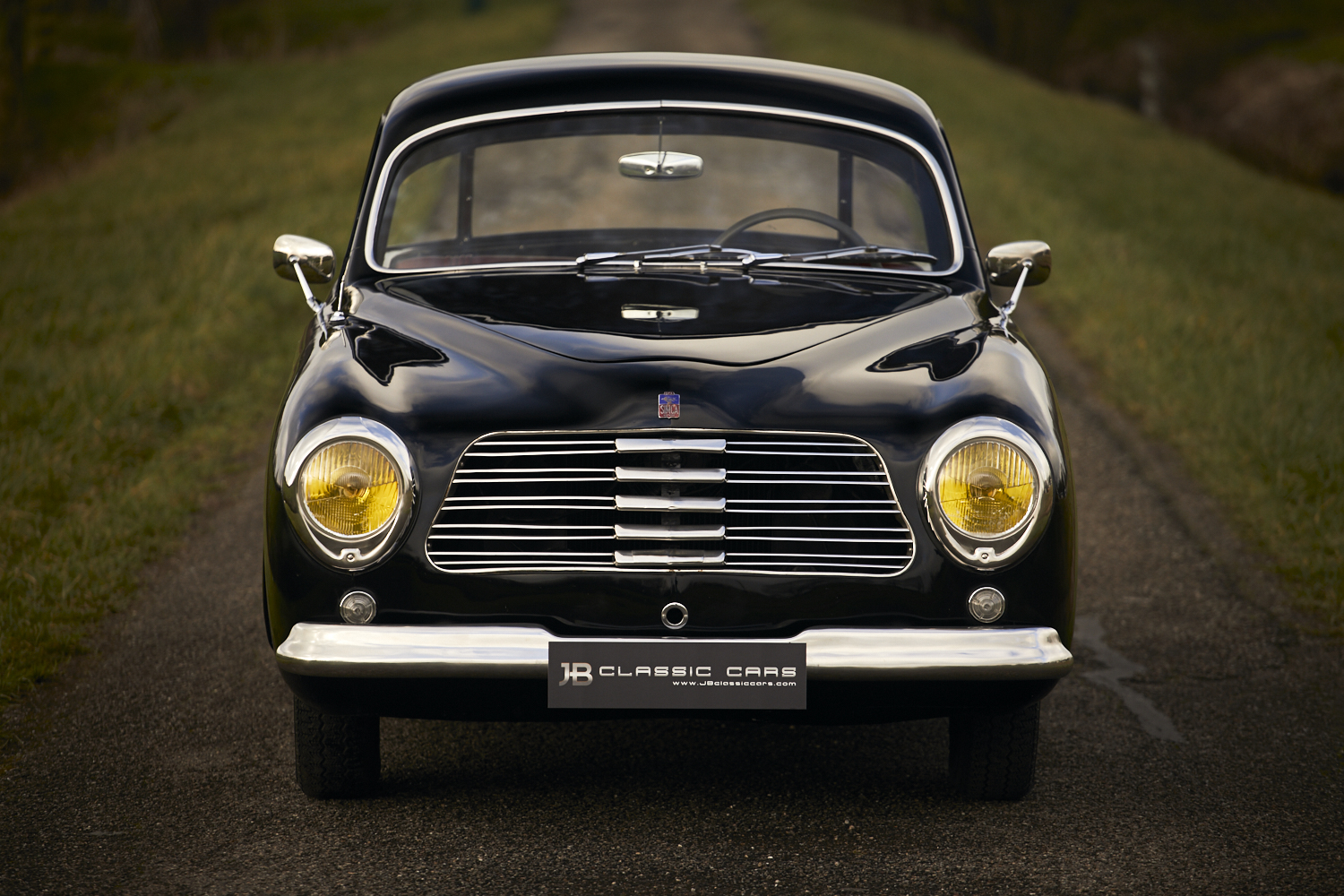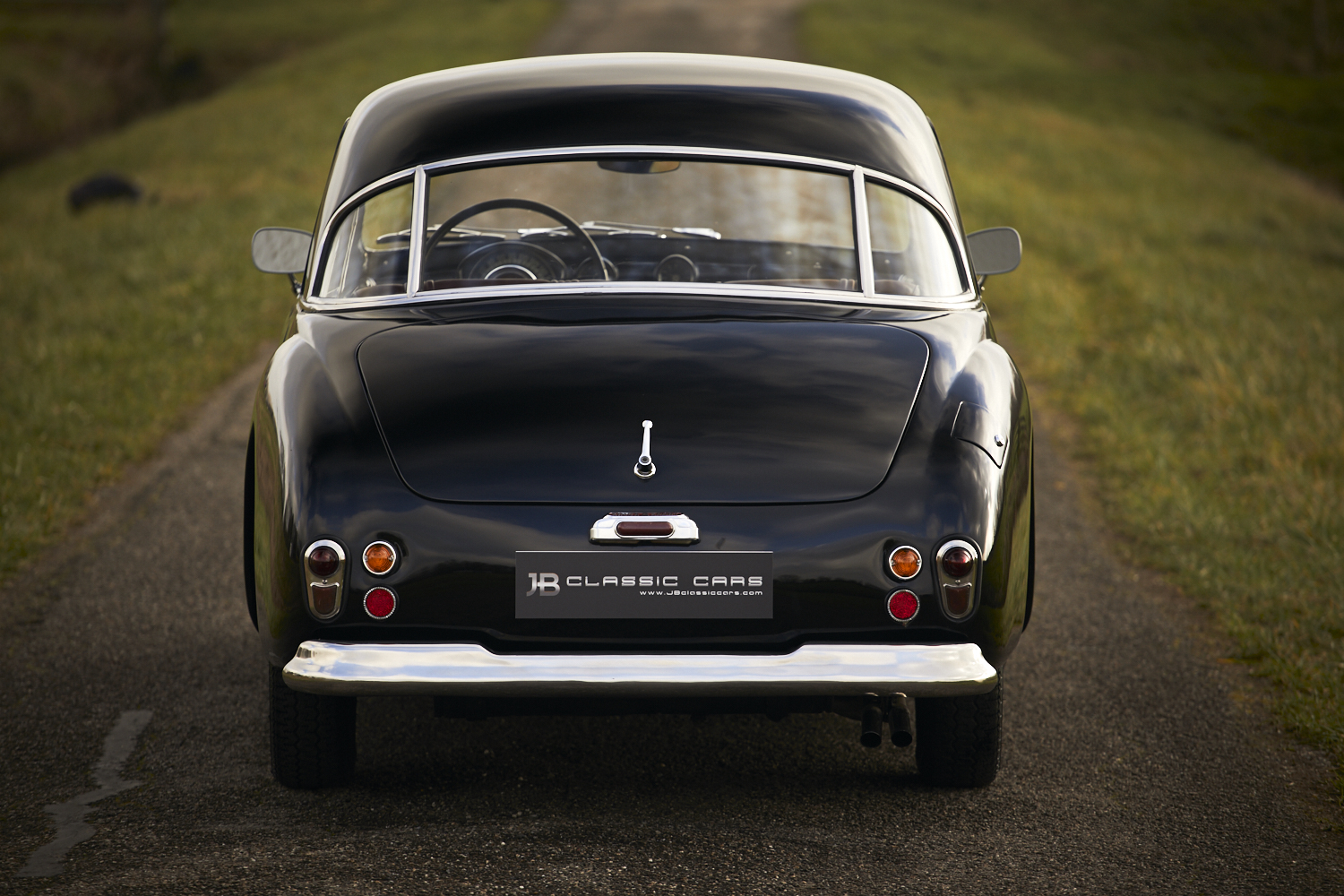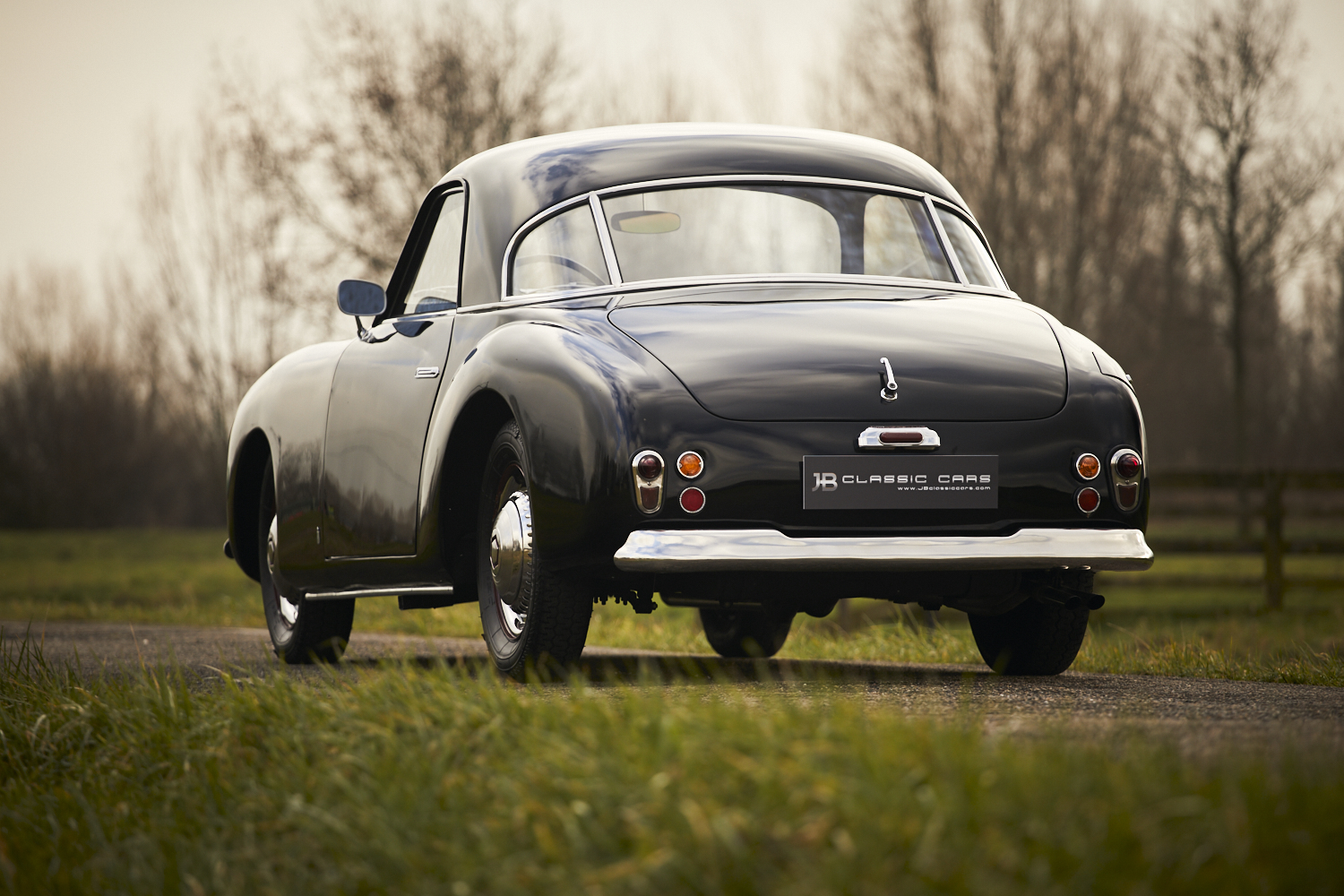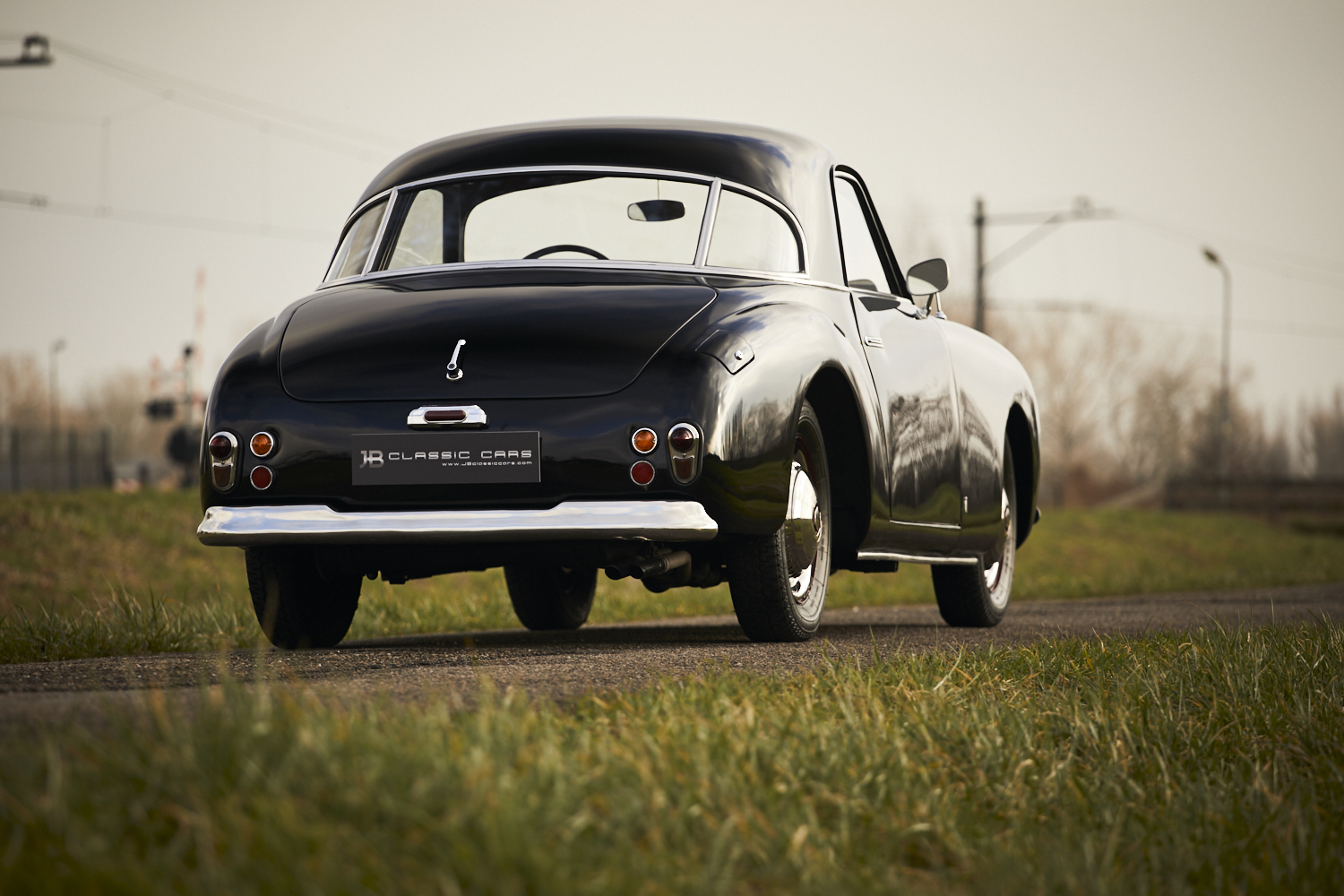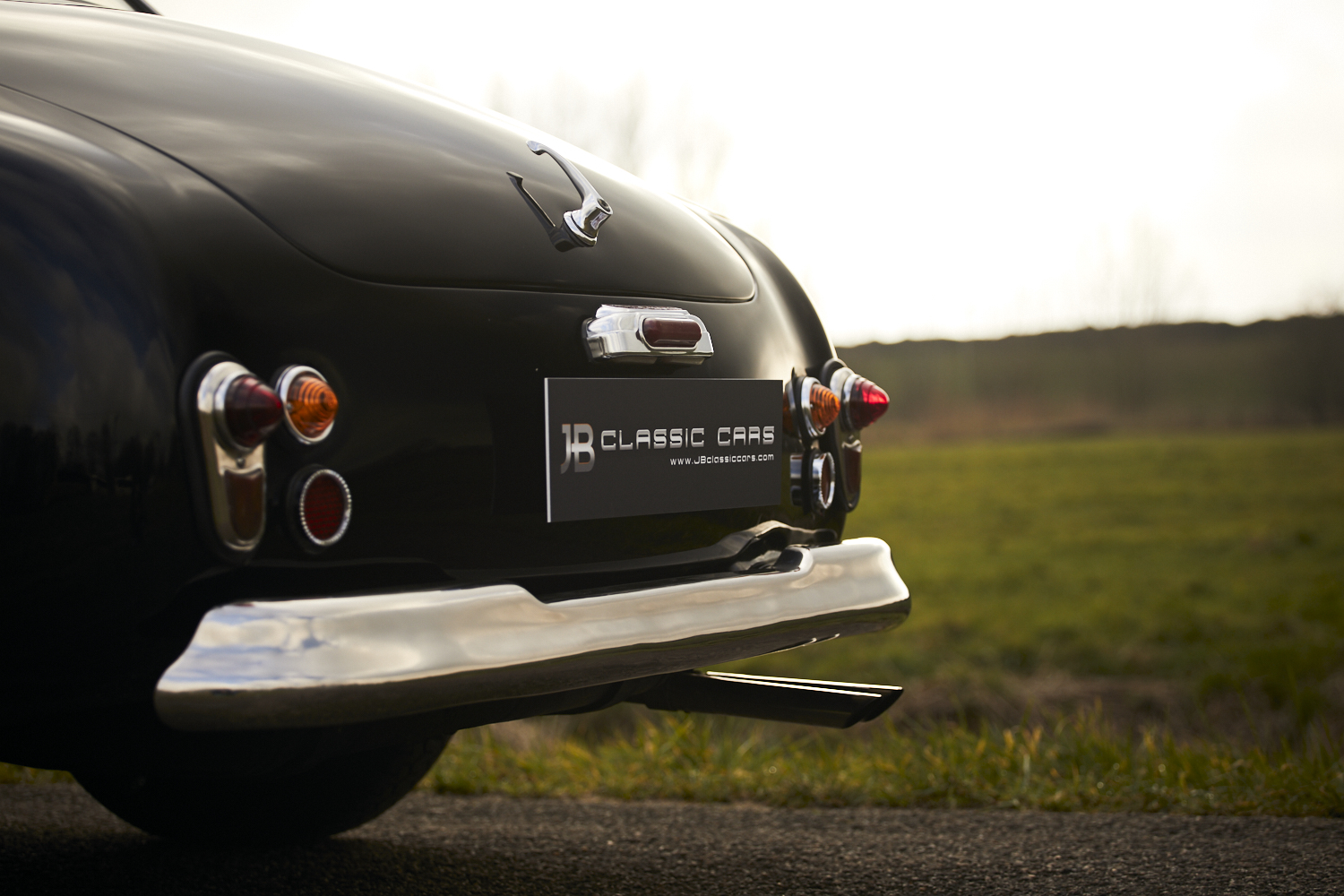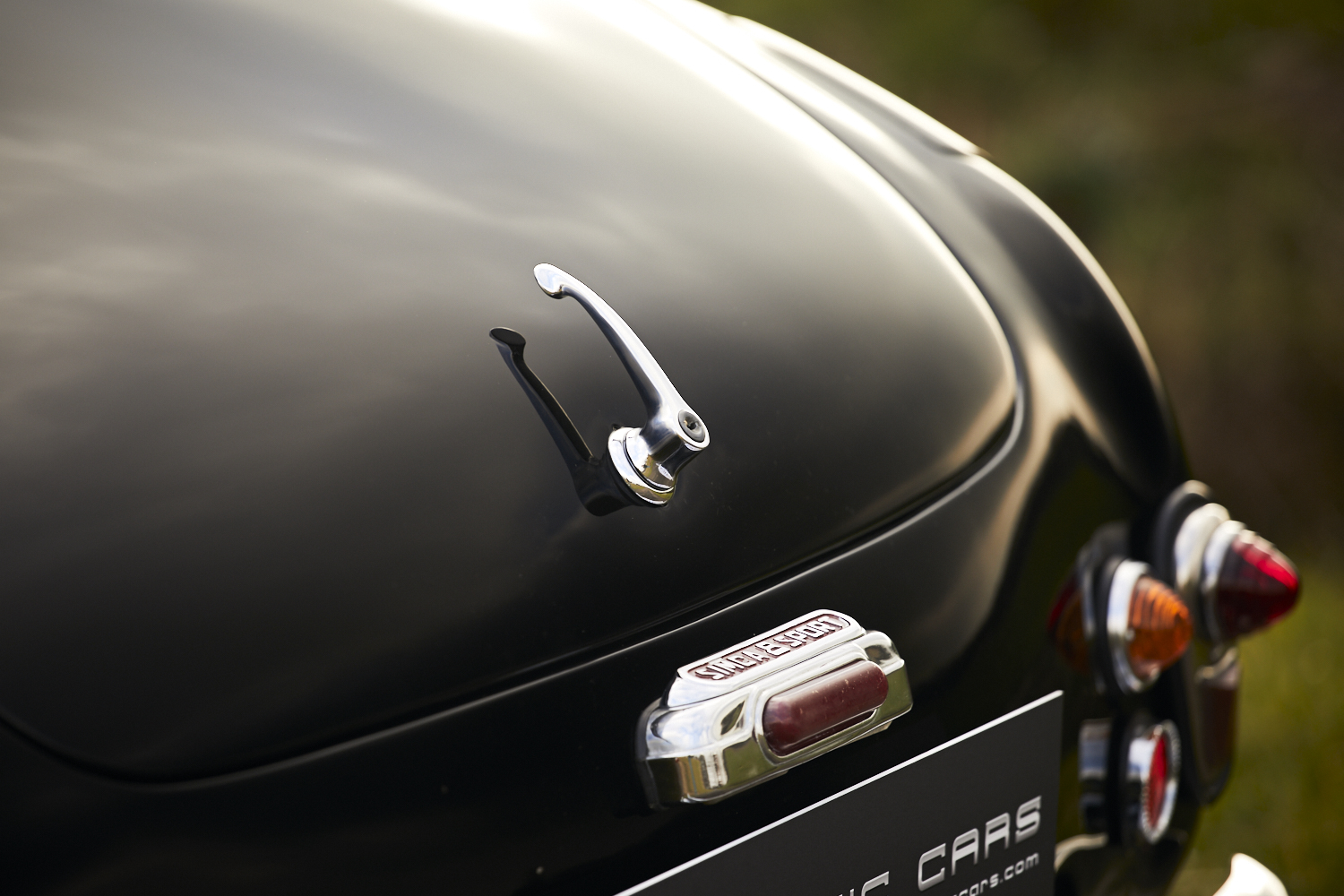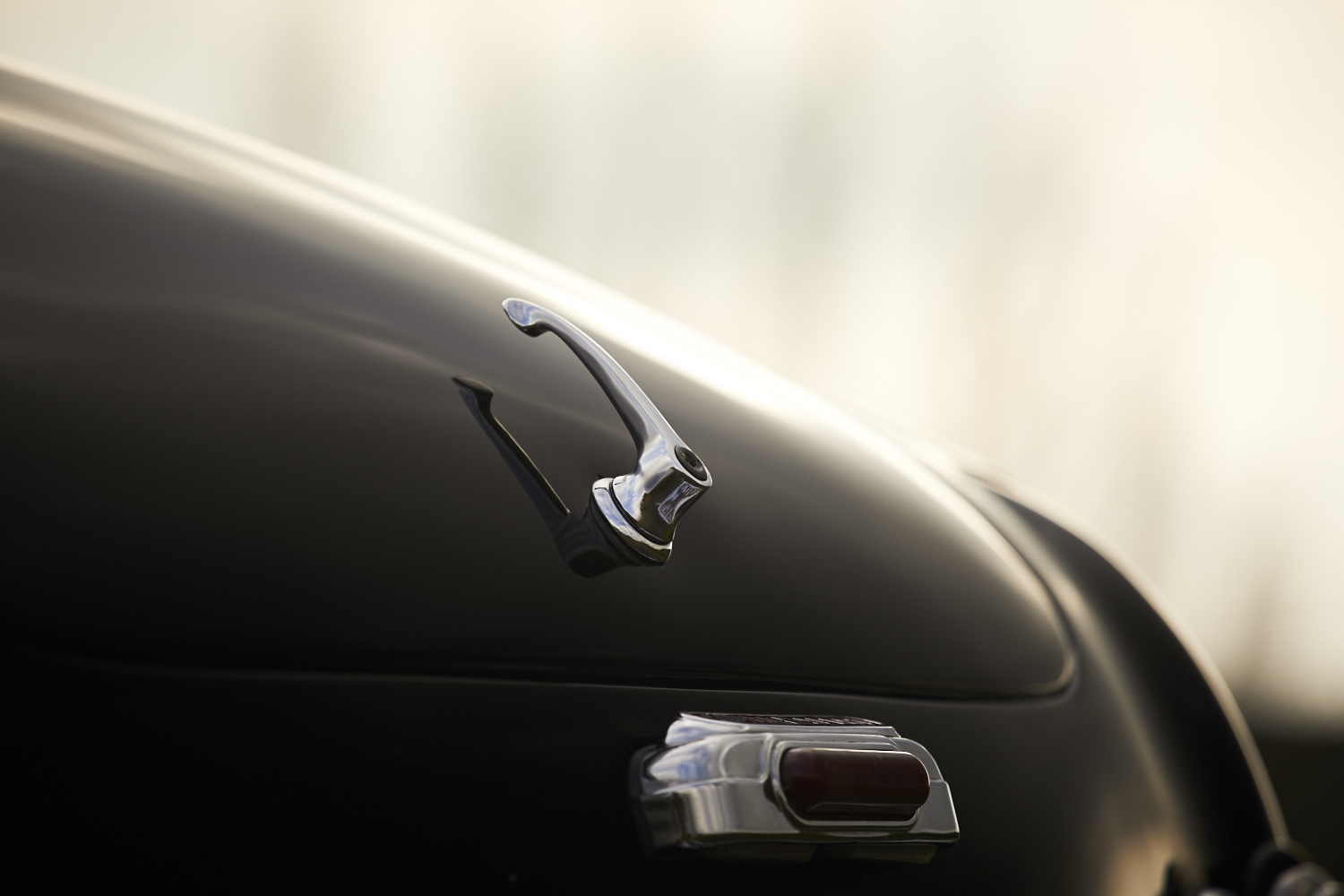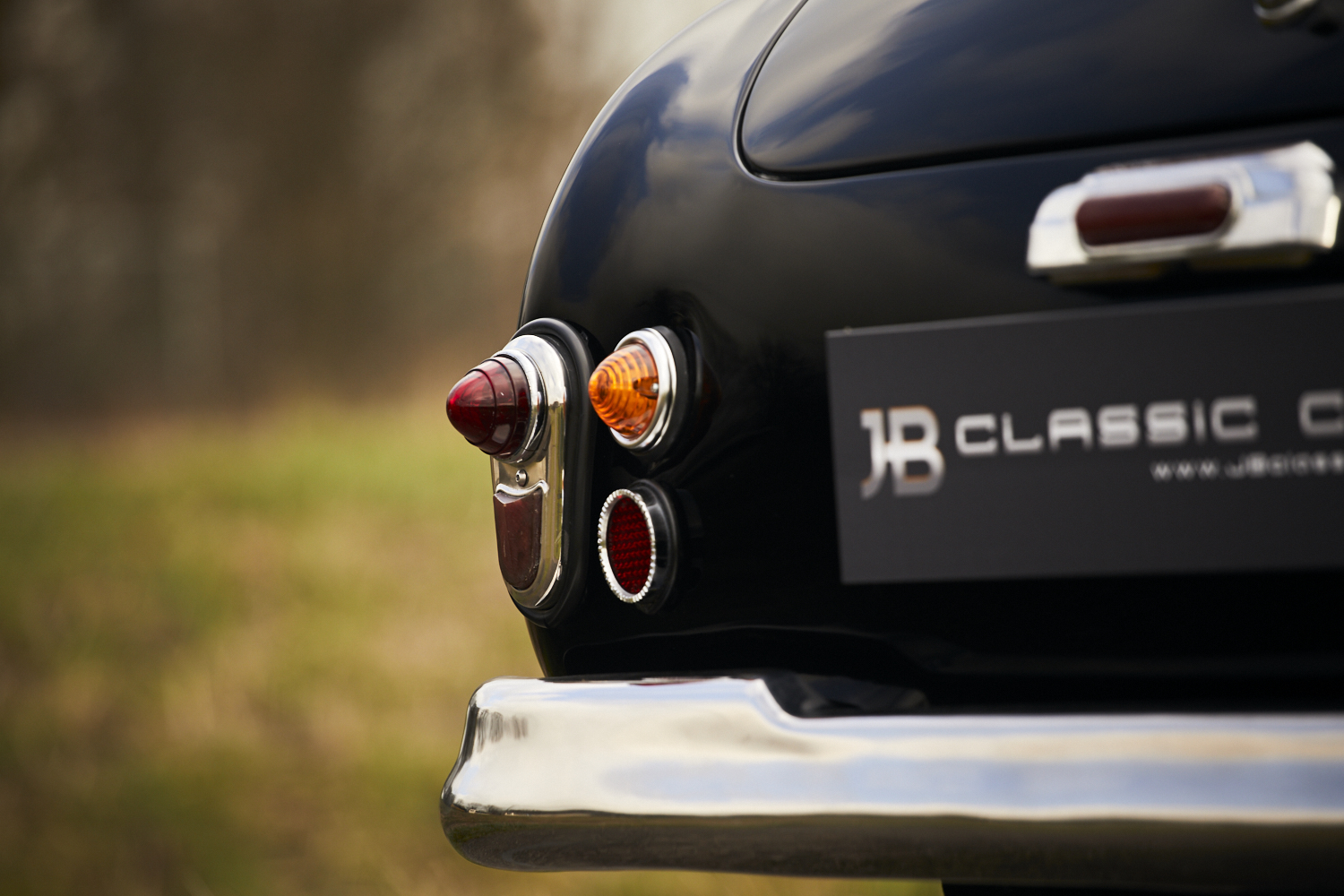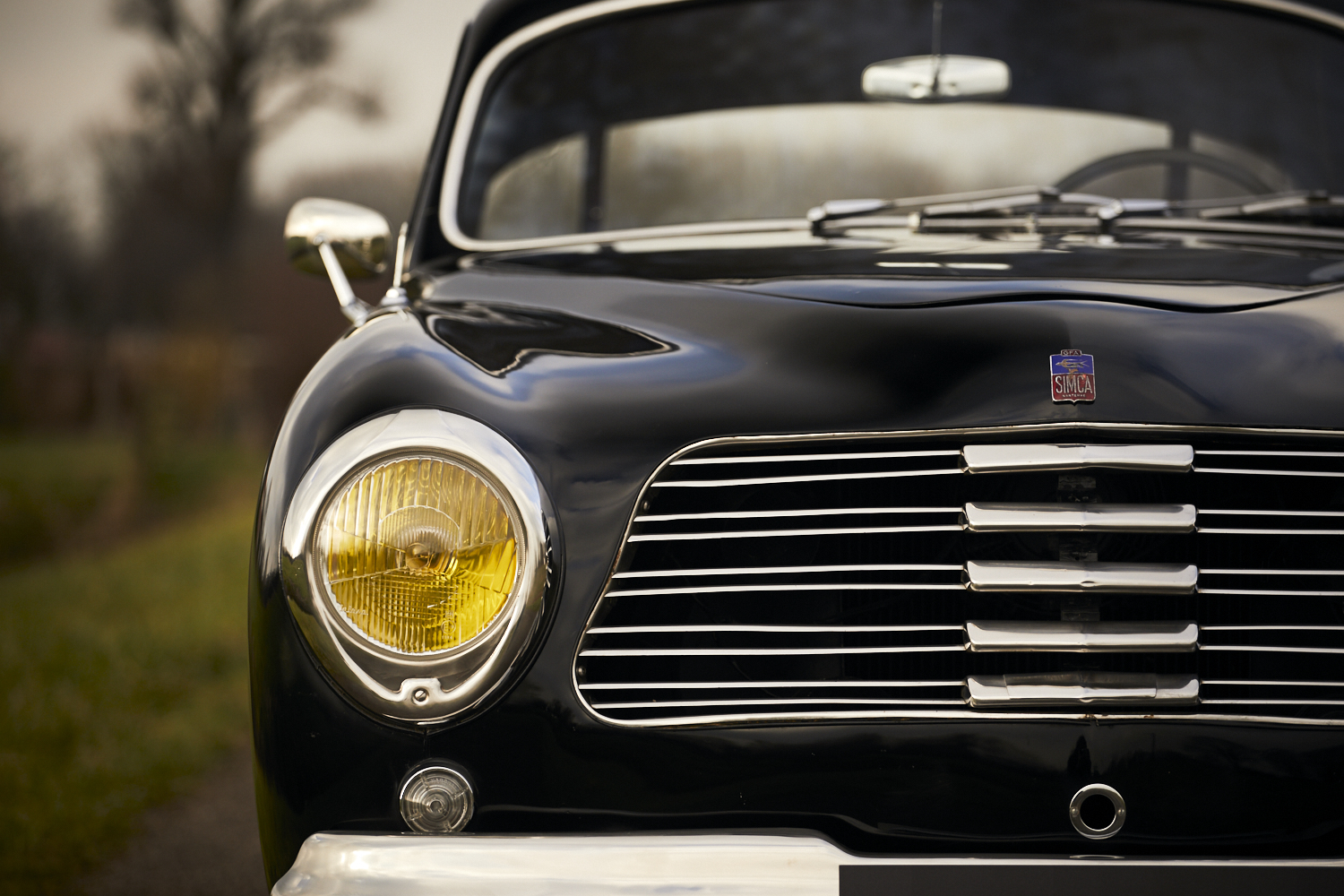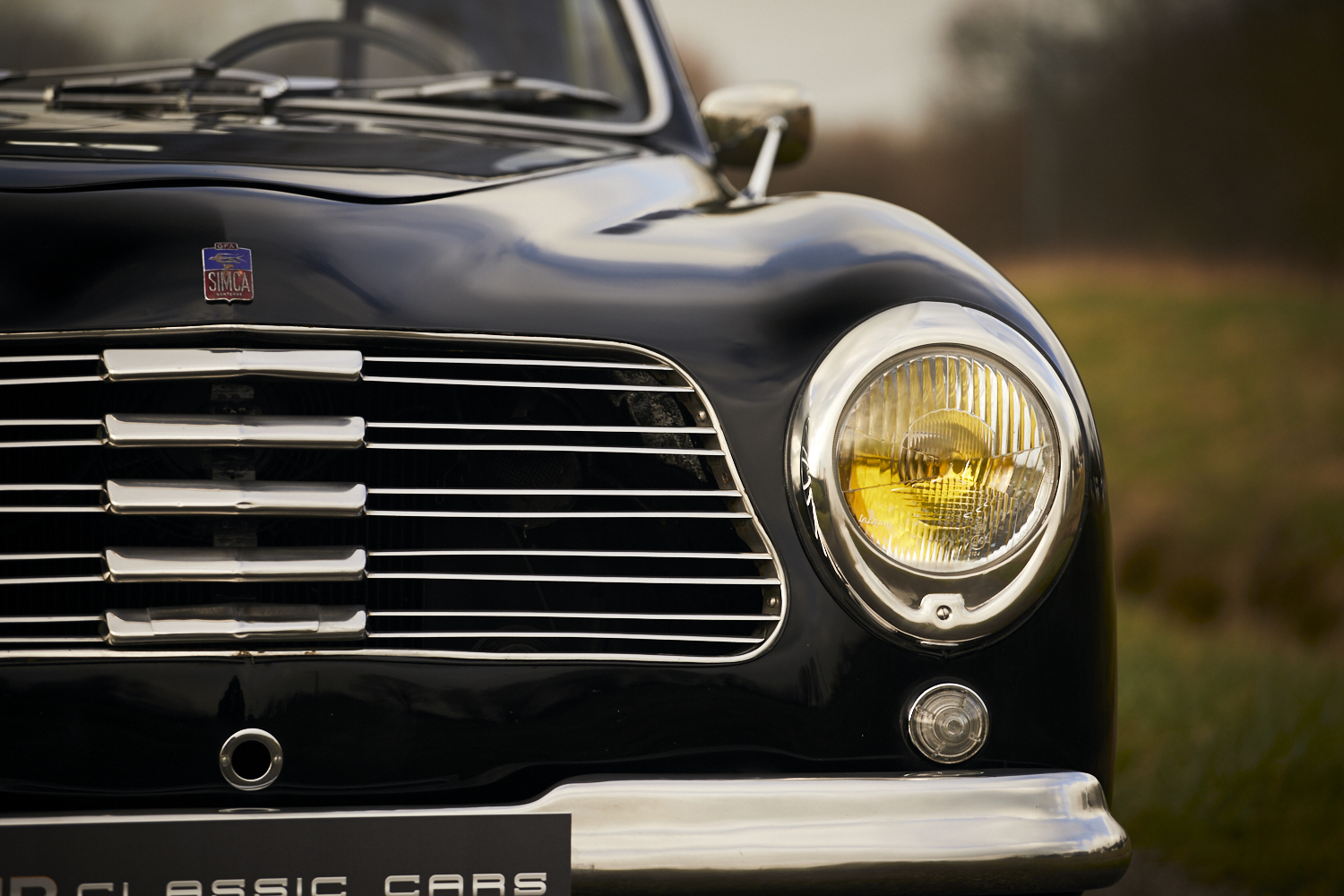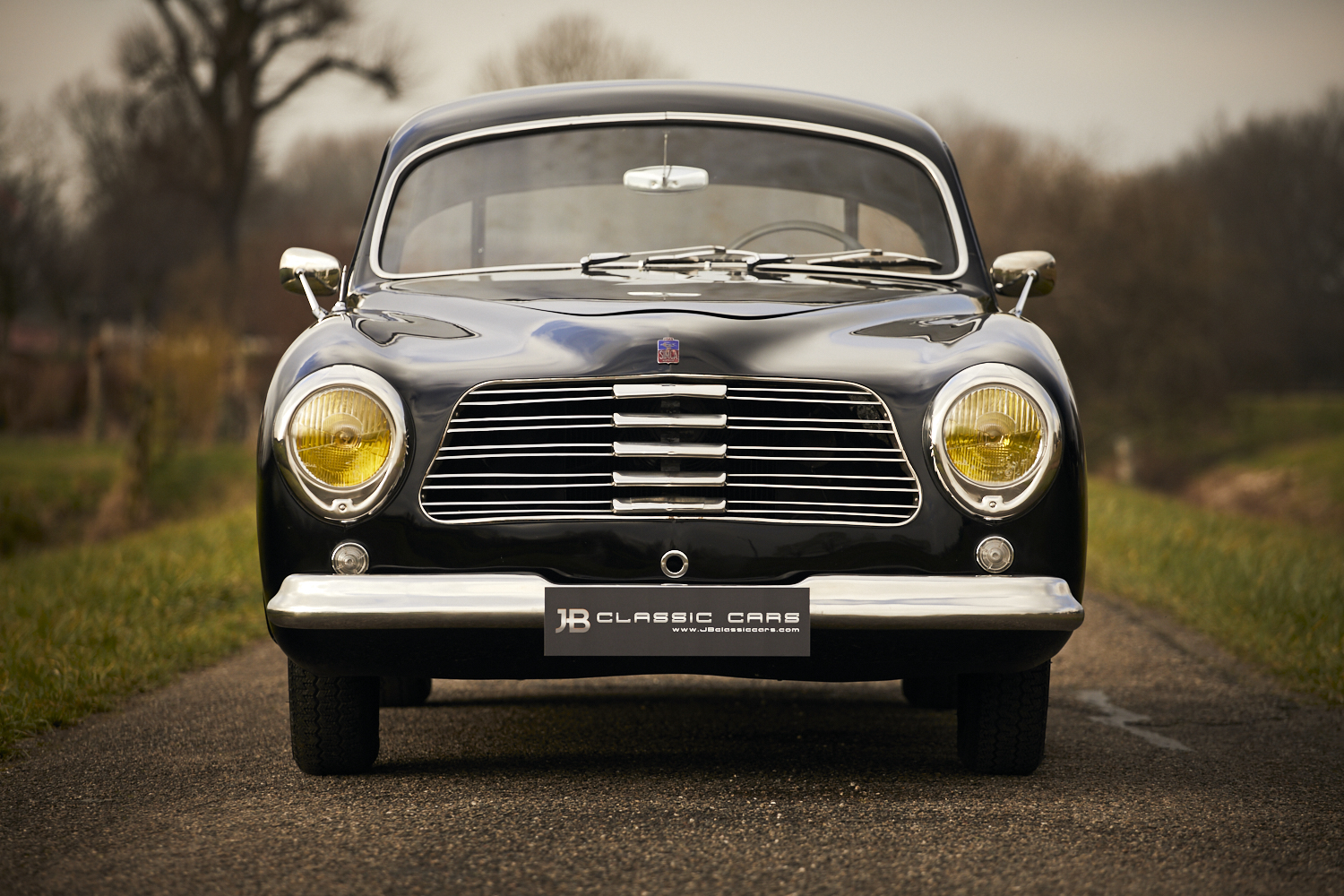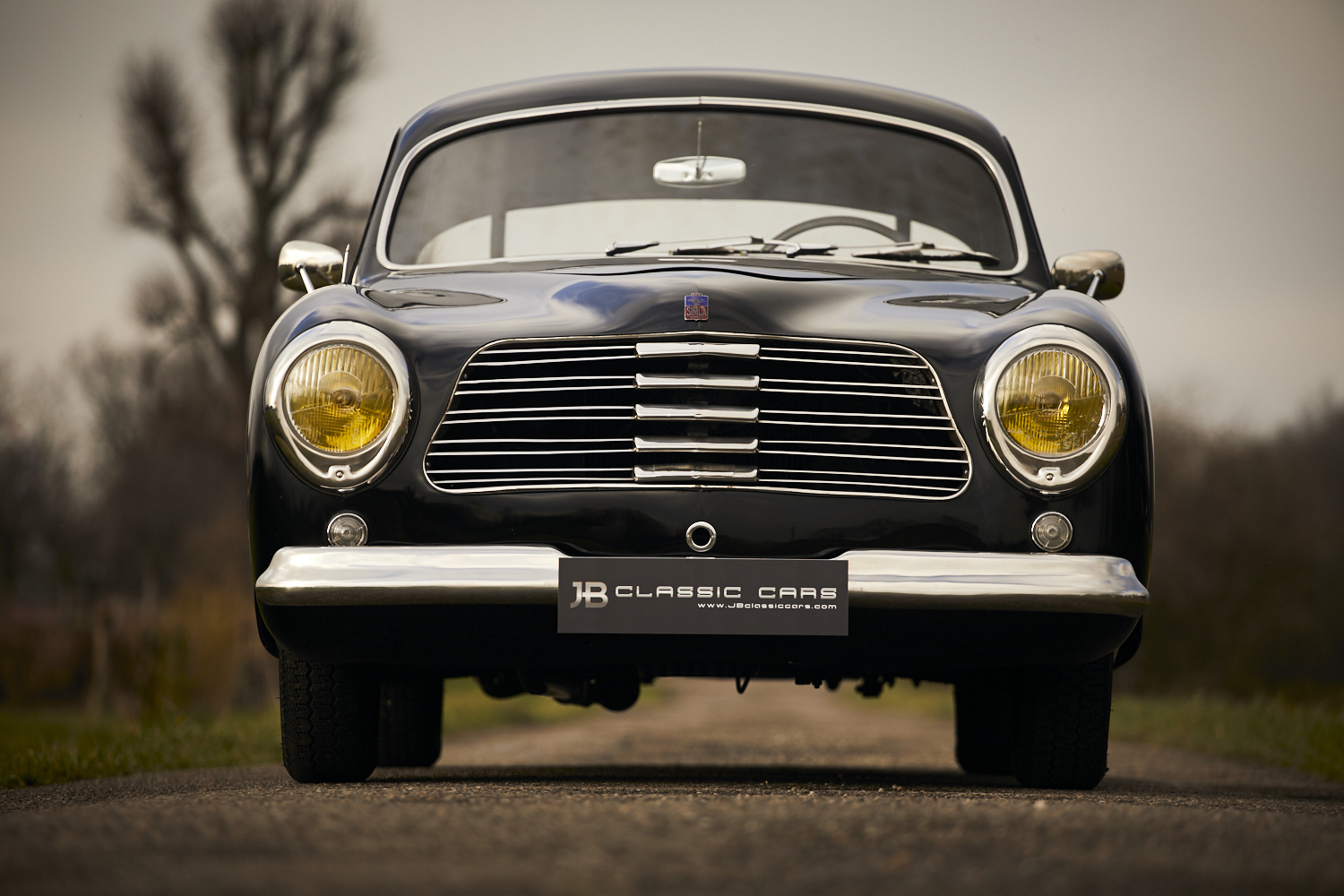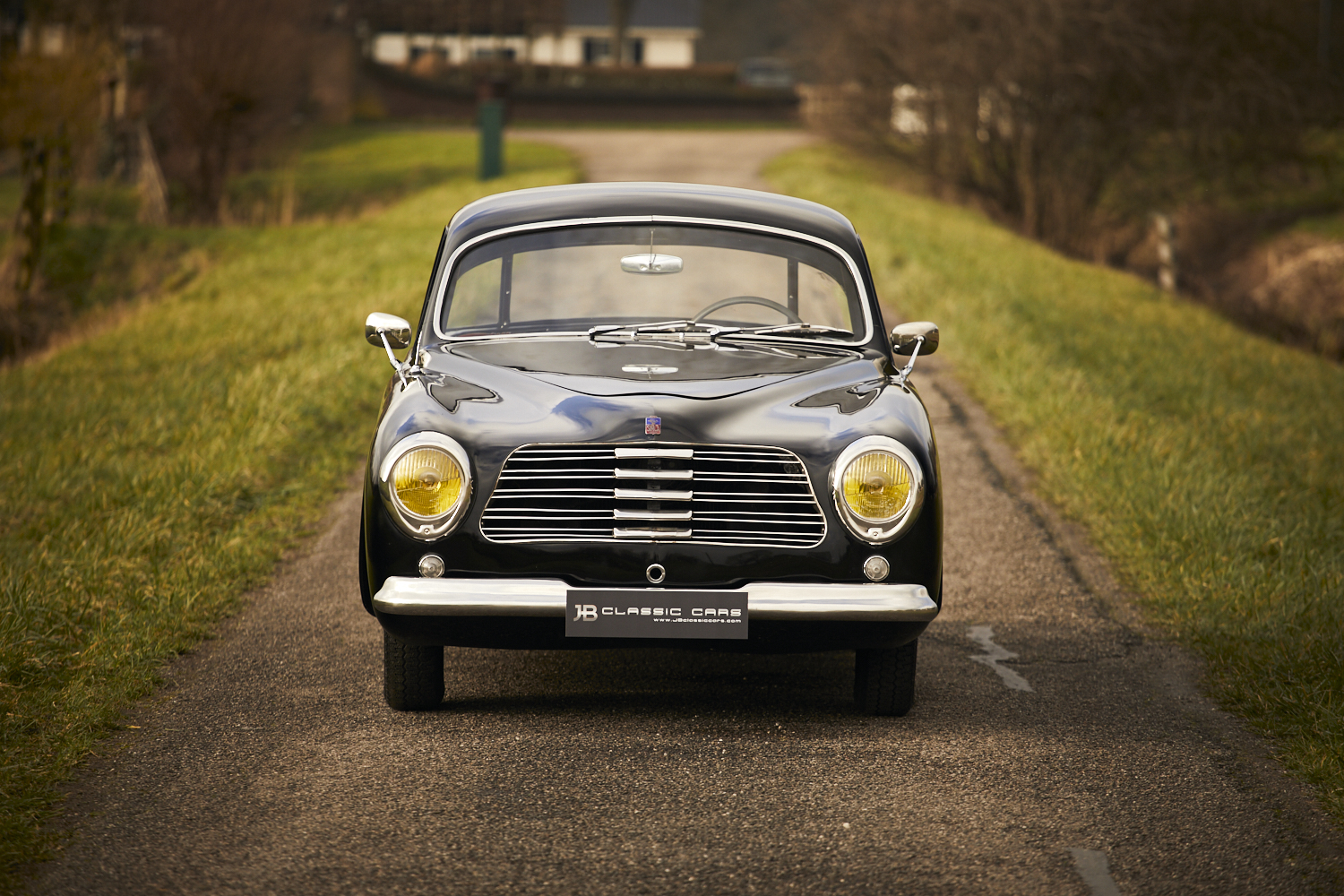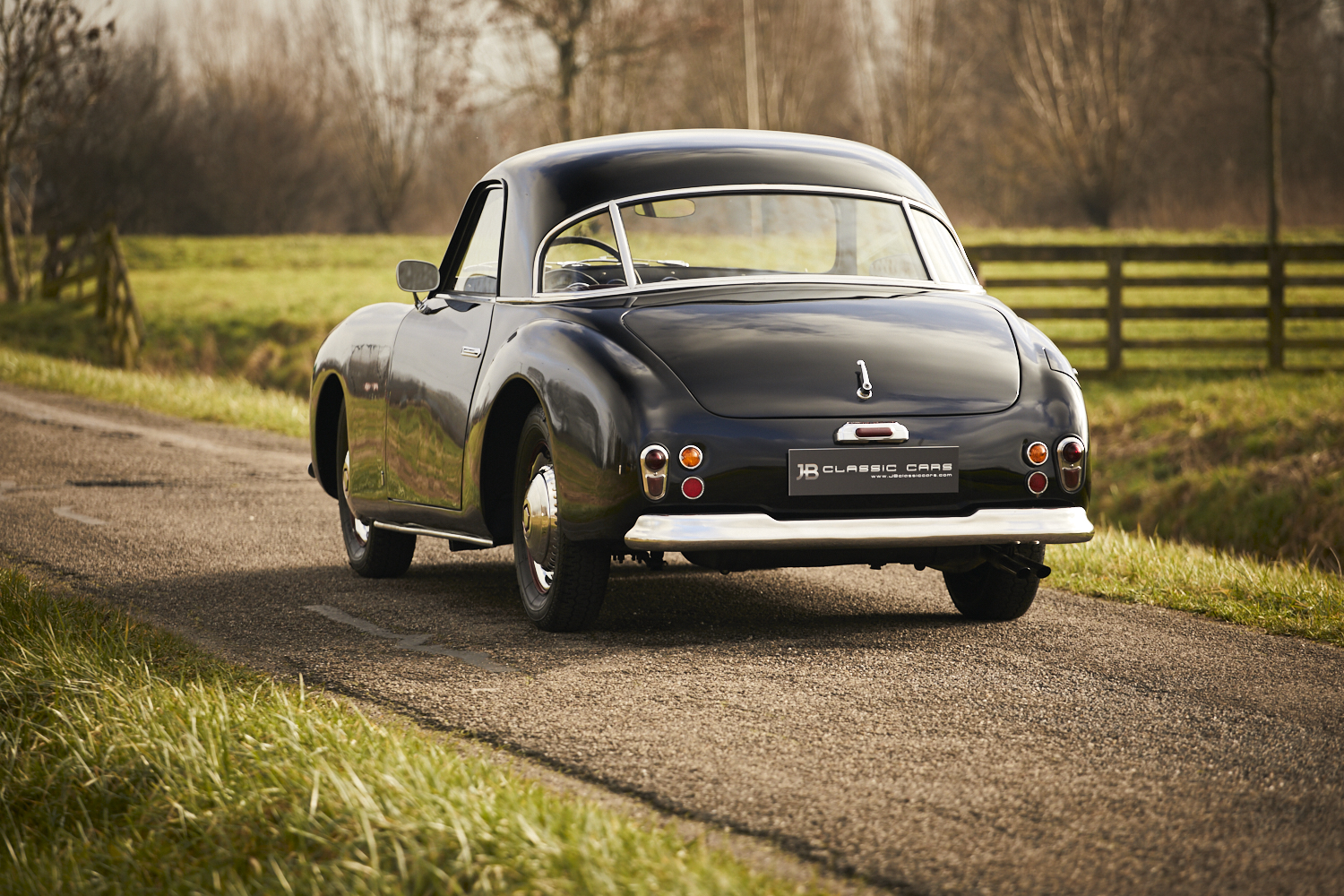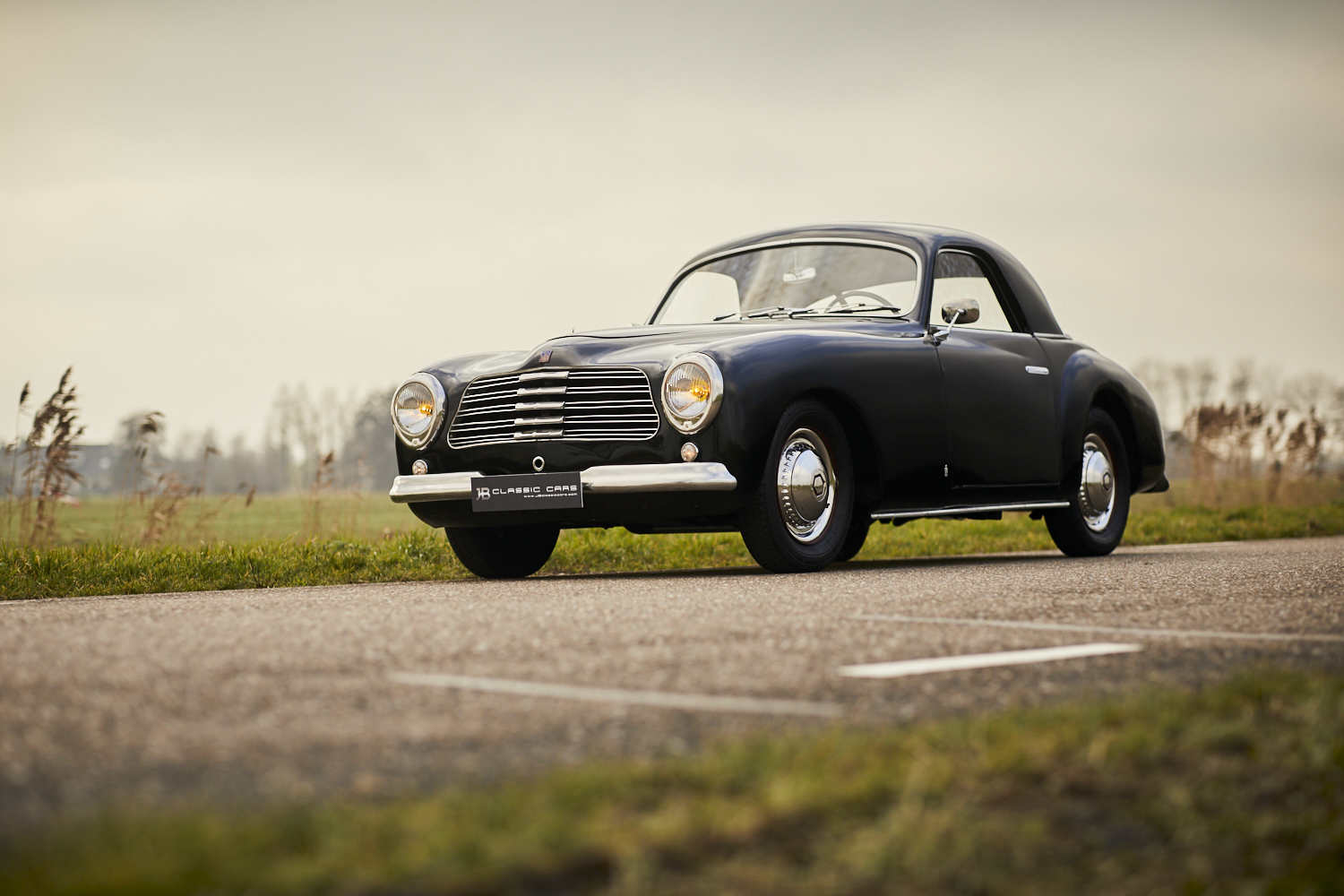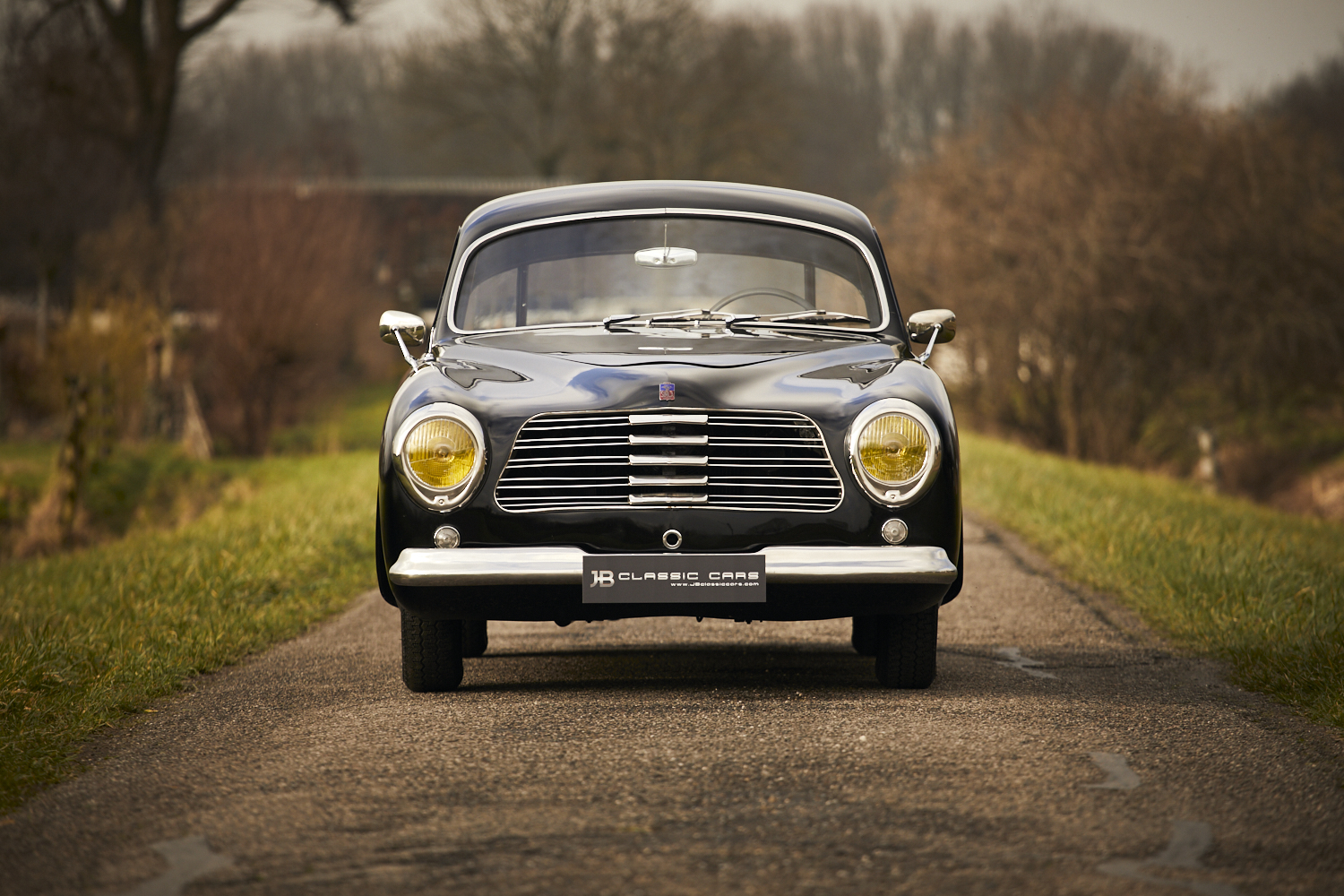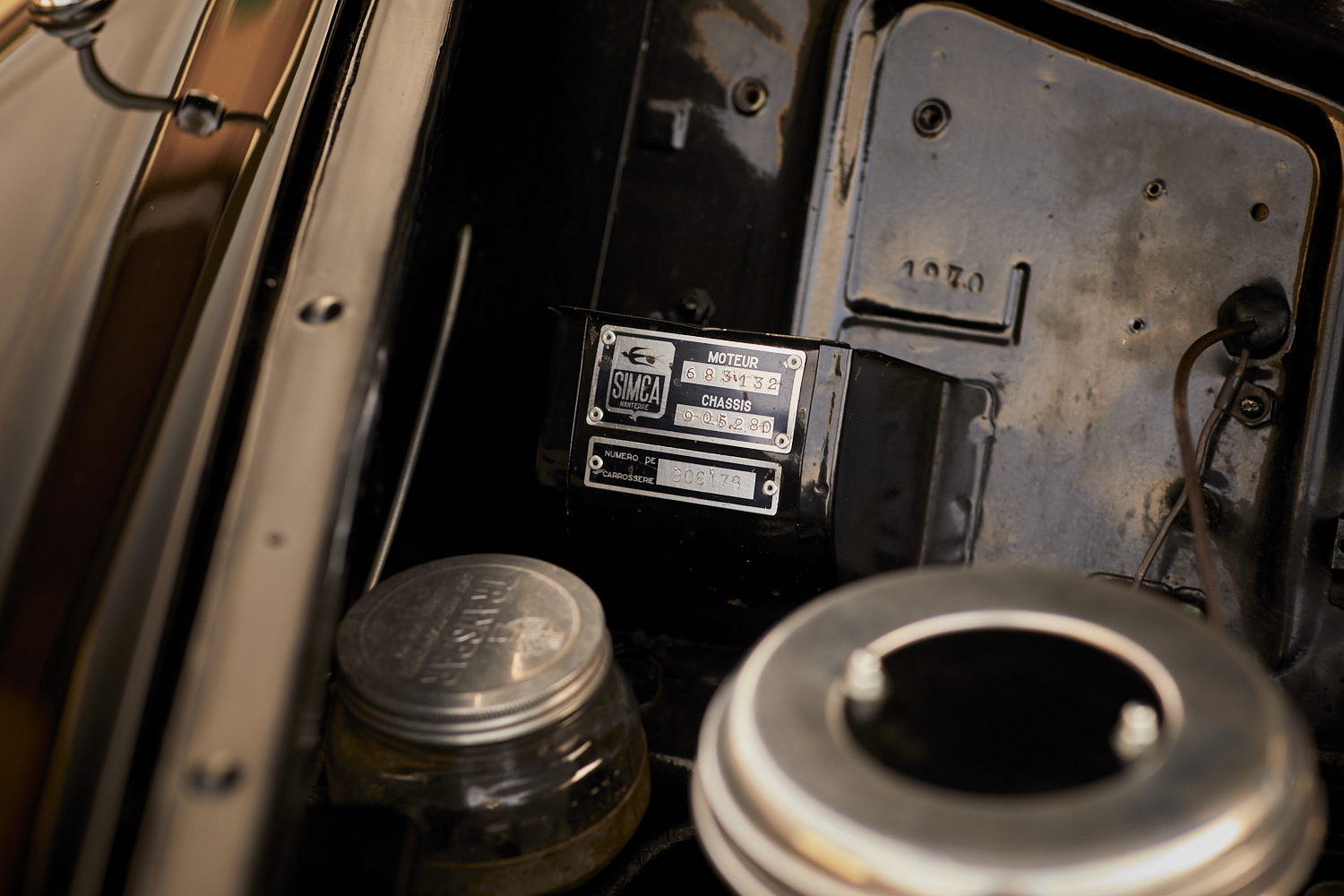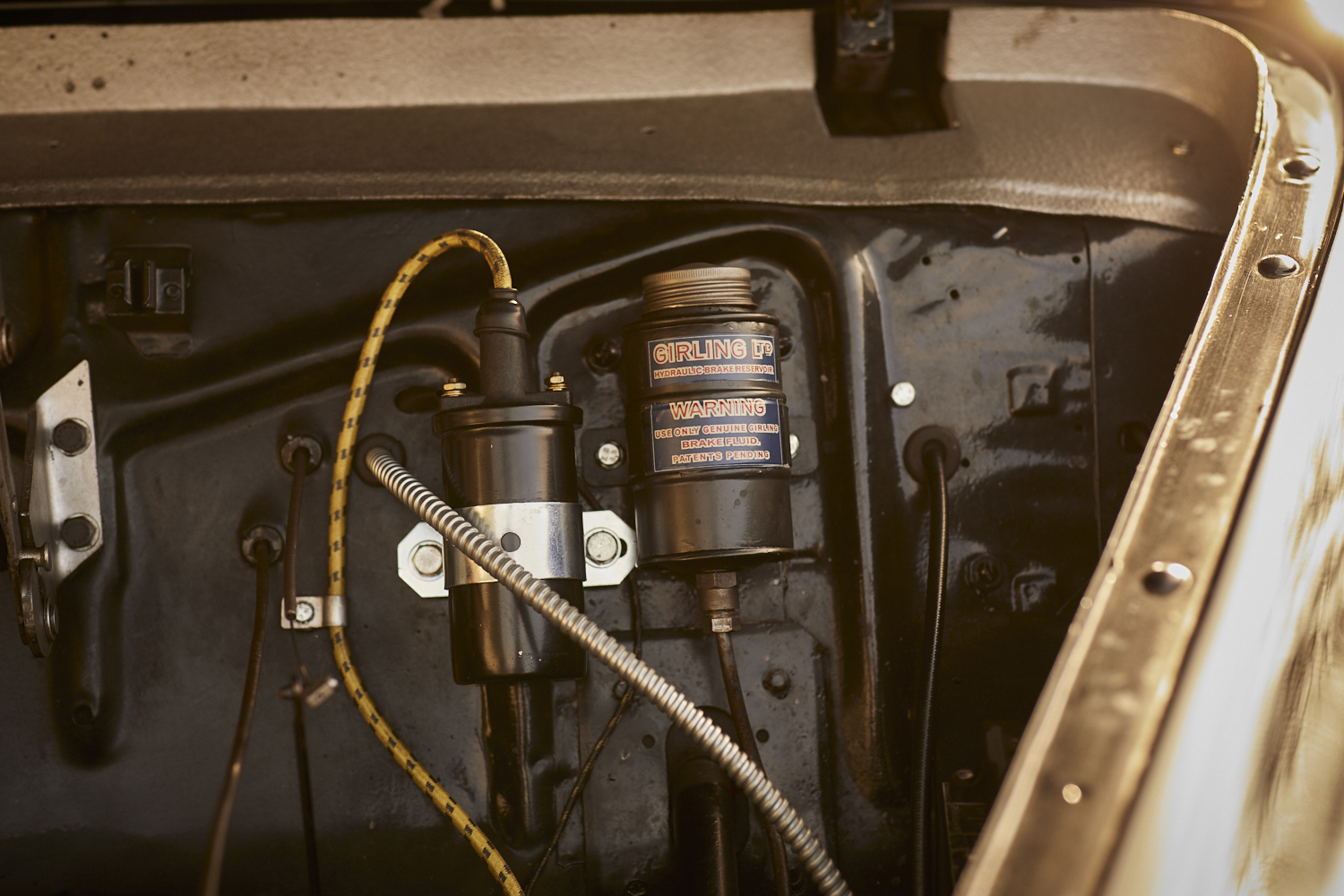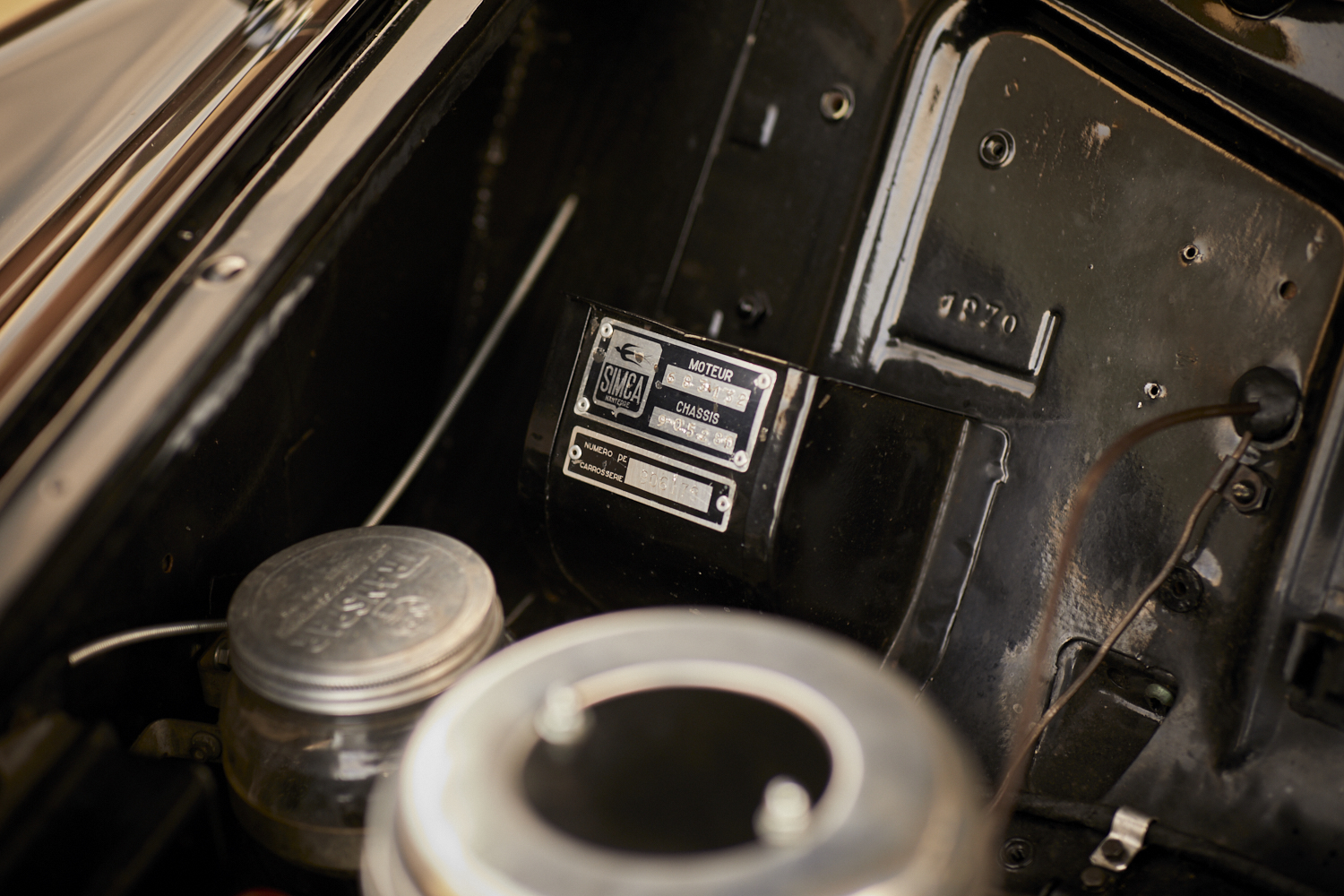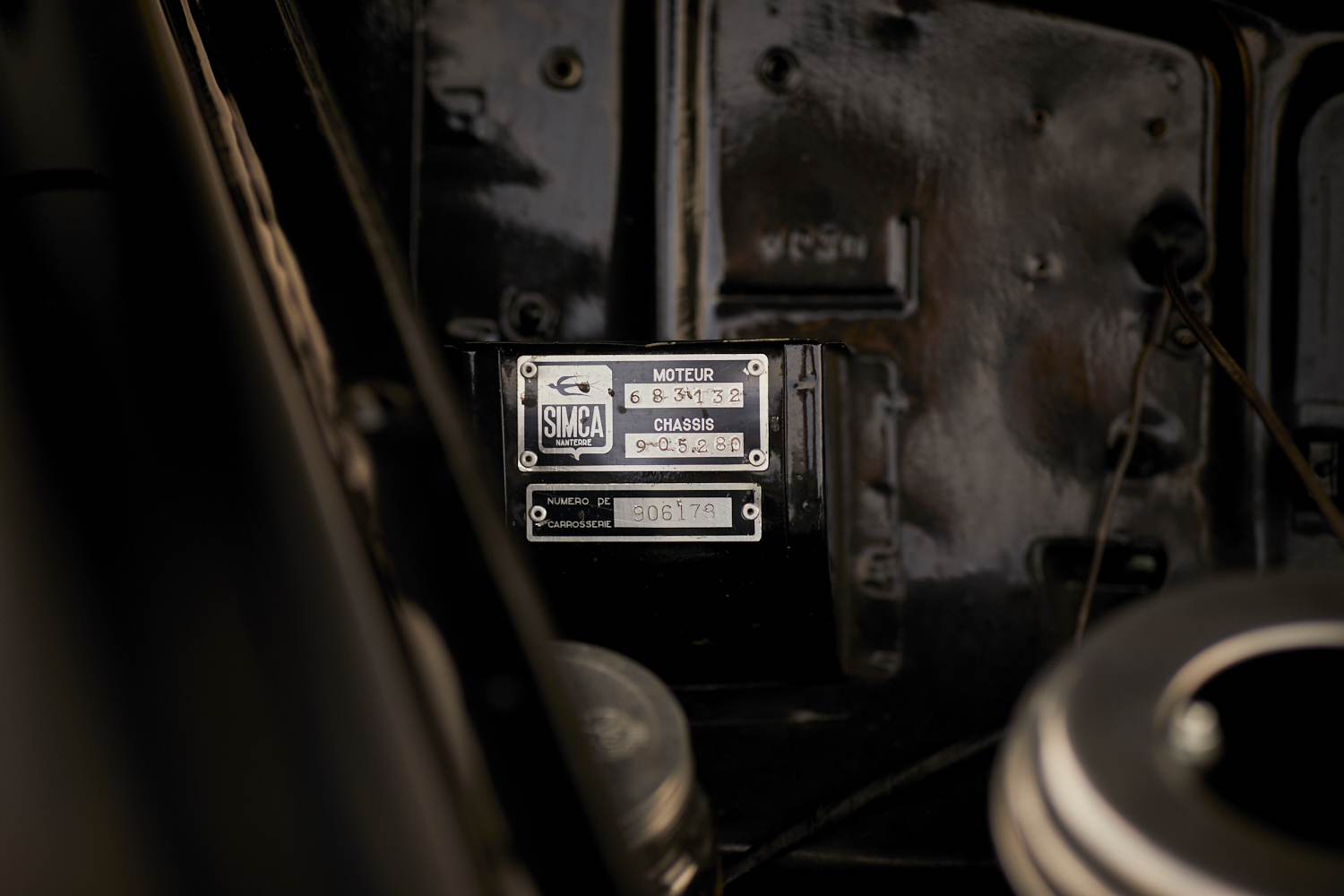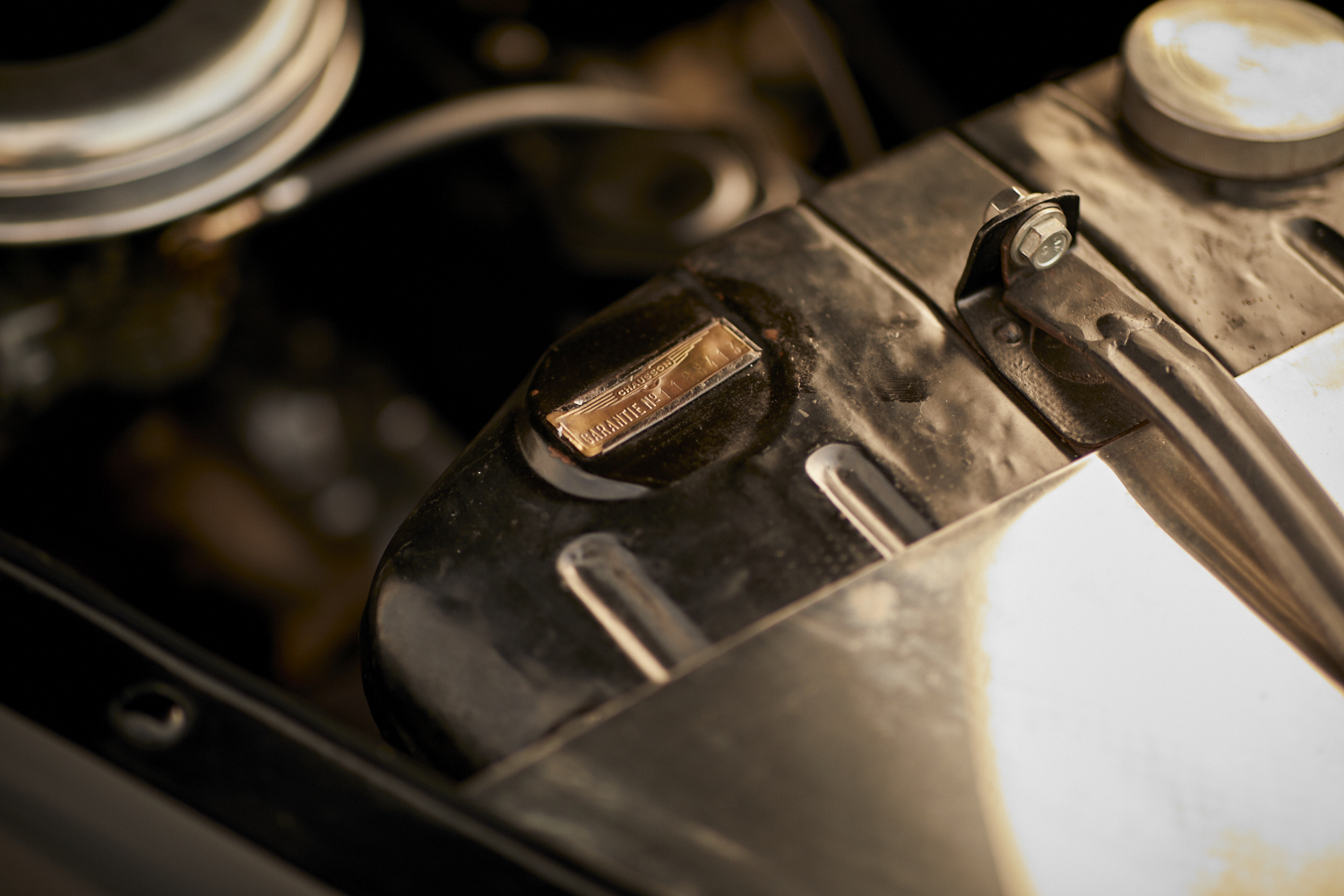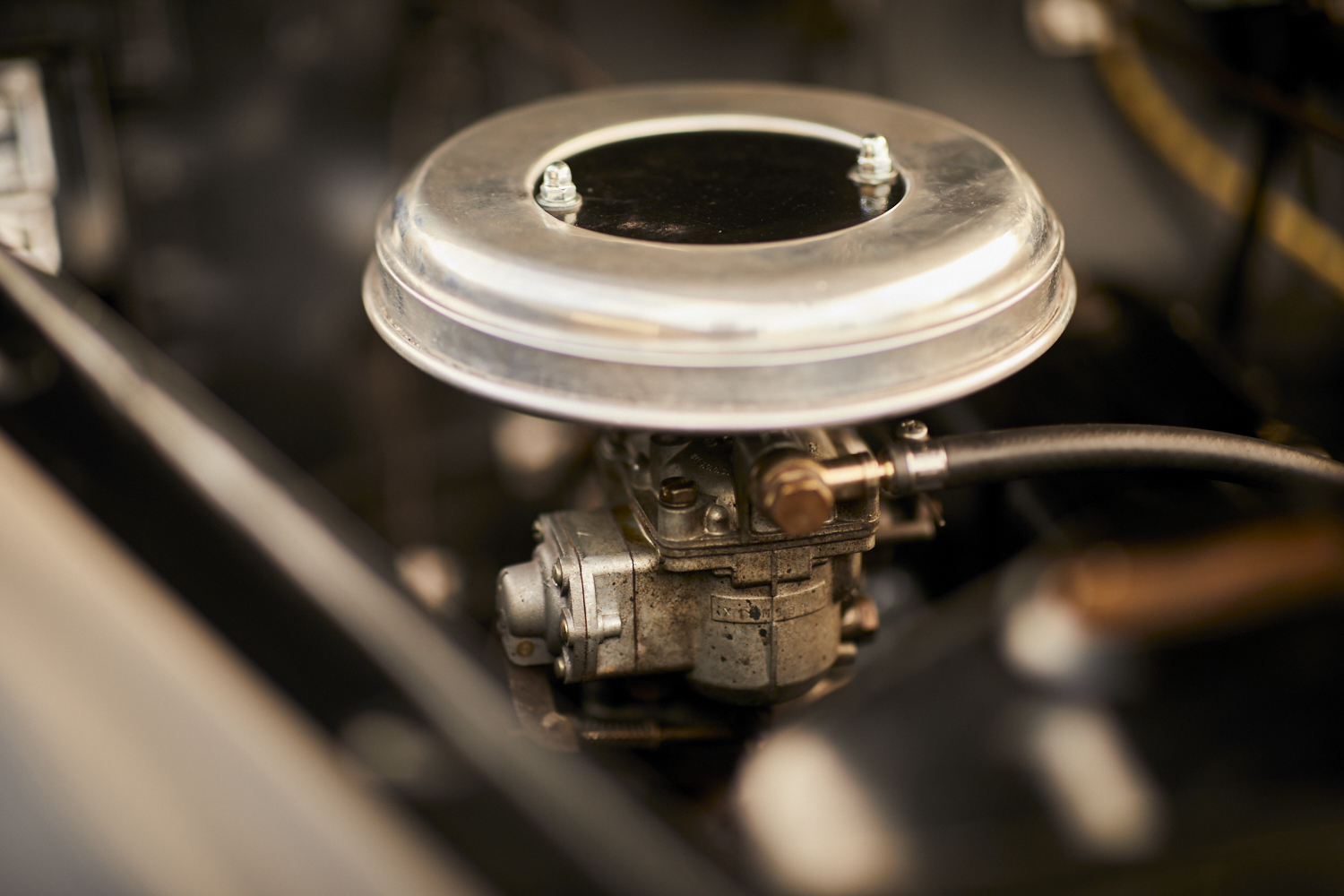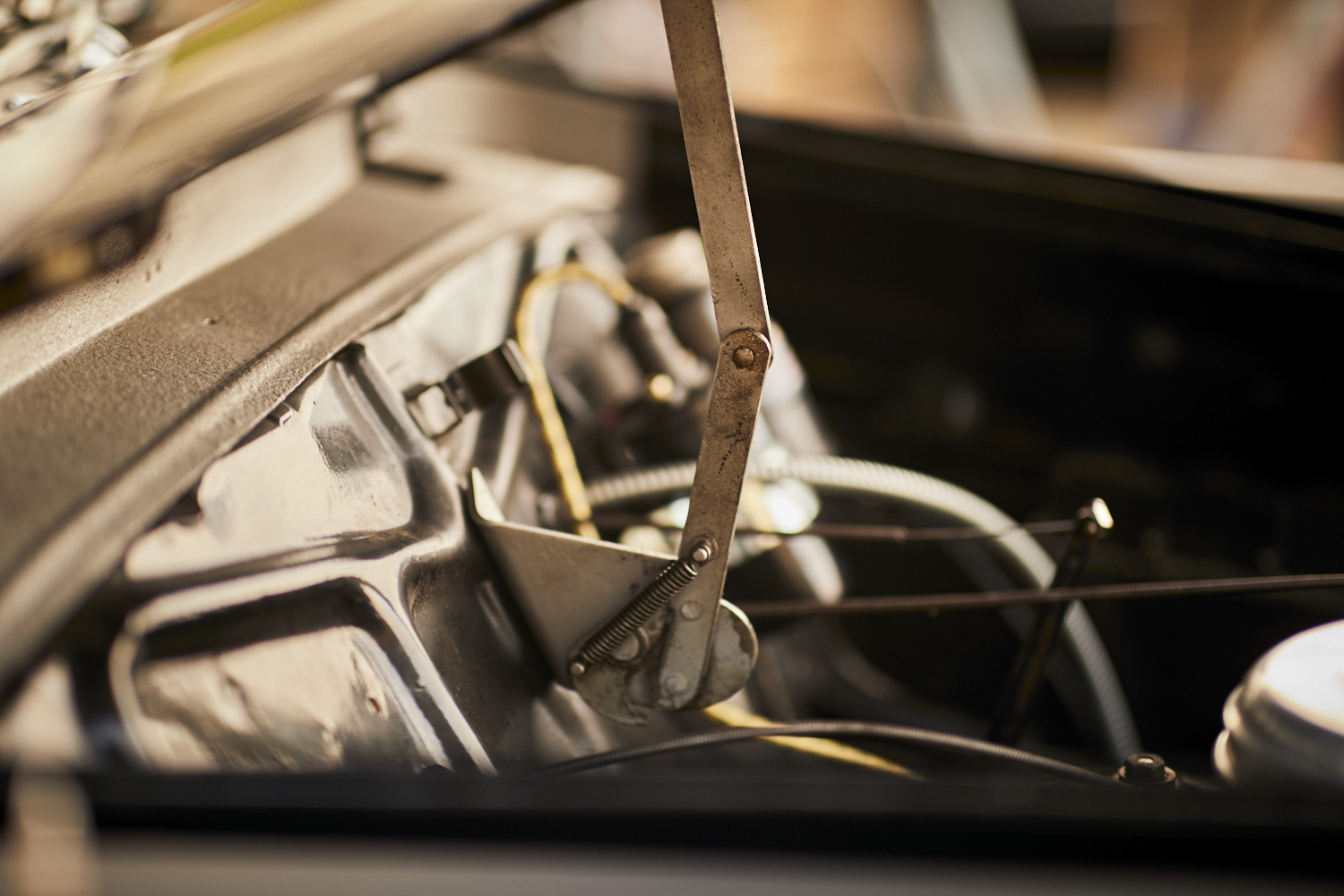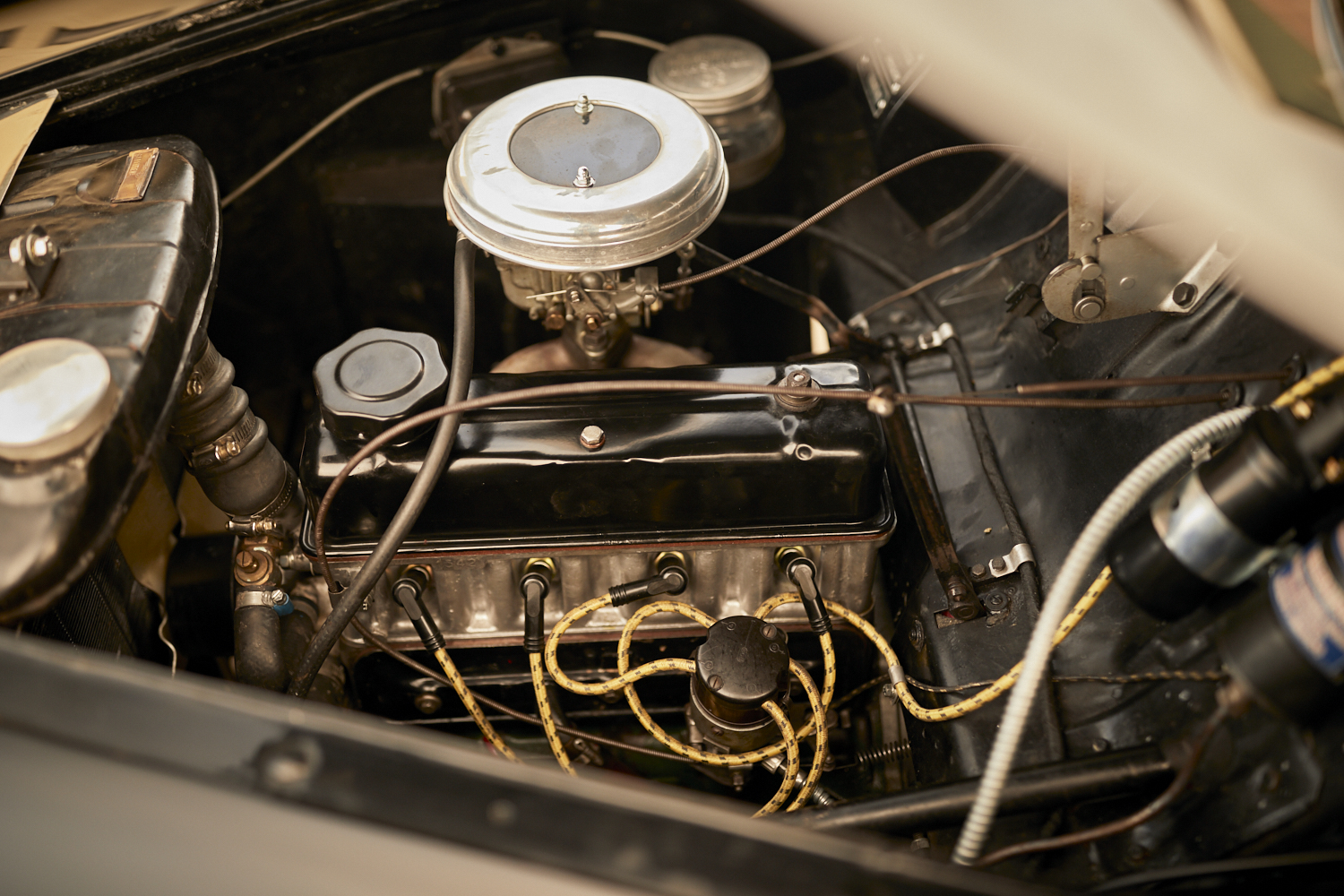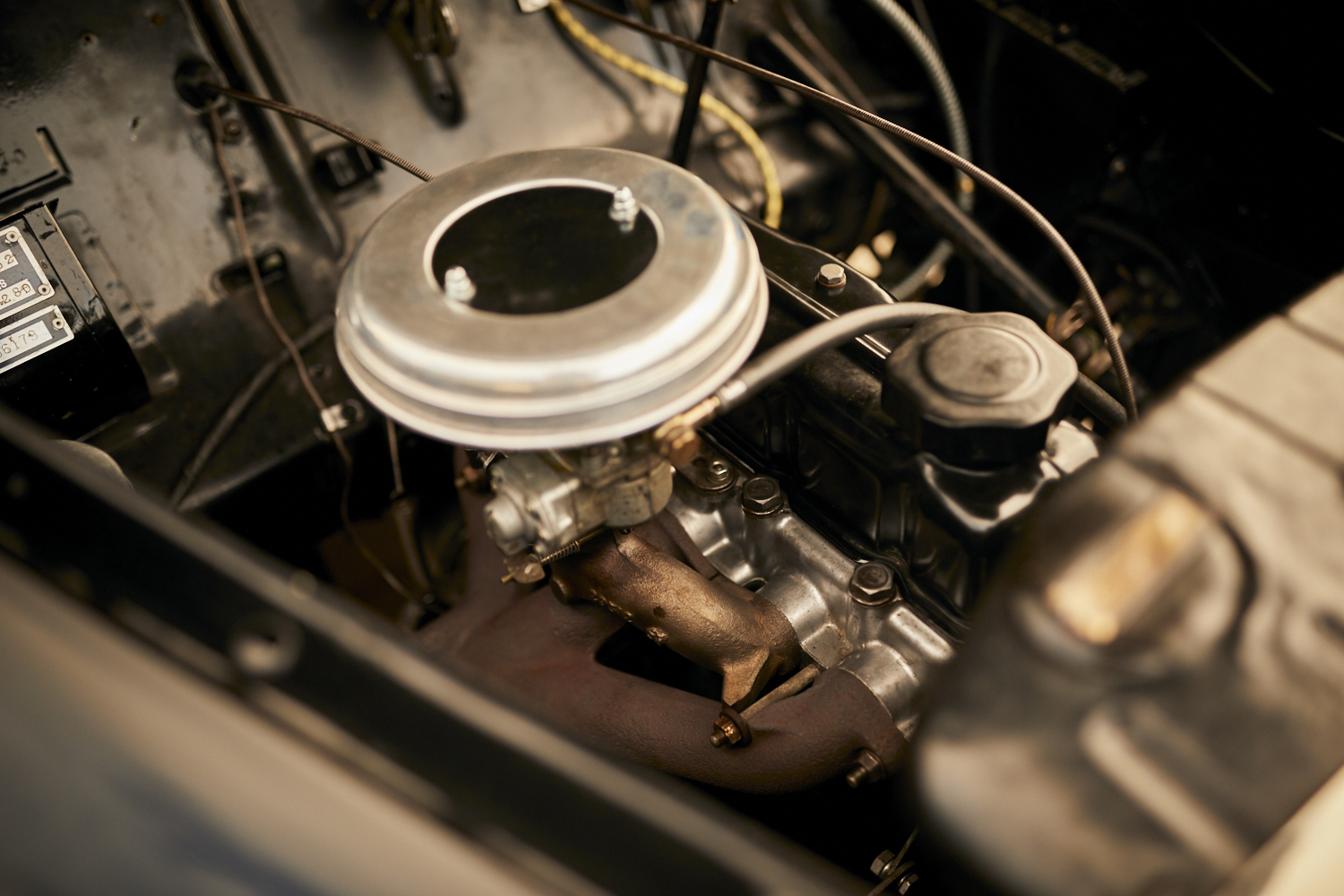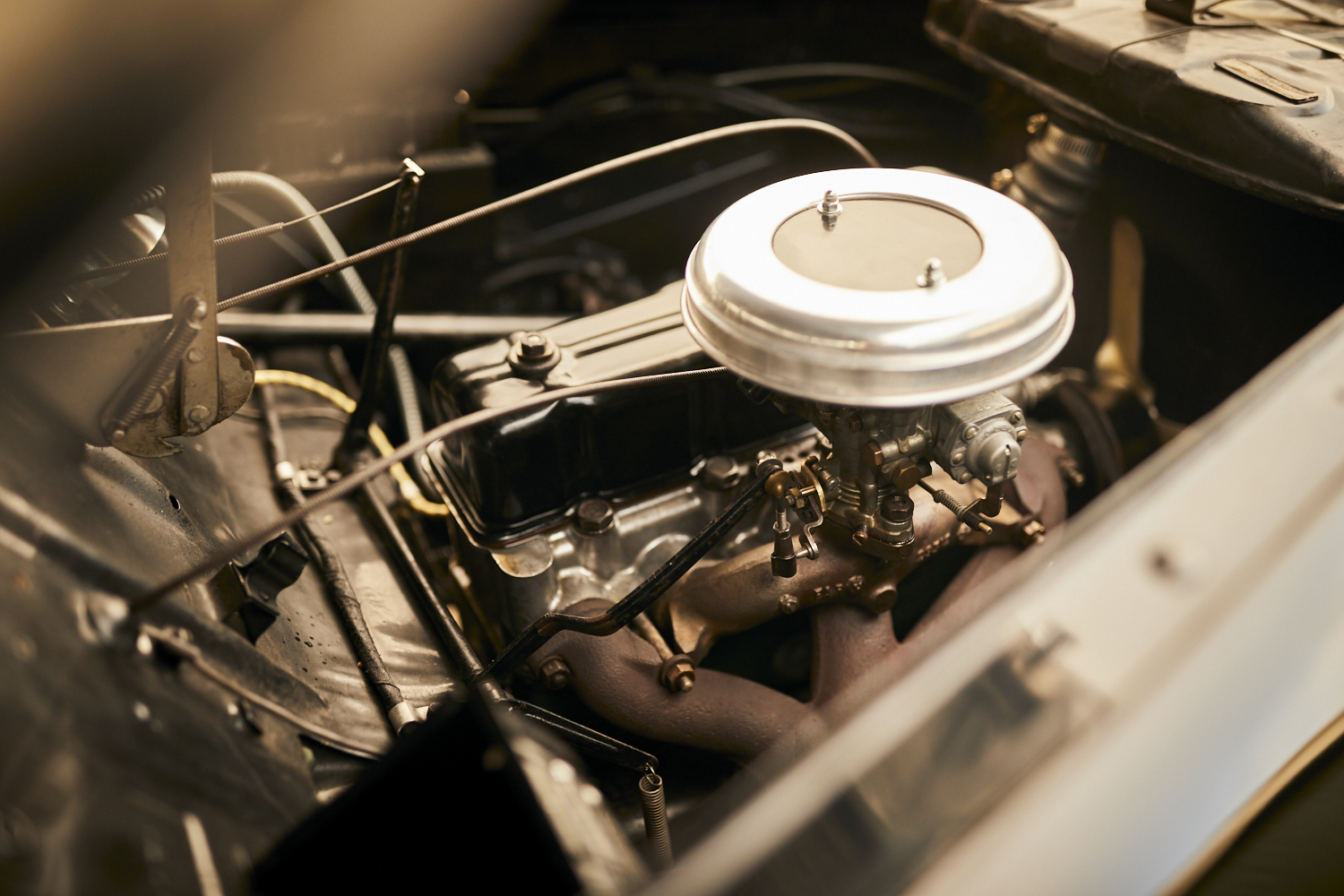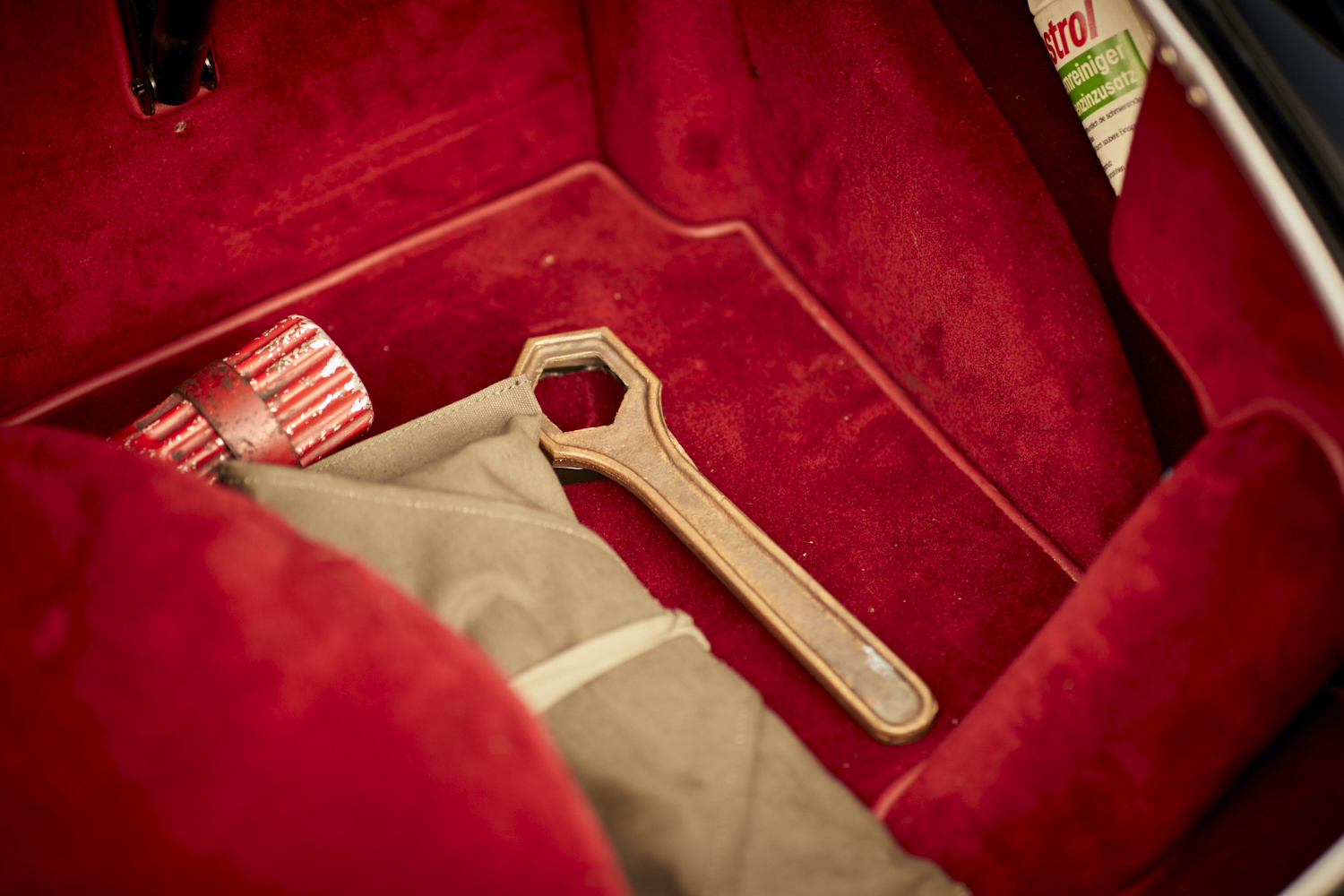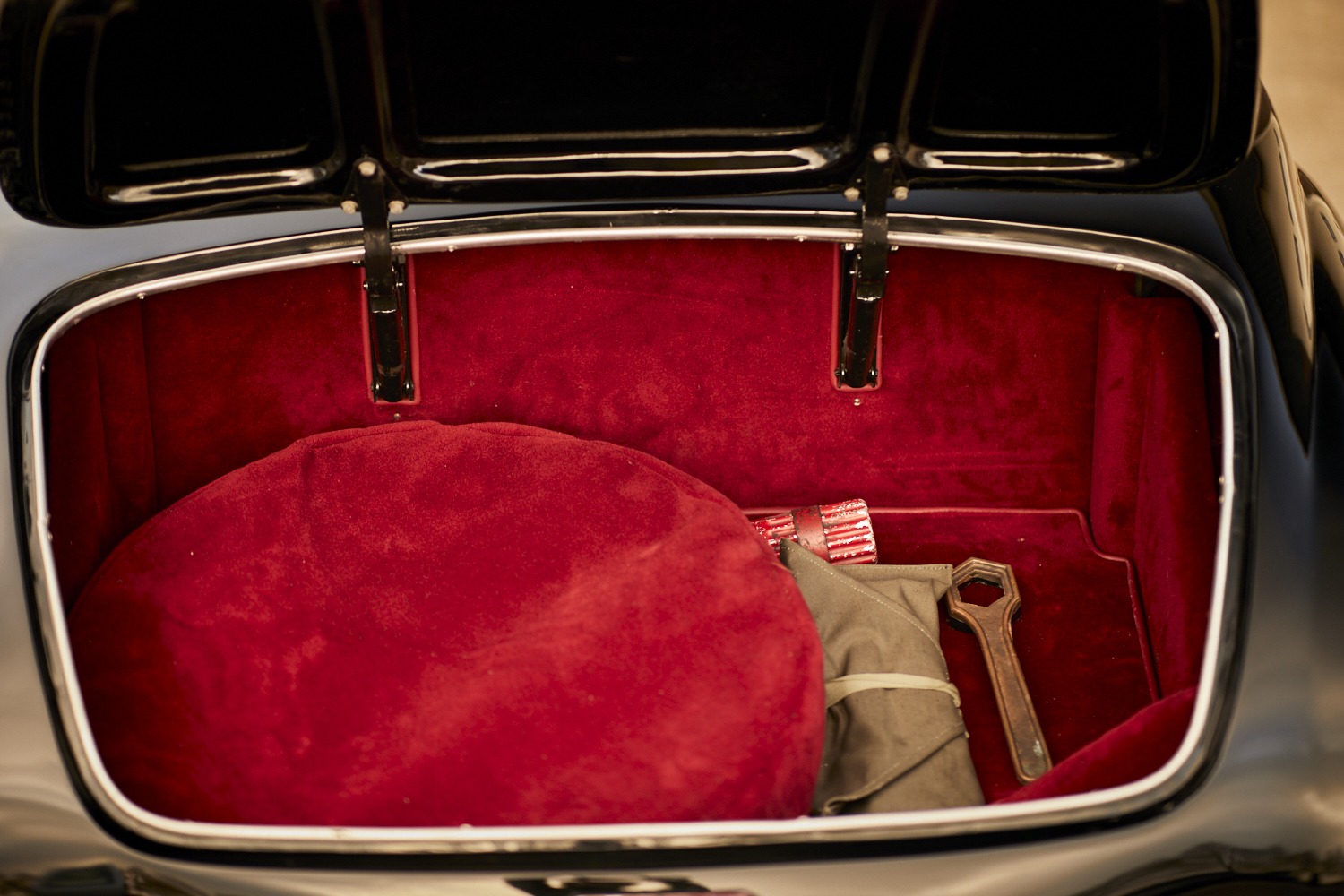Simca 8 Sport Coupé – 1951
The Simca 8 Sport Coupé we currently have in our showroom fits well in between the Facels here. With a typical coupé-shaped roof designed by Jean Daninos on a Farina-styled body and the car itself being built by Facel-Métallon there’s much to like about this little French sports car. With a limited production run of the Simca 8 Sport, and a few Simca 8 Sport Coupés that have the first “Farina” grill and the single front windshield, this is a unique opportunity to acquire a Farina-car built by Facel.
This example has undergone a restoration in the early zero’s and was finished in the original black colour with a red interior. This Simca 8 Sport still has all the original features, including the rare disc wheels and banjo steering wheel. It runs great and is an incredible car to look at inside and out. Its overall design was ahead of its time, but has remained timeless eversince. There’s a great story about the creation of the Simca 8 Sport Coupé. The Simca 8 Sport wasn’t just a Simca 8 Berline with a low and sleek body and the design-DNA it shared with Cisitalia 202 and Ferrari 166 Inter Stabilimenti Farina. It was more a final result of an incredible collaboration of Italian and French designers, engineers, car builders and industrialists. This two-seater exists because of coincidences that simply involved some of the biggest names in the pre- and post war automotive industry from Italy and France. Even Gianni Agnelli himself played a role in this story as an important stakeholder.
While Turin was partly destroyed due to heavy bombardments, including the FIAT factories, Paris had been occupied for four years. Post-war Paris was divided between a wealthy group of Parisians who lived in luxury and the working-class who had barely survived the situation. Industrial production rose again with financial back-up from the French government. Artisans in the specialized workshops and ‘ateliers’ in and around Paris started to do their magic. Jean Daninos already gained experience in mass production techniques in the metal industry and bespoke projects for the automotive industry. Other companies trusted him their orders, including Simca. The Simca factory was just a suburb away from Facel-Métallon’s main plant.
The Simca 8 Sport was the first car Facel completely assembled at its plant in Colombes. From Simca came rolling Simca 8 chassis. The entire bodywork was built in-house by Facel and they did the paintjob and finish too on the several sites it had in this part of Paris. Final assembly also took place at Facel, before the cars were distributed by Simca’s dealer network. It was a great opportunity for Daninos to take his car building business to the next level after he’d only done sub-contracting jobs till then. For everyone involved the Simca 8 Sport was a success especially in the way collaborations had worked out well. Demand had been higher than the production capacity. Together they created a stylish sports car that somehow is much appreciated by the ones who know, but has been undervalued for decades despite the best French build qualities of its era and interesting Italian heritage.
Two years after the infamous “8 Automobiles” exhibition at the Museum of Modern Art in New York, another car exhibition was organised by MoMa. This 1953 exhibition was called “10 Automobiles” and two cars built by Facel-Métallon appeared on display. One was shown outside, a Ford Comète. The other was on display inside, a Simca 8 Sport Coupé, the same model as we offer here. Both cars shared the Farina DNA, just like the Cisitalia 202, which was the star of the show in 1951.
The Cisitalia is called one of the world’s most beautiful cars. Its groundbreaking design changed the face of the post war automobile, especially sports and race cars. And the Simca 8 Sport Coupé was its French counterpart. The Simca was praised for its design and styling by the museum too. MoMa showed the public how the long line of the front fenders merged almost imperceptibly into the doors. In their brochure they highlighted the unusual single, symmetrically shaped side window. The connection between the Simca 8 Sport Coupé and the Cisitalia is fascinating, but it wasn’t mentioned at the time.
Other interesting details about the Simca 8 Sport Coupé kept unknown to the main public as well. Simca fully focussed on women in its advertising and marketing, but Simca’s motorsport activities showed some success too by winning its class in the Monte Carlo rallye. Because of its aerodynamics the Coupé turned out to be quite efficient and fast compared to its contemporary opponents. For today’s standards it’s not a fast car, but back in 1951 this car was twice as fast as a 2cv and only 15 kms slower than the Ferrari 166 Inter with a single carburetor. More interesting are details like the stainless steel ‘chromework’ and bumpers on an aluminium body, which is topped with a metal roof. The symmetrical side windows are an overlooked design gimmick that somehow hasn’t been copied although its optical illusion makes it work in the car’s presence from every angle.
The original 3-piece hub caps on the car in our showroom are an engineering masterpiece that we haven’t seen on any other car. A hexagonal shaped central hub is connected to an outer and inner disc. It requires a special tool that comes with the car, and with this in hand the discs can be tightened or unscrewed without damaging any of the used metalwork. It’s these details that make it a great collector car for Facel enthusiasts and any other who has an eye for quality and design.
Some cars have beauty in all their veins. If you would make a study of the Simca 8 Sport’s design it would probably start with Pininfarina. The Italian coachbuilder and master designer is mentioned in almost every story about this little French sports car. But other than most stories will tell you, you’ll have to dig a little bit deeper to find the missing links in this Simca’s story. If you want to read more about the design study, use the link below.
DESIGN STUDY BY JB CLASSIC CARS
Specifications
Pininfarina design mixed with Jean Daninos’ styling
Aluminium bodied
Typical Facel-features like stainless steel ‘chromework’
Completely built by Facel-Métallon
Original colours (black exterior, red intorior)
Older documented restoration
File with history of previous owners and maintenance
Banjo steering wheel
Double exhaust
Original, hard to find 3-piece hubcaps and special tool
32mm Solex Zenith
Price: € 59.000,-


